

Understanding Indian Culture: A Guide for First Time Travellers

Welcome, dear travellers, to an immersive journey into the heart of Indian culture. As a nation that prides itself on its diverse cultural heritage, India is a melting pot of traditions, languages, religions, cuisines, and much more. With a history spanning thousands of years, it offers a cultural tapestry that is as vibrant as it is intricate.
As you prepare to embark on your Indian adventure, you might feel both excited and overwhelmed. Fear not, for we are here to guide you through this labyrinth of cultural wonders. The aim of this blog post is to provide you, especially those of you visiting for the first time from the USA, UK, Canada, Australia, New Zealand, and other nations, a comprehensive guide to understanding the richness and diversity of Indian culture.
Whether you are a culture enthusiast eager to dive deep into historical narratives, a foodie ready to tantalize your taste buds with an array of Indian flavours, or a spiritual seeker looking forward to a soul-stirring journey, this guide will help you navigate your Indian sojourn.
Table of Contents
First Timer Guide: Rich and Diverse Indian Culture
India, in its true essence, cannot merely be seen or visited; it must be experienced. In the following sections, we’ll delve into linguistic diversity, religious practices, unique cuisines, traditional attire, etiquette and manners, art and entertainment avenues, historical and architectural heritage, the caste system, yoga and meditation traditions, and the vibrant marketplaces that constitute the heart of Indian culture.
Language Diversity
Highlighting the linguistic variety in india.
India, often regarded as the epitome of diversity, displays a linguistic diversity that is as fascinating as it is complex. From the snow-capped peaks of the Himalayas to the tropical shores of Kerala , India is home to several distinct languages and dialects, each with its unique scripts, phonetics, and cultural nuances.
There are 22 officially recognized languages in India, including Hindi, Bengali, Telugu, Marathi, Tamil, Urdu, Gujarati, Malayalam, Kannada, Oriya, Punjabi, Assamese, Maithili, and others. Each state in India typically has its own official language that is spoken in addition to Hindi and English.
Hindi, in the Devanagari script, is recognized as the official language of the Indian central government. However, India’s linguistic landscape extends beyond these languages. There are hundreds of regional languages and dialects spoken across the country, enriching the cultural fabric of India.
Emphasizing the prominence of English as a common medium of communication
Despite this dazzling array of languages, travellers need not worry. English holds a significant position in India due to the country’s colonial history and continues to be an associate official language. English is widely spoken and understood in urban areas and is the medium of instruction in most schools and colleges. Road signs, public notices, and restaurant menus are generally available in English, especially in areas frequented by tourists.
Furthermore, the rise of digital technology has brought English to the forefront of everyday communication in India. Social media, digital news platforms, and the film and television industry all contribute to the widespread use of English, making it a common link among India’s diverse population.
So, while you traverse the lengths and breadths of this country, embracing linguistic diversity can truly enrich your journey. However, rest assured that you will be able to navigate your way comfortably in English. It is quite common for Indians to switch between multiple languages, often within the same conversation. This linguistic phenomenon, known as code-switching, is a testament to India’s incredible capacity for linguistic diversity and adaptability.
- 8 Days Golden Triangle with Varanasi Tour
- 15 Days Rajasthan Mumbai Goa Travel
- 9 Nights 10 Days Kerala Itinerary
- Rajasthan Tour for 10 Days
- 10 Days Himachal Travel Package
- Ladakh With Kashmir Tour 10 Days
- 15 Days North India Travel Package
- Check More India Trip Itineraries
Religions: The Symphony of Faith

From the linguistic medley of India, we now transition to another fundamental aspect of Indian culture – religion. As a cradle of numerous religions, India’s spiritual landscape is incredibly diverse, shaping the way of life for millions of people. In this section, we will provide an overview of the major religions practiced in India and the rich tapestry of customs, traditions, and festivals they give rise to.
The Major Religions in India (Hinduism, Islam, Christianity, Sikhism, Buddhism, Jainism)
India is often considered a spiritual superpower, being the birthplace of religions such as Hinduism, Buddhism, Jainism, and Sikhism. Additionally, it is home to significant populations of Muslims, Christians, and other religious communities.
Hinduism is the most prevalent religion in India, with a majority of Indians identifying as Hindus. This ancient religion is characterized by a complex pantheon of gods and goddesses, a rich body of scriptures, and diverse practices. Hindu temples dot the landscape of India, from grand structures adorned with intricate carvings to small roadside shrines.
Islam , the second most widely practiced religion in India, has significantly influenced Indian architecture, cuisine, and art. The beautifully designed mosques are not just places of worship, but also testament to the rich Islamic heritage.
Christianity arrived on Indian shores with the advent of St. Thomas, one of Jesus Christ’s apostles, and later grew during the colonial period. Churches in India range from quaint structures in hill stations to grand cathedrals in metropolitan cities.
Sikhism , a religion originating in the Indian state of Punjab , is based on the teachings of Guru Nanak and the successive Gurus. The Sikh community is known for its valour, community service, and the practice of langar (community meal).
Buddhism and Jainism , both of which originated in India, may not have a large number of followers in India today, but their spiritual and historical influence is profound. Many ancient temples, monasteries, and pilgrimages related to these religions can be visited in different parts of India.
Explanation of the festivals and practices associated with each religion
It’s worth mentioning that despite the diversity of religions, there is an underlying ethos of tolerance and respect for all paths. India is known for its religious pluralism and is one of the few places in the world where you can witness such a variety of religious practices co-existing. Many Indian festivals , celebrated with great fervour regardless of religious affiliation, reflect this sense of shared cultural heritage.
In the following sections, we’ll take a flavorful journey through India’s unique culinary landscape, explore traditional clothing, delve into social etiquette and mannerisms, and much more. Stay tuned as we continue our exploration of the vibrant and diverse culture that awaits you in India.
Indian Cuisine

As we transition from the realm of faith to the world of flavours, it’s clear that the diversity we’ve been exploring extends to India’s culinary scene as well. The multitude of religions, languages, and traditions in India has given rise to a myriad of cuisines, each boasting a unique blend of flavours and cooking techniques that reflect the country’s rich cultural heritage.
Indian food is not just about curry! The cuisine varies greatly from region to region, with each state – and sometimes even different parts of the same state – having its own distinct dishes. From the rich, butter-laden dishes of Punjab to the spicy delicacies of Andhra Pradesh, the coconut-flavoured cuisine of Kerala to the sweet dishes of West Bengal, the variety is endless.
Northern Indian cuisine is known for its tandoori and korma dishes, delicious bread like naan and paratha, and a range of hearty lentil soups known as dal. Not to forget the iconic biryani, a fragrant rice dish cooked with aromatic spices and meat.
Southern Indian cuisine, on the other hand, is characterized by its use of rice, lentils, and coconut. Dishes like dosa (a thin, crispy pancake), idli (steamed rice cake), sambhar (a tangy lentil soup), and coconut chutney are staples in this region.
Eastern Indian cuisine, especially from Bengal, is known for its seafood and sweets. Must-try dishes include Rasgulla (spongy sweet balls made from milk), fish curry, and puffed rice snacks.
Western Indian food varies within the region – from the vegetarian delights of Gujarat, which are often sweet, to the spicy seafood of Maharashtra and the beach shacks of Goa.
Despite the regional differences, some common elements unify Indian cuisine. The use of a variety of spices and herbs like turmeric, coriander, cumin, and garam masala is widespread, lending Indian dishes their unique flavour.
For the health-conscious and vegan travellers, Indian cuisine offers a plethora of options. India, being predominantly vegetarian, has a multitude of plant-based dishes to choose from. However, caution is advised for those not accustomed to spicy food – while Indian food is flavorful, it can sometimes be quite spicy!
One more thing worth mentioning is the Indian tradition of eating with hands. While cutlery is widely available, you’ll often see locals enjoying their meals with their hands, especially when dining on local cuisine. It’s said that this practice enhances the dining experience and connection to the food.
As we move forward from the world of flavours, our next stop is another integral part of Indian culture – traditional attire. Stay tuned as we delve into India’s rich textile heritage and understand the nuances of Indian dressing norms.
Clothing and Attire
Continuing our journey from the spice-infused world of Indian cuisine, we now arrive at the vibrant sphere of Indian clothing. Indian attire is a colourful testament to the country’s rich cultural heritage and is as diverse as its food and languages.
The traditional Indian attire varies across different regions, reflecting the local culture, climate, and customs. Yet, some forms of clothing have gained national recognition and acceptance.
For women, the sari is one such garment. It is a long piece of unstitched fabric, ranging from five to nine yards in length, draped around the body in various styles. The style of draping often corresponds to a specific region. For instance, the ‘Nivi’ style from Andhra Pradesh has gained popularity all over India.
Another popular outfit for women is the salwar-kameez , also known as the Punjabi suit. This consists of a pair of loose trousers (salwar) and a tunic top (kameez). An adaptation of this outfit, known as the kurta-pyjama , is also commonly worn by men.
In southern India, women often wear lehengas or ghagras – long, flowing skirts paired with a blouse, while men wear dhotis or mundus , which are unstitched pieces of cloth tied around the waist.
For men in the north, especially in rural areas, the traditional outfit is a simple kurta-pyjama set. A kurta is a loose shirt that typically extends to the knees, and it’s worn with a pair of loose trousers called pyjamas.
However, with urbanization and Western influence, the clothing style has evolved significantly. In urban areas and cities, western wear like jeans, t-shirts, dresses, and business suits are common. Nevertheless, traditional attire still holds its place, especially during festivals, weddings, and other ceremonial occasions.
While travelling in India, it’s important to dress modestly, keeping local sensibilities in mind. Women, especially, should avoid revealing clothes. When visiting religious sites, it’s essential to cover your head, shoulders, and legs.
Despite the shift towards Western clothing, the allure of traditional Indian attire remains undiminished. The vibrant colors, intricate patterns, and exquisite craftsmanship of Indian clothes are captivating, and trying them could add an exciting element to your Indian sojourn.
As we move forward, we’ll delve into the fascinating realm of Indian manners and etiquette, an essential aspect to understand and appreciate during your Indian journey. So, stay tuned as we continue our cultural exploration.

Etiquette and Manners
Moving from the vibrant domain of Indian clothing, let’s explore an essential facet of Indian culture – social etiquette and manners. Understanding these norms can provide valuable insights into the Indian way of life and help you navigate social situations during your visit.
Indians are known for their hospitality, with the Sanskrit adage, “Atithi Devo Bhava,” meaning “the guest is equivalent to God,” still holding sway in many parts of the country. As a visitor, you will often be greeted with warmth and friendliness, and invited to partake in local customs and ceremonies.
Here are some social customs and manners that you might encounter during your visit:
Greetings: The traditional Indian greeting is the “Namaste,” where the palms are joined together and held near the heart with a slight bow of the head. This greeting is common across India, transcending regional and religious differences.
Respectful Address: Indians tend to use formal titles when addressing each other. Using ‘Sir’ or ‘Madam’ to address someone you’ve just met is a safe bet. In a casual setting, ‘Bhaiya’ (brother) or ‘Didi’ (sister) is often used.
Shoes: Removing your shoes is a common practice before entering religious places, as well as many Indian homes. It’s considered respectful and is a mark of cleanliness.
Eating Etiquette: As mentioned earlier, Indians traditionally eat with their right hand, especially when consuming Indian cuisine. Using your left hand to eat is often considered impure, particularly in the more traditional parts of the country.
Public Behaviour: Public displays of affection are frowned upon in India, particularly in smaller cities and towns. It’s advisable to maintain decorum in public spaces.
Gift-Giving: If you’re invited to an Indian home, it’s customary to bring a small gift. Chocolates, flowers, or a souvenir from your home country are usually appreciated.
Remember, the key to understanding Indian etiquette is to recognize the diversity. Social norms can vary greatly across different regions, communities, and socio-economic strata. The customs followed in a rural setup might be very different from those in urban areas.
Up next, we’ll be delving into the enthralling world of Indian art and entertainment. Stay tuned as we continue our exploration of the diverse and captivating Indian culture.
Art and Entertainment: The Vibrant Soul of Indian Culture
From understanding the nuances of social conduct, we now turn our attention towards an exciting realm of Indian culture – art and entertainment. A rich tapestry of music, dance, cinema, and art, Indian entertainment is a celebration of the country’s diverse cultural heritage and creative spirit.
Music and Dance: Indian classical music, divided into two main styles – Hindustani (North Indian) and Carnatic (South Indian) – is a key aspect of Indian culture. The music is a complex arrangement of ragas (melodic scales) and talas (rhythmic cycles). Popular instruments include the sitar, tabla, sarod, and flute. Alongside classical music, India also has a rich folk music tradition, with each region having its distinct folk music style.
Indian dance also boasts of vast diversity, from classical forms like Bharatanatyam, Kathak, Kathakali, and Odissi, to various folk dances such as Bhangra from Punjab, Garba from Gujarat, and Lavani from Maharashtra. For travellers, performances of these music and dance forms can be a captivating cultural experience.
Cinema: Indian cinema, often referred to as Bollywood, is another significant aspect of Indian entertainment. Known for its vibrant song and dance sequences, melodramatic plots, and colourful cinematography, Bollywood movies are a cultural phenomenon. Regional cinema, such as Bengali, Tamil, Telugu, and Malayalam films, also play a significant role and has a dedicated audience base.
Visual Arts: Indian visual arts range from traditional Madhubani and Warli paintings to Mughal miniature art and contemporary Indian art. Many cities in India have art galleries showcasing these art forms. For tourists interested in art, these galleries can offer a fascinating insight into the Indian artistic tradition.
Festivals: Indian festivals are a feast for the senses and provide a glimpse into the local culture like no other. From the colour explosion of Holi and the grandeur of Durga Puja to the lights of Diwali and the dance of Navaratri, each festival has its unique charm. Participating in these can provide an unforgettable experience during your visit.
Theatre and Literature: India has a rich tradition of theatre, with forms like Ramleela, Yakshagana, and Jatra popular in different regions. Similarly, India’s literary heritage, with works in numerous languages, is expansive and diverse. Modern Indian literature in English, too, has gained global recognition.
Engaging with Indian art and entertainment can enrich your travel experience significantly, allowing you to immerse yourself in the country’s cultural ethos.
In the next and final section, we will be wrapping up our guide by discussing some practical tips for your journey in India, ensuring that you’re fully prepared for your exciting adventure.
Practical Tips for Ensuring a Smooth Journey
Now that we’ve explored the diverse aspects of Indian culture, from linguistic diversity to the rich tapestry of art and entertainment, let’s conclude our guide with some practical tips. These will help ensure your travel experience in India is smooth, enjoyable, and memorable.
Health Precautions: While Indian cuisine is delicious, the change in diet can sometimes be a shock to the system. Stick to freshly cooked, hot food and avoid street food if your stomach is not used to it. Keep hand sanitizer and wet wipes handy, and remember to only drink bottled water.
Safety: India is generally a safe country to travel to, but like anywhere else in the world, it’s essential to be cautious, especially in crowded places. Be aware of your surroundings and keep your belongings secure. For women travelling alone, it’s advisable to avoid isolated places late at night.
Transportation: India has a vast network of public transportation, including trains, buses, auto-rickshaws, and cabs. Familiarize yourself with the local transport system or use online cab services like Uber or Ola for convenience.
Cultural Sensitivity: Remember to respect the local traditions and customs. Dress modestly, especially when visiting religious sites, and try to learn a few basic phrases in the local language. Indians appreciate it when foreigners make an effort to understand and respect their culture.
Bargaining: Bargaining is quite common in Indian markets. So, if you’re shopping in local markets, don’t hesitate to negotiate. However, ensure that it’s done respectfully and in good spirits.
Visa and Documentation: Ensure that your visa and other travel documents are in order before your journey. The e-Visa facility is available for citizens of many countries, making the process easier.
Connectivity: Wi-Fi is readily available in most hotels, restaurants, and cafes. You can also purchase a local SIM card for mobile internet and local calling. It’s relatively easy and inexpensive.
Climate: India’s climate varies from region to region. While the winters can get quite cold in the north, the south remains relatively warm. Summers can be very hot, especially in the central and northern parts. So, pack accordingly.
Remember, travelling is all about embracing new experiences and cultures. So, keep an open mind, respect the local culture, and most importantly, enjoy the incredible diversity and richness that India has to offer.
We hope this guide proves helpful in your journey and assists in making your Indian sojourn an unforgettable one. Safe travels!
Recommended Reads:
- India’s 4 Majestic Rainforests
- 8 Major Religions in India
- 7 Popular Haunted Hotels in India
- Top 15 Flea Markets in India
- 10 Famous States in India to Visit
- Top 5 Most Famous Toy Trains in India
- 9 Most Scenic Routes to Travel By Vistadome Trains In India
- Top 5 Marine National Parks in India
- 12 Popular Cave Paintings in India
- Top 12 Jainism Pilgrimage Sites in India
- Discovering Hidden Gems: Little-Known Facts About India
- 11 Most Popular Eco Villages in India
- Top 10 Mysterious Temples in India
- 10 Best India Travel Tips for First Timers
- What You Need to Pack for an India Trip
- India’s Top 10 Sacred Travel Destinations
- 8 Famous Temples in India Where Men Are Not Allowed
About The Author
Related Posts

IRONMAN 70.3 Goa India – India’s first Ironman event

Ministry of Tourism has Identified 10 Best Indian Cultural Destination
Leave a comment cancel reply.
Your email address will not be published. Required fields are marked *
Save my name, email, and website in this browser for the next time I comment.
- 10 Essential Phrases You Should...
10 Essential Phrases You Should Learn Before Traveling To India

Fortunately for foreigners in India , English is spoken widely in the country. Where it isn’t spoken, it’s almost always understood. However, here are some essential phrases in Hindi that will help you charm locals, get better deals while shopping and generally have a smoother, more comfortable India tour!
Basic greetings and expressions.
From hello to thank you, the following five expressions will make you sound more cultured in front of locals.
Chances are that you already know this popular greeting. Namaste is a very respectful way of saying ‘hello.’ Pair it with a folded hand gesture and a gentle bow of your head and neck, and locals will be quite pleased with your manners. Namaskar (nah-mas-kar) and pranam (prah-naam) are also popular greetings which mean the same and can be interchangeably used with namaste .
While ‘please’ works in most parts of the country, and is more naturally used than its Hindi counterpart – kripaya (kruh-pah-yaa) – it is still an important word to know, especially if you are traveling deep within rural India . Add it to the beginning or end of your sentences to sound polite and respectful.

Quite similar to the use of ‘please,’ ‘thank you’ is also commonly used around the country – particularly in the south where Hindi isn’t spoken as much. However, dhanyavad (dhuhn-yuh-vaadh) which means ‘thanks’ is a good word to know. Just as with the use of other common English words , you may be considered more respectful if you use the Hindi equivalent. The Urdu word (though interchangeably used with Hindi) s hukriya is also an alternative to ‘thank you’ that you can use around the country.
How Are You?
If you find yourself wanting to chat more with the locals, the Hindi equivalent of ‘How are you?’ – ‘ Aap (you) kaise (how) hain (are) ? ‘ – is a good way to go. If you are asked the same question, you can respond with ‘ Main theek hun ’ which translates to ‘I am fine.’
Nice To Meet You!
The Hindi equivalent of ‘Nice to meet you’ – ‘ Aap (you) se milkar (meet) khushi (happiness) huin’ – is an excellent way to end appropriate conversations. If you have met someone who has truly been helpful and you want to stress how happy you are that you’ve met them, add the hindi equivalent of very – bahuth – to the sentence thus making it ‘ Aap se milkar bahuth khushi huin. ’

Asking For Help
The following expressions will be handy if you’re asking for directions, seeking water, a bathroom or even an English speaker.
Do You Speak English?
‘Kya (what) aap (you) English bolte (speak) hain?’ translates to ‘Do you speak English?’ This expression or question will almost always prompt locals to connect you with the nearest English speaker if they cannot assist you themselves.
Can You Help Me?
‘Kya (will) aap (you) meri (me) madad (help) karenge (do)?’ translates to ‘Will you help me?’ You can add kripaya (please) to make your request for help sound even more polite, urgent and inescapable – thus making the expression ‘ Kya aap kripaya meri madad karenge?’
Where Is The Bathroom?
Kidhar translates to ‘where.’ ‘ Bathroom kidhar hai?’ is therefore, ‘Where is the bathroom?’ You can replace ‘bathroom’ with other words to get directions to wherever it is that you wish to go. For example, if you’re looking to find the railway station you can ask, ‘ Railway station kidhar hai?’

I Want Water
Paani means ‘water.’ If you’re traveling around the country in the summer, this is the single most important word to know! ‘ Mujhe paani chahiye’ means ‘I need water.’ ‘ Paani kidhar hai?’ (meaning ‘Where is water?’) should also do the trick.
How Much Does This Cost?
Shopping is almost always a priority on the lists of tourists visiting India. ‘ Yeh (this) kitne (how) ka hai?’ means ‘How much does this cost?’ While just ‘How much?’ will do in most of urban India, the Hindi version is likely to get you a lower price quote. Bring it down even further by saying ‘ Bahut (very) zyaada (high) , Kum (less) karo (do/make) ‘ which translates to ‘very high, lower it!’
Since you are here, we would like to share our vision for the future of travel - and the direction Culture Trip is moving in.
Culture Trip launched in 2011 with a simple yet passionate mission: to inspire people to go beyond their boundaries and experience what makes a place, its people and its culture special and meaningful — and this is still in our DNA today. We are proud that, for more than a decade, millions like you have trusted our award-winning recommendations by people who deeply understand what makes certain places and communities so special.
Increasingly we believe the world needs more meaningful, real-life connections between curious travellers keen to explore the world in a more responsible way. That is why we have intensively curated a collection of premium small-group trips as an invitation to meet and connect with new, like-minded people for once-in-a-lifetime experiences in three categories: Culture Trips, Rail Trips and Private Trips. Our Trips are suitable for both solo travelers, couples and friends who want to explore the world together.
Culture Trips are deeply immersive 5 to 16 days itineraries, that combine authentic local experiences, exciting activities and 4-5* accommodation to look forward to at the end of each day. Our Rail Trips are our most planet-friendly itineraries that invite you to take the scenic route, relax whilst getting under the skin of a destination. Our Private Trips are fully tailored itineraries, curated by our Travel Experts specifically for you, your friends or your family.
We know that many of you worry about the environmental impact of travel and are looking for ways of expanding horizons in ways that do minimal harm - and may even bring benefits. We are committed to go as far as possible in curating our trips with care for the planet. That is why all of our trips are flightless in destination, fully carbon offset - and we have ambitious plans to be net zero in the very near future.

See & Do
Fun-filled travel experiences to boost your serotonin levels.

Photo Journal: 10 Photos From Jaipur's Ganguar Festival

This Homestay Could Help Save Rajasthan’s Nomadic Camel Pastoralists

A Guide To Madhya Pradesh’s Tiger Reserves

Guides & Tips
The best places to travel in november.

The Top Things To Do And See In Jaipur

Top Tips for Travelling in India

How to spend 10 days in Madhya Pradesh, India

How To Spend a Week in Maharashtra

Film & TV
Embrace the barbie spirit by visiting the world's most colourful cities.

Simran Lal, Founder of Nicobar, On How She Launched Her Lifestyle Brand and Tips On Travelling to India

5 Delicious Indian Dry Bean and Lentil Recipes
Culture trip spring sale, save up to $1,100 on our unique small-group trips limited spots..

- Post ID: 889751
- Sponsored? No
- View Payload
22 things you need to know before visiting India

Dec 15, 2023 • 14 min read
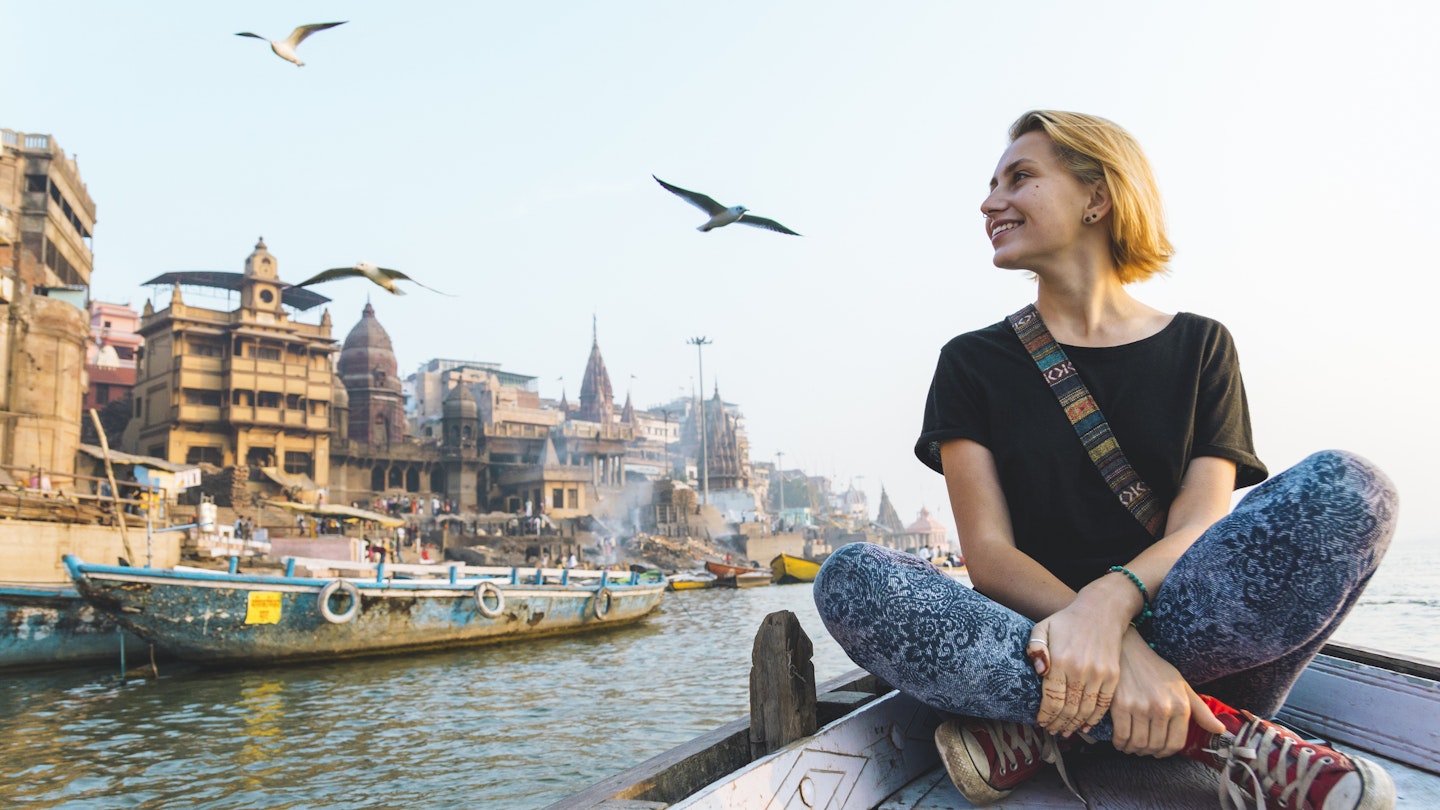
India is a feast for the senses and we've got everything you need to know before you visit © Andrii Lutsyk / Ascent Xmedia / Getty Images
India is a place that overwhelms your senses in the best possible way – nowhere else delivers quite the same barrage of sights, sounds and sensations as this continent-sized country at the heart of Asia.
It would take a lifetime to see all of India , let alone understand every nuance and facet of this nation of 1.4 billion inhabitants. But with a little preparation, you can learn to navigate the richness of this country, from its snow-capped peaks and velvety beaches to its historic temples and luxuriant palaces.
We've collated the top things you need to know about visiting India, but the journey begins before you leave home. Apply for your Indian visa online for a smooth arrival on the subcontinent. Read on for 22 more insider tips that will help make your vacation unforgettable.
1. Plan your trip around the seasons
India has a reputation for being hot and humid, but with beaches, mountains, hills, coastlines and plains all jammed into a relatively small geographical area, the climate is quite diverse. The southwest monsoon brings rainy weather to most of the country from June to September, but this is the best time of year to visit the high-altitude deserts of Ladakh , although depending on the route you take, you risk encountering landslides and floods.
In the far south, there’s also a milder rainy season from October to December. The ideal weather window for travel is from October to May, though temperatures and humidity climb to agonizing levels from March onwards in the run-up to the monsoon. If you find yourself in India in the spring, head to the Himalayan foothills for milder temperatures and good trekking conditions.
2. Get your jabs before you travel
There is no official requirement for vaccinations to enter India (although yellow fever vaccination is needed if you are traveling from a country where the disease is endemic).
That said, it is important that you contact a health professional at least eight weeks before you travel to ensure your jabs are up to date. Vaccinations for diphtheria and tetanus, hepatitis A and B, polio and typhoid are usually recommended, on top of childhood vaccinations for measles, mumps, rubella and varicella.
Vaccinations worth considering for longer trips include Japanese B encephalitis, meningitis and rabies. Monkeys, dogs and cats can all carry the rabies parasite, and infection is fatal if untreated.

3. Take malaria precautions
Depending on where in India you are traveling to, you may want to speak to your healthcare provider about taking a course of anti-malarial tablets. For instance, northeastern and eastern parts of India, as well as the city of Mangalore, have a higher malaria risk.
Always take precautions to avoid mosquito bites – this will also help you avoid dengue fever, a viral infection that is transmitted by mosquitoes to humans. Sleeping under a mosquito net, wearing long sleeves and trousers in light colors, and using a repellent and/or a plug-in mosquito killer with a high concentration of DEET (diethyltoluamide) is advisable.
4. Get insured
Travel insurance is essential for India. Depending on where you travel to, you may find public hospitals are poorly equipped. Additionally, most private clinics and hospitals require payment ahead of treatment. Make sure you are covered for emergency evacuation and also for any adventure activities you plan to get involved in.
If you’re unlucky enough to be a victim of crime, contact the local police station or dial 100 or 112, the national emergency number. You’ll need to get the police to file a report (a “FIR" – First Information Report) to make a claim on your travel insurance.
5. Book ahead for busy times and festivals
India can get very busy from November to February, so affordable accommodation is usually swamped in peak season. It’s a good idea to book ahead, either directly with the venues or via booking aggregator sites such as Agoda and MakeMyTrip .
Also, book train tickets in advance where possible , particularly for popular routes. Tickets can be booked (with a fair amount of hassle) via the government booking site IRCTC or more easily through local booking sites such as 12Go or Cleartrip .
6. Plan your comms before you travel
Many things in India (including train bookings or ordering food online) get easier if you have a local SIM card. Bring an unlocked phone from home (or pick one up locally) and get a phone shop to sign you up for a local pay-as-you-go SIM package on arrival. You’ll need to bring passport photos and photocopies of your passport ID pages to complete the application.
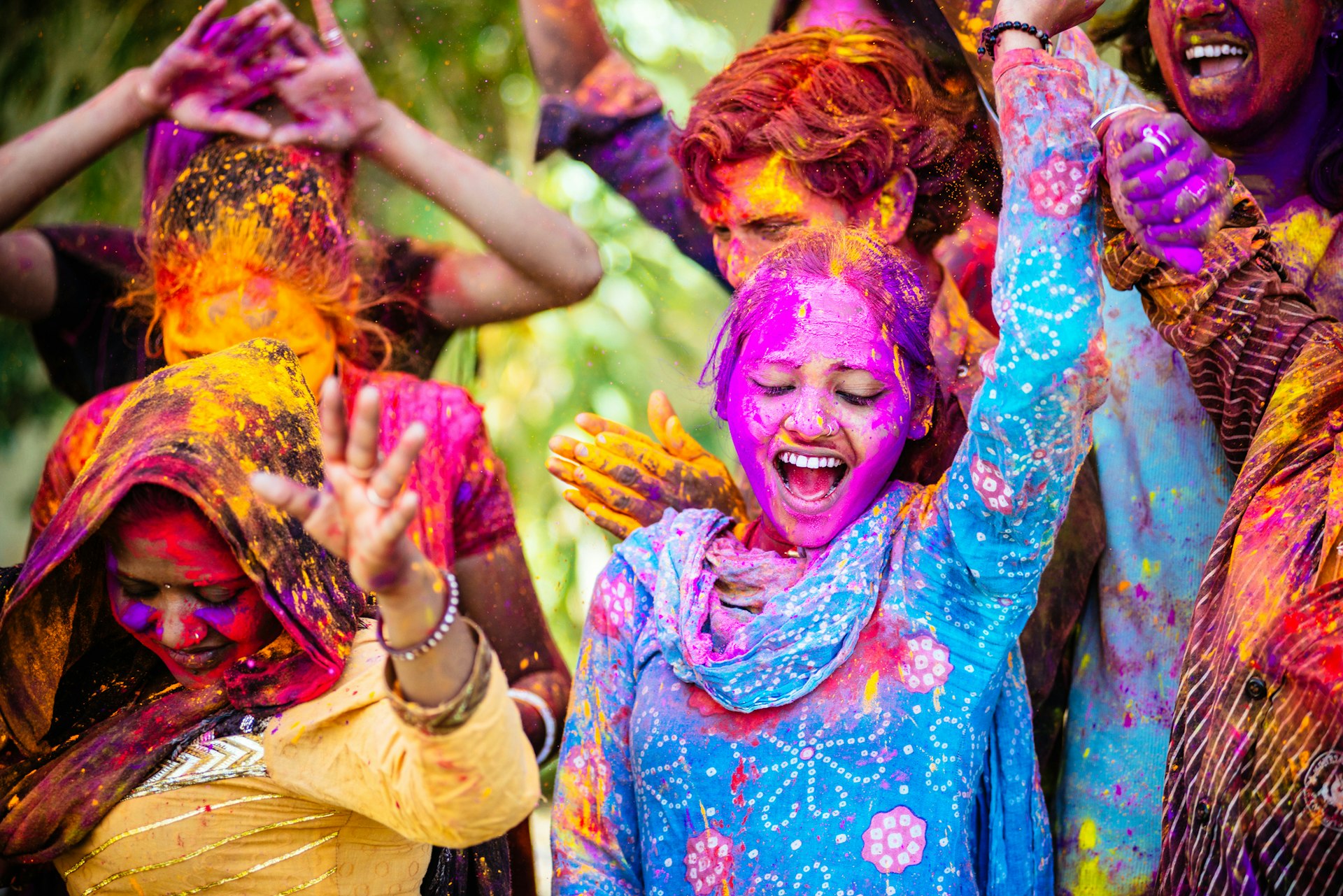
7. Check your lunar calendars
While India officially follows the Gregorian calendar, the major festivals for Hinduism, Buddhism, Jainism, Islam and several other religions follow lunar calendars and fall on different dates from year to year. Always check festival dates before you book your trip (bearing in mind these dates are subject to change); the Indian government maintains a useful online list of public holidays .
8. Learn local etiquette
English is the lingua franca in most metropolitan areas in India, and you’ll get away with polite hellos, goodbyes and thank yous in smaller towns too. However, if you’re traveling in northern India, you can say "namaste" (I bow to you) with your hands together in a prayer-like gesture in front of your chest. Similarly, when meeting Muslims in north India, you can say "salaam alaikum" (peace be with you) – the correct response is "alaikum salaam." Most of the time, it’s the effort that’s welcomed over pronunciation, so don’t be shy!
Shaking hands is a standard business greeting between men, but outside metropolitan regions, men and women rarely shake. Only ever use your right hand. The same rule applies when passing things to people – including money.
If you get invited to someone’s home, bring a small gift (flowers or sweets are always a safe bet) and remove your shoes before entering. It’s polite to eat and drink what you are offered, even if you don’t really fancy it.
9. Dress modestly
Depending on where in India you are, modesty is taken seriously – especially for women. Travelers of any gender will have an easier time if they wear loose-fitting clothing that covers their legs and arms. Swimwear is only appropriate for the beach – although it is not uncommon to see locals swim fully clothed. To fit in, consider investing in a kurta pyjama (a traditional garment resembling a long shirt and loose trousers for men) or a salwar kameez (a long shirt, loose trousers and scarf for women).
10. What to eat and how to eat it
Many religions in India have their own dietary rules. Muslims avoid pork, many Hindus avoid beef, and some Hindus and Buddhists are vegetarian or vegan. Many Jains are vegetarians who avoid some vegetables (most notably onions, garlic and potatoes) and who try to avoid causing harm to all living creatures. These rules mean vegan and vegetarian food is often easy to find in India.
Eating with your hands is the norm in many restaurants, particularly in parts of southern India. Take your cue from other patrons in the restaurant, and remember to eat with your right hand. Mix rice and curry into balls with your fingers and push it into your mouth with your thumb. Some thalis (plate meals consisting of multiple dishes served in tandem) are served not on a plate but on a washed and flash-heated banana leaf.
11. Haggling is not a game of life and death
Haggling for a fair price when buying things – in street stalls and open-air markets – is a way of life in India. Although it can sometimes be a frustrating experience, losing your temper is extremely bad form – if you can’t agree on a price with the vendor that you are both happy with, politely decline and shop somewhere else.
The rules of the game are as follows. The vendor will quote you a price that is more than the item is worth, then you’ll come back with a counter-offer, working up from there until you reach a mutually agreeable figure.
The “walking away” trick may bring a few last-minute adjustments, but before long, you’ll reach a threshold that the vendor won’t go below. Throwing in extra items may bring a discount on the overall cost. Many travelers prefer not to haggle in places where the money goes directly to artisans.
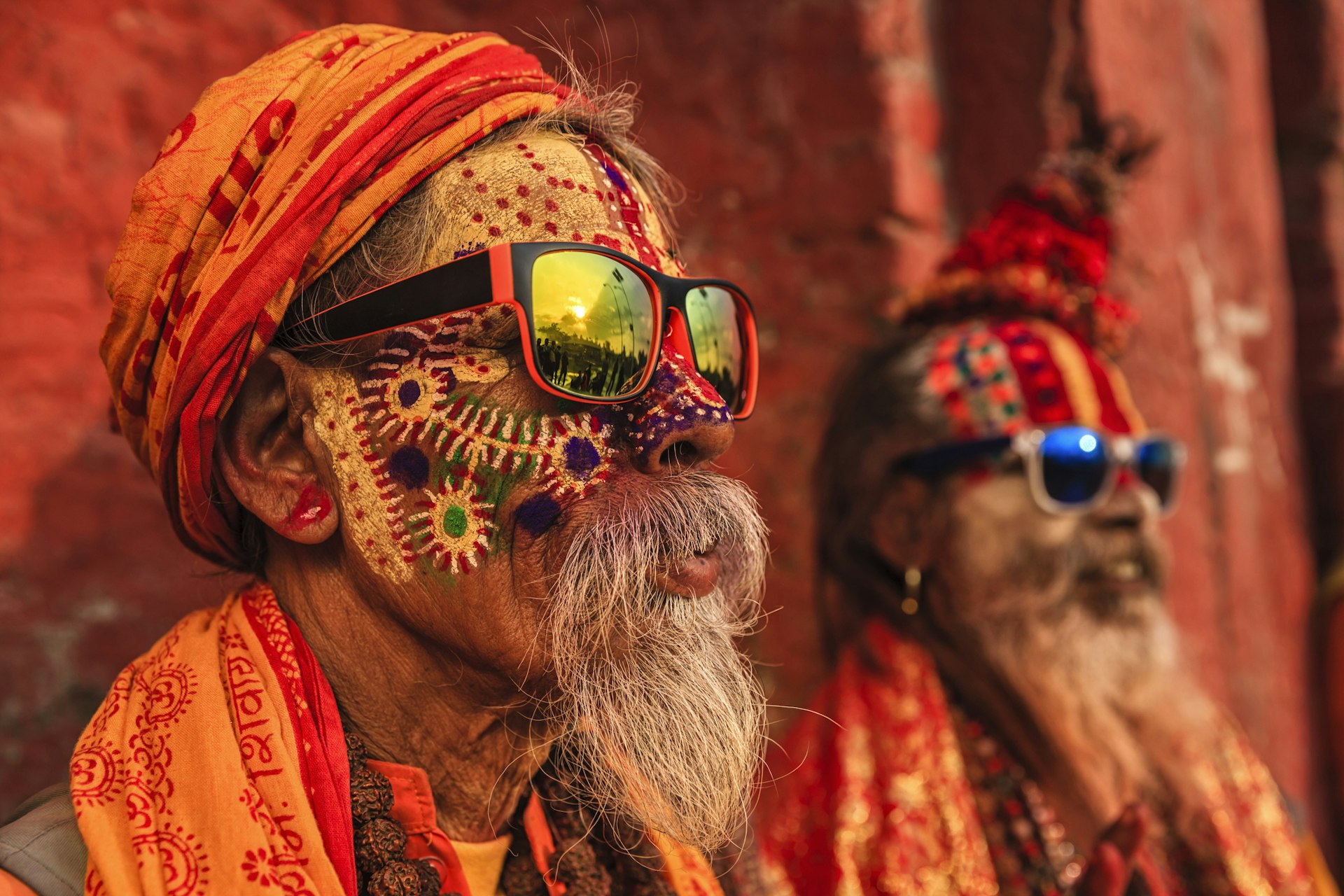
12. Respect etiquette at religious sites
Religion is taken very seriously in India, so it pays to know the rules and expectations for visits to temples, mosques, monasteries, gurdwaras (Sikh shrines), synagogues and churches. Always check if you are allowed to enter – some temples and mosques are closed to people who don’t follow the faith. Mosques may also be closed to visitors during prayers or on Fridays.
If asked to do so, remove your shoes before entering any religious building, and be prepared to cover your head with a scarf or shawl. Generally, always cover your legs and arms (a sarong can be handy as an emergency cover-all). Some temples also ban leather goods, and many religious sites do not allow photography.
Avoid pointing the soles of your feet towards a person or deity – this is considered disrespectful. The same goes for touching any person or effigy on the head. It is conventional to walk around Buddhist and Hindu shrines in a clockwise direction, in a ceremonial circuit known as a parikrama .
Making an offering or leaving a donation is often expected – locals always offer something, but be wary of people waving receipts showing huge donations. Giving something is appropriate, but don’t feel pressured into leaving large sums.
13. Giving alms is common but up to you
The giving of alms has a long history in India, and foreigners can expect to be approached regularly with requests for money. Whether you give or not is a personal choice, but many Indians give on a daily basis, particularly when visiting temples and mosques. Be aware that some requests for money will be scams, and you may be able to do more good by giving your time or cash to charity or aid organizations you’ve taken time to research, rather than handing out cash.
14. Respect local social attitudes
India has complex social rules about respect for elders. Depending on where you are traveling to, older people are often greeted with the honorific “auntie” or “uncle,” and the ending ji may also be added to someone’s name as a sign of respect.
Outside bigger cities, India can be quite conservative when it comes to interactions between unmarried men and women. Also, most parts of India are conservative when it comes to same-sex relationships. Whatever your sexuality, it’s best to avoid public displays of affection.
15. Street harassment is unfortunately common
Although harassment can happen anywhere, parts of India are constantly in the news owing to a lack of women’s safety. Beyond long, unwelcome stares and persistent attempts to start a conversation, more serious assaults are also a risk. Groping is common in crowds (particularly during festivals).
Exercise caution like you would anywhere else, and remain alert. Never get into a taxi or auto rickshaw containing anyone other than the driver, and avoid walking alone in quiet areas, particularly at night. Decline offers of food or drinks from strangers.
If traveling by public transport as a woman, it's best to seek out train carriages and designated seating reserved for women. Wearing a wedding ring (even if not married) and using dark sunglasses and headphones can buy you some privacy on public transport. If you are being hassled, drawing loud attention to the intrusion may encourage others to come to your aid.
16. Keep track of security situations in India
India has seen deadly attacks by separatist and Marxist groups and Kashmiri insurgents. Monitor the local news and be alert for suspicious behavior, particularly around major tourist sites. Always check the security situation before traveling to Srinagar and the Kashmir Valley in case of flare-ups of unrest. Strikes, demonstrations and protests are also best avoided, as violence is a risk. It goes without saying but in the event of trouble, obey local curfews and stay inside – your hotel is probably the safest place to be.
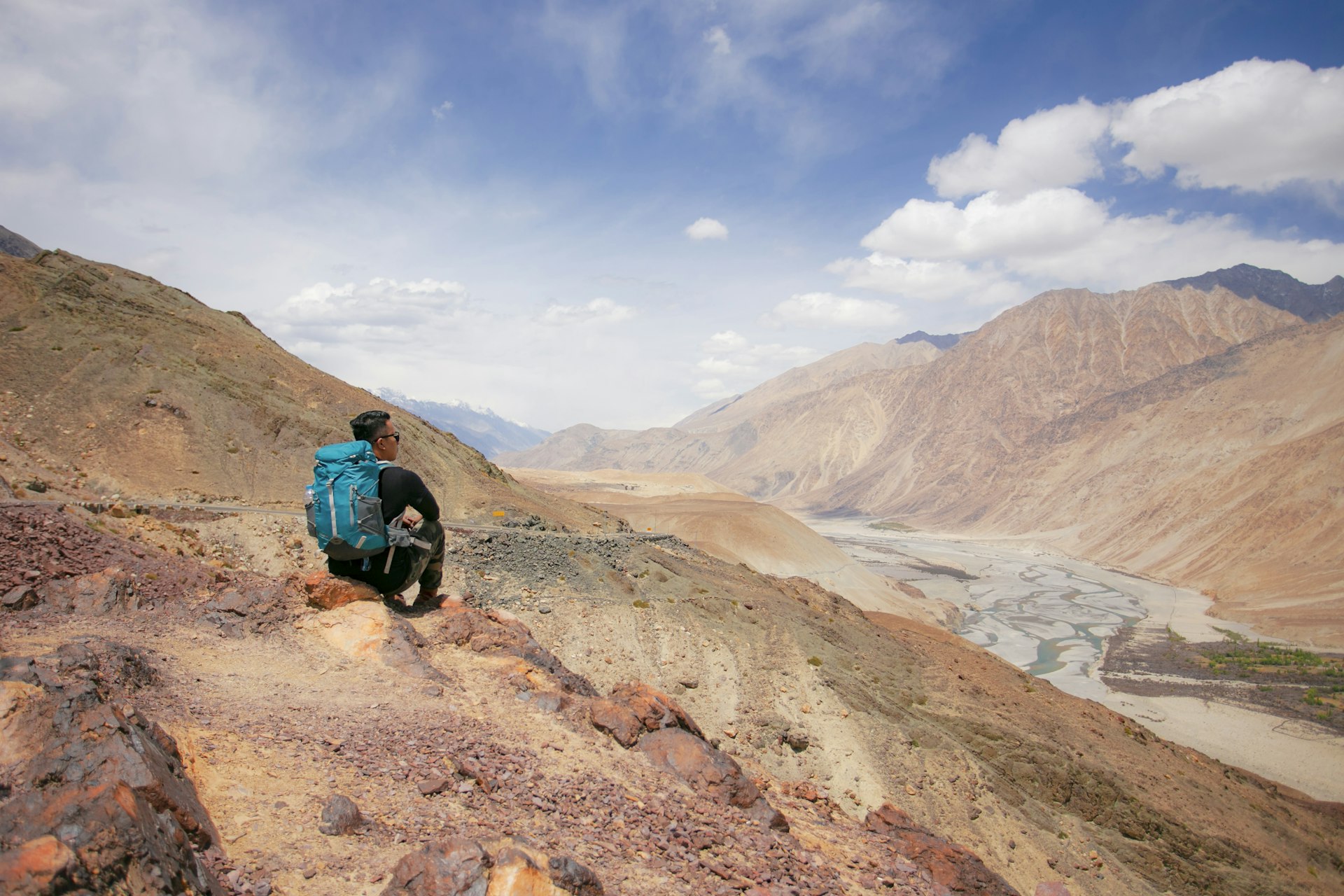
17. Take the altitude seriously when hiking
Acute Mountain Sickness (AMS) is a risk when traveling above 2500m (8202ft), which covers most of the Indian Himalayas . AMS can be fatal, so always ascend slowly and take rest days to allow your body to acclimate to significant elevation changes. If you begin to feel ill while hiking in the mountains, stop, and if your symptoms don’t improve, descend immediately.
18. Familiarize yourself with local rules and regulations
India has a few laws and regulations that visitors might be unfamiliar with. For instance, taking photographs of bridges, the periphery of military camps and border crossings – or flying drones over them – is considered a serious security issue.
When traveling by plane internally in India, you may be asked to surrender batteries from devices in your cabin bags. Smoking is banned in most public places, and a few states also have bans on the consumption of beef – killing or injuring a cow in a road accident, even accidentally, can lead to violent reprisals.
To avoid sticky situations, take the time to research where you’re going, and talk to staff at your hotel or hostel or your B&B host for advice on things to be aware of.
19. Steer clear of drugs
India may have a reputation amongst travelers as a place to push boundaries, but its drug laws are strict. Possessing even small amounts of drugs for personal use can lead to a prison sentence.
Some religious groups are permitted to consume marijuana for ceremonial purposes, but that often doesn’t extend to tourists. You can, however, find bhaang – a marijuana mixture made with the leaves (rather than the bud) of the cannabis plant – at government-approved bhaang shops.
20. Avoid the tap water
The tap water in India is not potable. Drinking or brushing your teeth with it can be a fast track to stomach troubles – the most common illness tourists experience in India. Stick to purified or bottled water (or even better, purify your own to avoid contributing to India’s plastic waste mountain).
The water rule extends to ice (be wary of ice in drinks and ice cream) and to uncooked foods, particularly salads and dishes such as coriander chutneys, which may have been washed with contaminated water. When eating fruit, stick to things you can peel or wash thoroughly yourself, and be cautious of freshly prepared juices. Hot drinks are generally fine, so drink your fill of chai (milky tea, often spiced and sweet).

21. Watch local news to keep track of natural disasters
Some geographical areas in India are prone to natural disasters, and the risk is higher in certain seasons. Hilly areas of Himachal Pradesh, for instance, often see flash flooding and landslides during the monsoon. Be alert to signs of natural disasters and keep an eye on the local news so you know which areas to avoid. Follow the Indian Meteorological Department’s website as well as their social media handle for timely updates.
If you are caught up in a natural disaster, follow the advice of emergency workers and try to leave the area quickly.
22. Spot the scams
India has a reputation for scams designed to separate tourists from their money, and touts and confidence tricksters can often be found where tourists gather. Get tourist information and make bookings at official offices, rather than “tourist offices” you have been led to by people offering unsolicited help.
If anyone steers you to a hotel, shop or other establishment without you asking, they may be angling for a commission, which will be added to the price you pay. Be dubious of claims that the place you want to go is “closed” – always check yourself to be sure.
Exercise common sense and be wary of deals that sound too good to be true – for example, the gem scam, where travelers are tricked into buying worthless gems to “sell at a profit back home.”
This article was first published March 2022 and updated December 2023
Explore related stories
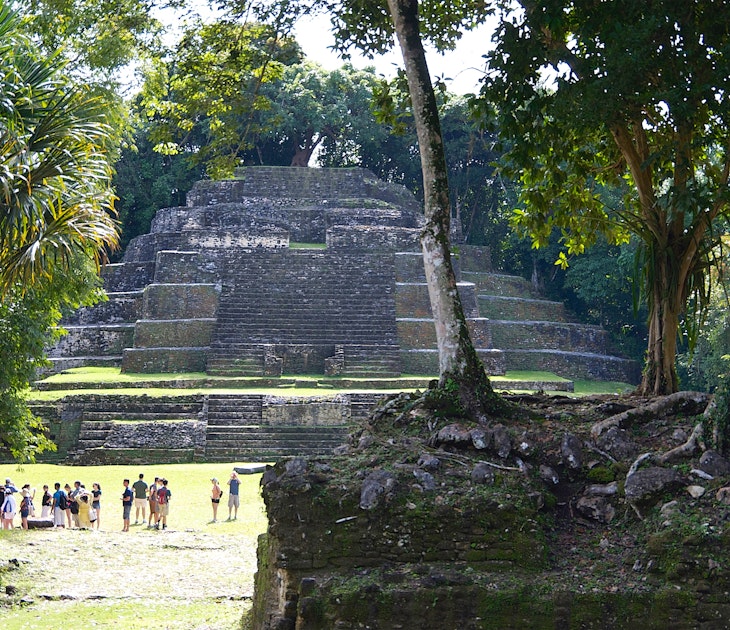
Destination Practicalities
Jan 11, 2024 • 4 min read
Here's what you need to know about visa requirements ahead of travel to Belize.

Jan 5, 2024 • 20 min read

Jan 2, 2024 • 8 min read

Dec 27, 2023 • 8 min read
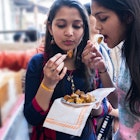
Dec 20, 2023 • 11 min read
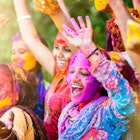
Dec 13, 2023 • 7 min read
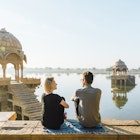
Dec 11, 2023 • 14 min read
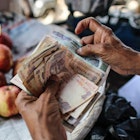
Dec 1, 2023 • 4 min read

Nov 21, 2023 • 6 min read

Nov 7, 2023 • 8 min read
The Language Of Indian Travelogues: Exploring The World
Join us as we embark on a captivating journey through the rich and diverse language of Indian travelogues. On IndianCulture.com, we uncover the hidden linguistic and literary gems of India, from the ancient influence of Sanskrit to the echoes of classical epics and the vibrant voices of contemporary authors. Through the lens of travelogues, we delve into the vast expanse of India’s literary heritage, celebrating the power of words to transport us to new worlds and expand our horizons. Get ready to explore the world through the language of Indian travelogues.
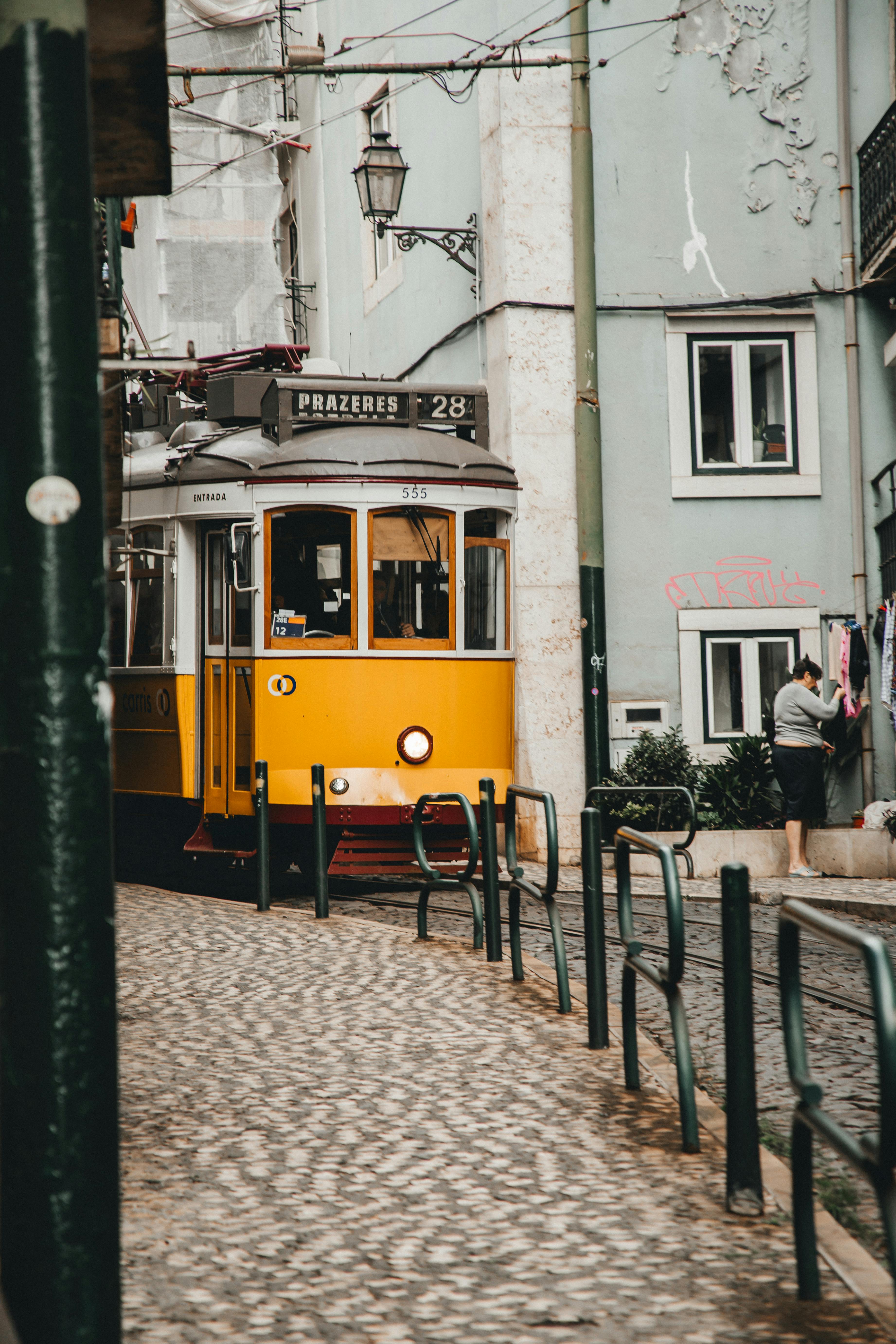
Table of Contents
The Influence of Sanskrit
Sanskrit, often referred to as the mother of all Indian languages, has played a significant role in shaping the linguistic landscape of India. Its influence can be traced back to ancient times when it served as the medium of communication for religious and spiritual texts. The profound impact of Sanskrit on Indian languages, including those used in travelogues, cannot be overstated.
The roots of Indian languages
Indian languages such as Hindi, Bengali, Tamil, Marathi, and many others, owe their existence, structure, and vocabulary to Sanskrit. Sanskrit has provided a solid foundation upon which these languages have evolved over centuries. The grammatical rules, syntax, and vocabulary of Sanskrit have served as the building blocks for the development of Indian languages.
When it comes to travel literature, the impact of Sanskrit becomes evident in the usage of words, phrases, and idioms derived from this ancient language. It gives Indian travelogues a unique and distinct flavor that sets them apart from travel narratives in other parts of the world.
The importance of Sanskrit in Indian travelogues
Sanskrit has had a profound influence on travelogues in India. It has enriched the language used in these narratives, making them more vibrant, descriptive, and evocative. Sanskrit words and phrases can often be found sprinkled throughout Indian travelogues, adding depth and complexity to the narratives.
Furthermore, Sanskrit has also influenced the style and structure of Indian travelogues. The use of Sanskrit poetic meters, such as the shloka, in travelogues is not uncommon. This adds a lyrical quality to the narratives, making them more engaging and aesthetically pleasing for the readers.
Classical Epics and Travel Literature
Two of the most significant and influential works in Indian literature, the Mahabharata and the Ramayana, have had a profound impact on travelogues in India.
The Mahabharata and its impact on travelogues
The Mahabharata, an epic tale of war, love, and destiny, has inspired generations of Indian writers and poets. Its influence can be seen in various forms of literature, including travelogues. The epic’s vivid descriptions of landscapes, cities, and mythical places have provided a rich source of inspiration for travel writers.
In Indian travelogues, references to the Mahabharata can often be found, describing the places mentioned in the epic. The travel writers not only explore the physical aspects of these places but also delve into the deeper meanings associated with them, as narrated in the Mahabharata. This interplay between mythology and real-world exploration adds an intriguing dimension to Indian travelogues.
The Ramayana and its influence on travel literature
Similar to the Mahabharata, the Ramayana has also left an indelible mark on Indian travel literature. The epic’s narrative, which follows the journey of Prince Rama in search of his wife Sita, has captivated the minds of readers for centuries. The vivid descriptions of landscapes, forests, and ancient cities have served as a source of inspiration for travel writers.
Indian travelogues often draw upon the imagery and symbolism present in the Ramayana to craft their narratives. The experiences of travelers in these travelogues mirror the trials and tribulations faced by the characters in the epic. This connection between mythology and travel adds depth and meaning to Indian travel literature.
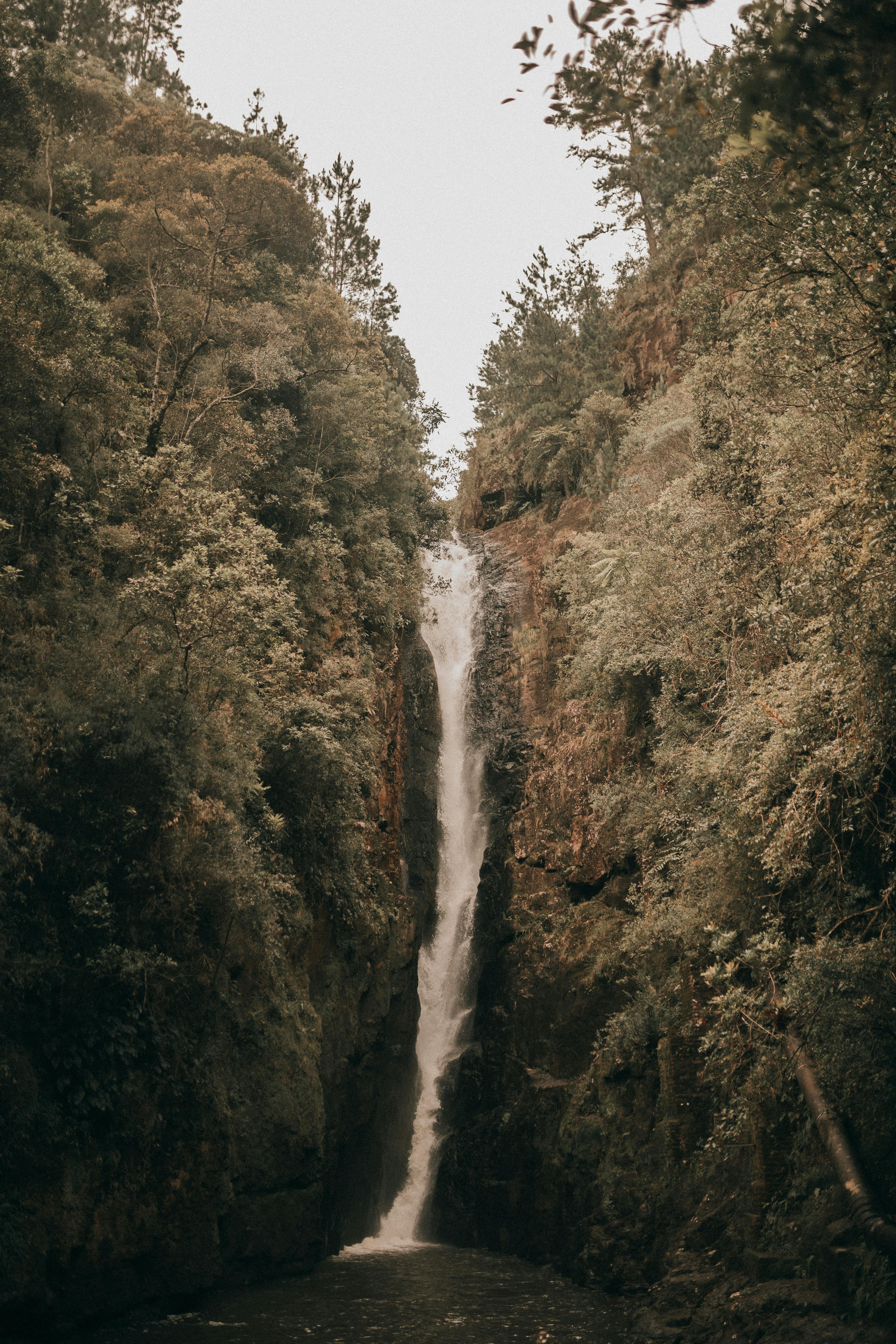
Contemporary Authors and their Travelogues
India has a rich tradition of travel literature, with many prominent authors leaving their mark in this genre. These authors bring their unique perspectives and experiences to their travelogues, offering readers a glimpse into the diverse and vibrant culture of India.
Prominent Indian authors who have written travelogues
Several Indian authors have made significant contributions to the field of travel literature. Writers like R.K. Narayan, Arundhati Roy, Amitav Ghosh, and Pico Iyer have all penned captivating travelogues that explore different facets of Indian society and culture.
These authors not only provide detailed accounts of their own travels but also delve into the historical, social, and cultural contexts of the places they visit. Their travelogues act as cultural mirrors, reflecting the diverse landscapes and traditions of India.
The unique perspectives of Indian authors in travel literature
One of the distinctive features of Indian travelogues is the perspective offered by Indian authors. Having grown up in the country, these authors possess an inherent understanding and familiarity with the cultural nuances and subtleties of the places they write about.
Indian authors often bring a sense of nostalgia, humor, and empathy to their travelogues, making them both relatable and captivating. Through their writings, they aim to evoke a sense of pride and appreciation for the diverse tapestry of Indian culture, while also shedding light on the challenges and struggles faced by its people.
The Role of Indian Language in Travelogues
India is a linguistically diverse country, with thousands of languages and dialects spoken across its vast expanse. This linguistic diversity has played a significant role in shaping Indian travelogues, adding a distinct regional flavor to the narratives.
The use of regional Indian languages in travelogues
Indian travelogues often incorporate regional languages, such as Tamil, Bengali, or Marathi, depending on the author’s background and the region being explored. These regional languages not only enhance the authenticity of the narratives but also provide a glimpse into the linguistic richness of different parts of India.
By blending regional languages with Hindi or English, Indian travel writers are able to capture the nuances and intricacies of the local cultures and traditions. This linguistic diversity adds depth and complexity to the narratives, making them more immersive and engaging for the readers.
The challenges and advantages of writing travelogues in multiple languages
Writing travelogues in multiple languages presents both challenges and advantages for Indian authors. On one hand, it allows them to connect with a wider audience, catering to readers who prefer one language over another. It also enables them to capture the essence of different regions more accurately, as each language carries its own cultural connotations.
On the other hand, writing in multiple languages can be a daunting task, requiring the author to be proficient in each language they choose to employ. It also requires careful consideration of the target audience and the language preferences of the readers. Despite these challenges, the use of multiple languages in Indian travelogues adds depth, authenticity, and richness to the narratives, making them truly unique.

Famous Indian Travelogues
Indian travel literature boasts several famous and influential travelogues that have made a lasting impact on readers both within and outside of India. These travelogues offer a wide range of perspectives on Indian culture, society, and the diverse landscape of the country.
Pilgrim’s India by Devdutt Pattanaik
“Pilgrim’s India” by Devdutt Pattanaik is a delightful exploration of the various pilgrimage sites in India. The book takes readers on a spiritual journey, unraveling the mythologies, rituals, and historical significance associated with each place. Through vivid descriptions and engaging storytelling, Pattanaik brings the pilgrimage experience to life, immersing readers in the rich tapestry of Indian spirituality.
From Heaven Lake: Travels Through Sinkiang and Tibet by Vikram Seth
Vikram Seth’s “From Heaven Lake” is an enchanting account of his journey from China’s Sinkiang region to India via Tibet. The book offers a unique perspective on the landscapes, cultures, and people encountered along the way. Seth’s writing is both poetic and insightful, capturing the essence of the places he visits and the challenges he faces during his travels. “From Heaven Lake” provides a captivating glimpse into the lesser-known regions of Asia, as seen through the eyes of a perceptive and empathetic traveler.
Around India in 80 Trains by Monisha Rajesh
Monisha Rajesh’s “Around India in 80 Trains” is a quirky and humorous travelogue that takes readers on a train journey across India. Rajesh explores the country’s vast railway network, immersing herself in the diverse cultures and landscapes that pass by her window. Through her witty observations and vivid storytelling, she provides a fresh perspective on India, delving into the idiosyncrasies and charm of train travel in the country. “Around India in 80 Trains” is a delightful read that captures the essence of India’s love affair with trains and the unique experiences they offer.
The Cultural Impact of Indian Travelogues
Indian travelogues not only serve as a means of exploration and adventure but also play a crucial role in promoting tourism and preserving indigenous cultures.
Promoting tourism in India through travelogues
Indian travelogues act as powerful tools in promoting tourism and showcasing the beauty and diversity of the country. Through vivid descriptions, personal anecdotes, and engaging narratives, these travelogues inspire readers to embark on their own journeys of discovery.
Travel writers often highlight lesser-known destinations, offbeat experiences, and hidden gems, encouraging travelers to venture beyond the well-trodden tourist paths. By shining a spotlight on these unique aspects of India, travelogues contribute to the growth of sustainable and responsible tourism, ensuring that local communities and cultures benefit from tourism activities.
Preserving indigenous cultures through travel literature
Indian travelogues also play a crucial role in preserving indigenous cultures and traditions. Travel writers often immerse themselves in local communities, interacting with locals, and experiencing their way of life firsthand. By documenting and sharing these experiences, travelogues help preserve and promote the rich cultural heritage of India.
Through their writings, travel authors shed light on the unique customs, rituals, and beliefs of various communities, raising awareness and fostering appreciation for the diversity that exists within India. By doing so, these travelogues contribute to the preservation and celebration of indigenous cultures, ensuring that they continue to thrive for future generations.
The Language of Indian Travelogues: A Comparative Analysis
The language used in Indian travelogues differs in many ways from that of Western travelogues. This difference can be attributed to several factors, including linguistic diversity, cultural context, and narrative style.
Comparing the language used in Indian and Western travelogues
Indian travelogues often incorporate a mix of Hindi, regional languages, and English, reflecting the linguistic diversity of the country. This linguistic variety adds depth and vibrancy to the narratives, allowing readers to immerse themselves in the local cultures and traditions being described.
In contrast, Western travelogues typically use a single language, usually English, to convey the experiences of the traveler. While this approach ensures consistency and ease of understanding for readers, it may sometimes result in a loss of the unique nuances and flavors of the local cultures being explored.
The influence of Indian languages on global travel literature
Indian travelogues, with their rich linguistic tapestry, have had a significant influence on global travel literature. The use of regional languages, Sanskrit-derived words, and poetic elements in Indian travelogues has inspired authors from around the world to adopt similar techniques in their own writings.
Furthermore, Indian travelogues offer a unique perspective on travel and exploration, challenging the dominant Eurocentric narratives that have historically dominated the genre. By presenting a non-Western worldview, Indian travelogues contribute to a more inclusive and diverse representation of travel experiences in global literature.
The Evolution of Indian Travelogues
Indian travel literature has evolved significantly over the years, reflecting the changing trends, themes, and narratives in society.
Traditional vs. contemporary Indian travelogues
Traditional Indian travelogues focused mainly on the exploration of religious sites, historical landmarks, and natural wonders. These travelogues often followed a structured format, providing detailed descriptions and historical context for each place visited.
In contrast, contemporary Indian travelogues embrace a more personal and introspective approach. Travel writers now delve deeper into the social and cultural aspects of the places they visit, exploring the lived experiences of the locals and shining a light on social issues. These contemporary travelogues offer a more nuanced and holistic understanding of India, capturing the multifaceted nature of the country.
The changing themes and narratives in Indian travel literature
Indian travel literature has diversified to encompass a wide range of themes and narratives. Travelogues now explore topics such as eco-tourism, adventure travel, culinary experiences, and solo female travel, among others. This shift in focus reflects the changing aspirations and interests of both the authors and the readers.
Additionally, there has been a growing emphasis on experiential travel, with travel writers actively seeking out authentic and immersive experiences. This trend has led to a deeper engagement with local communities, resulting in narratives that are not only informative but also transformative, challenging the readers’ perspectives and inspiring them to explore the world in new and meaningful ways.
Indian Travelogues as a Reflection of Society
Indian travelogues serve as a powerful reflection of the social issues and cultural diversity present in Indian society. These narratives offer a glimpse into the complex realities of the country, shedding light on the challenges and triumphs of its people.
Social issues and cultural diversity in Indian travelogues
Indian travelogues often address social issues such as gender inequality, caste discrimination, environmental degradation, and socioeconomic disparities. Travel writers bring these issues to the forefront, highlighting the ways in which they impact the lives of individuals and communities across India.
Additionally, Indian travelogues celebrate the cultural diversity of the country, showcasing the myriad languages, religions, customs, and traditions that coexist harmoniously. Through their writings, authors strive to create empathy and understanding, fostering a sense of unity and appreciation for the diverse society that is India.
The representation of Indian society through travel writing
Travel writing plays a crucial role in shaping the representation of Indian society, both within the country and abroad. Indian travelogues challenge stereotypes and create a more nuanced portrayal of India, showcasing its complexities and contradictions.
By highlighting the voices of marginalized communities, travel writers aim to challenge societal norms and instigate positive change. Their narratives provide a platform for underrepresented voices, allowing readers to gain a deeper understanding of the challenges faced by these communities and inspiring them to contribute to creating a more just and inclusive society.
The Future of Indian Travelogues
With the advent of technology, the landscape of travel writing is rapidly changing. Digital platforms and social media have opened up new avenues for travel writers to share their experiences and reach a wider audience.
The rise of digital travelogues in India
Digital travelogues, in the form of blogs, vlogs, and social media posts, have gained immense popularity in recent years. These platforms allow travel writers to share their experiences in real-time, creating a sense of immediacy and interactivity for the readers.
Digital travelogues also provide a platform for aspiring writers to showcase their talent and gain recognition. With the democratization of publishing and the ease of self-publishing, more and more individuals are turning to digital platforms to share their travel experiences and perspectives.
The potential impact of technology on the language of travelogues
Technology has the potential to revolutionize the language of travelogues. With the rise of translation software, travel writers can now reach a global audience, transcending language barriers. They can engage with readers from different parts of the world, sharing their experiences and fostering a greater sense of cultural exchange and understanding.
Additionally, advancements in virtual reality and augmented reality offer exciting possibilities for the future of travel writing. Travelogues that incorporate immersive multimedia elements, such as virtual tours and interactive maps, can transport readers to distant lands, allowing them to experience the sights, sounds, and tastes of various destinations from the comfort of their homes.
In conclusion, Indian travelogues offer a unique lens through which to explore the linguistic and cultural heritage of India. From the influence of Sanskrit and classical epics to contemporary travel writers’ perspectives, Indian travel literature celebrates the diversity, complexity, and vibrancy of the country. As travelogues continue to evolve, they will play an increasingly important role in promoting tourism, preserving indigenous cultures, and fostering a deeper understanding and appreciation of India’s rich cultural tapestry.
Indian Culture Team

- 2 Weeks for Couple
- 2 Weeks for Family
- Thailand Lantern Festival
- Indonesia(Bali)
- South Korea
- China (HK, Taiwan)
- Itinerary Ideas
- Asia Highlights Travel Reviews
- Thailand Travel Reviews
- Vietnam Travel Reviews
- Cambodia Travel Reviews
- Japan Travel Reviews
- Myanmar Travel Reviews
- China Travel Reviews

Languages of India
The different languages of india.
- What Language Should You Learn before visiting
Indian Script and Alphabet
Indian languages from a foreigner's perspective, useful phrases in hindi.
India is the world's second most populous country and is also very culturally, religiously, and lingually diverse. With over 22 languages that are recognized by the government and hundreds of other languages that are spoken within the country, it can be difficult to know what language the local people will speak when you visit India and which language (if any) you should learn before you travel.
In this article, we will explain everything you need to know about different languages of India including where they are spoken, the writing system and alphabet, how Indian languages are different from English, and some useful travel phrases.
The languages spoken in India have ancient roots and belong to two major languages families. The majority of Indian languages belong to the Indo-Aryan family which is derived from Sanskrit and influenced strongly by Persian and Arabic. Most of North India speaks Indo-Aryan languages such as Hindi, Punjabi, and Bengali.
In southern India, most languages are from the Dravidian language family. This language family includes languages such as Tamil and Malayalam. The Dravidian languages are completely different from the Indo-Aryan languages spoken in the rest of the country.
Within these two language groups, there are many different languages and dialects. Below we will explain some of the most widely spoken Indian languages.
National Languages of India
Despite what many people believe, India does not have an official national language. Although there is a lot of debate about what language (if any) should be the national language of India, the two most likely candidates are Hindi and English because they are the most widely spoken across the country.
Hindi: Hindi is natively spoken by about 41% of the people in India and is the primary language spoken in Northern India. Hindi is the first language of people living in the states of Delhi, Haryana, Bihar, Madhya Pradesh, Uttar Pradesh, Jharkhand, Rajasthan, Himachal Pradesh, and Chattisgarh.
Although other states in northern India do not speak Hindi as their first language, the people there will be able to understand Hindi as most Indians learn Hindi in school. Some states where Hindi is not natively spoken but is widely understood include West Bengal, Punjab, Gujarat, Maharashtra, Odisha, Kashmir, and Kammu.
English: English was brought to India during its colonization by the British and has remained within the country as the lingua franca that helps Indians of many different native languages communicate. English is often used in the central government, on countrywide news channels, and in business.
English is widely understood and spoken in India and foreigners who are exploring Indian cities should have few problems getting around by just speaking English. However, if you are traveling to rural areas in India it is less likely that the locals will understand English and it will be necessary to bring a guide who speaks the local language.
Regional Languages of India
Almost every state in India has its own language or dialect. Although there are over 780 languages spoken in India, 22 languages are recognized by the government and some of the most widely spoken of these 22 are explained below.
Bengali: Bengali is a North Indian language spoken in the state of West Bengal and is the second most widely spoken language in India with over 83 million speakers. Bengali is considered to be a very poetic language and the national anthem of India was originally written in Bengali.
Telugu: Telugu is a South Indian Dravidian language that is spoken by around 74 million people in India and across the states of Andhra Pradesh, Telangana, and Yanam.
Marathi: Marathi is an Indo-Aryan language that has around 72 million speakers and is the official language of some states in western India including Goa and Maharashtra.
Tamil: Tamil is a Dravidian language that is spoken in the South Indian state of Tamil Nadu. This language has around 67 million speakers and is one of the oldest surviving languages in the world.
Urdu: Urdu is a North Indian language that is a sister language to Hindi. Hindi speakers often use many words from Urdu and most people who speak Hindi can understand those that speak Urdu and vice versa. Urdu is spoken mostly in Jammu and Kashmir and has over 59 million speakers in India.
Kannada: Like Tamil, Kannada is a South Indian Dravidian language and is one of the oldest surviving languages in the world. Kannada is spoken by the people in the state of Karnataka and has over 20 different dialects. Around 50 million people in India speak Kannada.
Other Indian Languages: Other equally important but less widely spoken regional languages of India include Gujarati, Punjabi, Assamese, Oriya, Malayalam, Konkani, Manipuri, Khasi, and Mizo.
Lingual Divide between the North and South
In the 1960s, the Indian government tried to pass a law that would make Hindi the official language of India, but this received major backlash by Indians from regions in South India where people speak languages from the Dravidian family.
The Dravidian languages such as Tamil and Kannada are actually the indigenous languages of ancient India and hold a lot of culture and heritage for those who speak it.
Although Hindi will get you by in most of India, speaking Hindi in southern India especially in the states of Tamil Nadu and Karnataka can be seen as insulting.
Explore similar itineraries: 9-Day India Tiger Safari and Golden Triangle Tour 11-Day India and Nepal Tour
Discover real reviews of Highlights Travel Family 's best-rated service across trusted platforms.
What Language Should You Learn before visiting India?
When traveling to India, it is not necessary to learn a new language because the majority of Indians speak English well. In big cities, most foreigners will have no problems getting by with English and in rural areas, you can always travel with a guide.
However, if you want to learn some Indian phrases, you will be able to impress the locals with your interest in their culture and you may make some new friends during your travels.
If you are only visiting one region in India, then the best idea is to learn a few phrases in that region's local language. However, if you are traveling across many regions in India, the best language to learn is Hindi as it is the most widely understood.
Each language in India uses a slightly different script although from an outside perspective it may be difficult to tell the difference between them. Unlike Mandarin, Indian scripts operate off of an alphabet with many different letters each of which makes a different sound.
Hindi and other Indo-Aryan languages use the Devanagari script which was taken from ancient Sanskrit and has 47 primary letters including 14 vowels and 33 consonants.
In Hindi writing, the vowels and consonants of words merge together to form one flowing shape. Written Hindi is easily recognizable by the horizontal line the runs across the top of every word. For example, the word India in Hindi is written इंडिया.
Learning a new language is always difficult and it is especially daunting when that language is very different from your native language. If you grew up speaking English, then the languages of India will look and sound very foreign to you.
In this section, we will talk about some of the major differences between Indian languages, such as Hindi, and English.
Formality and Honorifics
One of the major differences between Indian languages and English is the use of honorifics. In Indian culture, respect for age and social position are both very important and this is strongly reflected in their languages.
In India, it is seen as impolite to call someone who is older than you or of a higher social standing by their first name. Instead, there are many honorifics (respectful titles) that should be used. The Indian honorifics system is quite complicated but in most of India, if you are referring to someone who is older than you, you can call them auntie or uncle depending on their gender.
In Hindi, you can also sound respectful and polite by using the word ji (pronounced like gee). Ji is similar to the Japanese word san and is an honorific that can be added to the end of a person's name to show respect. For example, if you are talking to another person who is named Deepak and you want to be respectful you can call them Deepakji (pronounced like Dee-pak-gee).
Consonants and Pronunciation
One of the best parts of learning an Indian language is that, unlike English, everything in Hindi is pronounced exactly as it is written and once you know all the sounds learning new words is easy. However, the downside of many Indian languages is that they include sounds that do not exist in English and are difficult for native English speakers to pronounce.
In Hindi, there are three different "r" sounds and two different "t" sounds. These differences in sound don't exist in English and many English speakers will have a hard time differentiating the sounds as well as pronouncing them.
Hindi also includes many consonants that are immediately followed by an "h" sound which don't exist in English. For example, in Hindi, there is a da sound and a dha sound as well as a ka sound and a kha sound. Depending on which one you use you can say a completely different word.
Although pronouncing words in Indian languages can be difficult for foreigners, even if you do get the pronunciation wrong it is likely that the people you are speaking to will still understand what you want to say and just be happy that you are trying to learn their language.
Influence of English
One aspect of Indian languages that makes them easier to learn is that the English language has had a large influence in India. Indian languages and English have a long history of exchanging words and many Indians today will use certain English phrases such as hi, bye, and cheers instead of saying them in their native language.
When traveling in India, it is very normal to hear people speak in a mixture of English and their native Indian language. In northern India speaking in Hinglish is very common and people in cities will carry on conversations while unpredictably switching between English and Hindi within the same sentence. This means that although as travelers you might not understand a lot of the conversations around you, you can still guess and interpret generally what people are saying.
As Hindi is the most widely spoken language in India, when traveling in India it's a good idea to know some basic phrases that you can practice with the locals.
The first important word to know is thank you which is Hindi is shukriya (pronounced like shoo-cree-ya). Shukriya is a great word to use whenever you buy something or when someone helps you during your travels.
When traveling in India, it is also a good idea to know the words for yes and no in Hindi. Although everyone in India will understand the words "yes" and "no" in English. They may answer your questions using the Hindi versions which are haa (pronounced like hah) for yes and nah hi or naa (pronounced like nah-hee and nah)
Lastly, because India is a country with a high population, when using public transportation or when visiting busy tourist attractions you may want to say excuse me. In Hindi, there is no direct translation for excuse me, but Indians will often say "I'm sorry" when brushing past people instead. I'm sorry in Hindi is maaf keejiye (pronounced like maf-kee-gee-yay).
For more Hindi travel phrases please check out the article How to Say Hello in Hindi.
Visit India with Asia Highlights
Want to learn more about the rich culture and heritage of India? At Asia Highlights we can help you plan a tailor-made trip to see the vast lingual, cultural, and religious diversity of India. Our experts can help you decide which cities you want to visit as well as which attractions and activities you'll like the most so that you can have the trip of a lifetime. To get start, email us here..
Why Asia Highlights (10,000+ reviews & 98.8% 5-star rating)
- Save Your Time:
- Less research, more enjoyment!
- Real-time 1V1 expert planning
- Maximize Your Flexibility:
- Personal local guide and ride
- Explore at your own pace
- Celebrate Your Journeys:
- Specially-crafted family adventures
- Celebrate milestones with style!
Get Inspired with Some Popular Itineraries
At Asia Highlights, we create your kind of journey — your dates, your destinations, at your pace. You can have any trip tailor made for your travel.
More Travel Ideas and Inspiration
Sign up to our newsletter.
Be the first to receive exciting updates, exclusive promotions, and valuable travel tips from our team of experts.
Why Asia Highlights
Where can we take you today.
- Middle East
- African Safari
- Travel Agents
- Loyalty Program
- Our Differences
- Privacy Policy
Address: Building 6, Chuangyi Business Park, 70 Qilidian Road, Guilin, Guangxi, 541004, China
Which Language Do You Want to Learn?
- Inside Babbel
- Babbel Bytes
ARTICLES ABOUT
Which languages are spoken in india.

Illustration by Zemir Bermeo .
The first thing you need to know about India’s linguistic landscape is that it’s impossible to speak about an ‘Indian language’ as if there were only one. Did you know that if two unknown Indians met randomly on the street, there would only be a 36% chance that they would understand each other ? Of course, that 36% depends a lot on their ethnicity and place of origin.
For years, classifying the languages spoken in India has been a very complicated task since experts have to differentiate between dialects and mother tongues that share many similarities. This isn’t exactly surprising considering that:
- India is the seventh largest country in the world
- Over 1.3 billion people live in India
- The distance between northern India and southern India is similar to the distance between Canada and Mexico
A census conducted in 2011 showed that India has about 19,569 languages and dialects, of which almost 1,369 are considered dialects and only 121 are recognized as languages (the acceptance criterion being that the language has 10,000 or more speakers). The languages spoken in India belong mainly to two big linguistic families: the Indo-European and the Dravidian; others come mainly from the Austro-Asian and Tibetan-Burman linguistic families.
‘The Indian Language’ Is Actually 22 Separate Official Languages
The Indian constitution recognizes 22 official languages: Bengali, Hindi, Maithili, Nepalese, Sanskrit, Tamil, Urdu, Assamese, Dogri, Kannada, Gujarati, Bodo, Manipur (also known as Meitei), Oriya, Marathi, Santali, Telugu, Punjabi, Sindhi, Malayalam, Konkani and Kashmiri. Tamil and Sanskrit (considered by some academics as a lingua franca in India) are the only two official classical languages.
The states of India were organized based on the common language spoken in each region, and while Hindi is the official language of the central government in India along with English, individual state legislatures can adopt any regional language as the official language of their state.
Many children in India grow up in a bilingual environment, either because their parents speak different languages or because they’re surrounded by a community that originates from another part of the country. The literacy rate in India is 71.2% and most private schools strive to motivate children to learn several languages, sometimes beginning in primary school. Public schools (generally attended by working-class children) teach in the vernacular, but there has been an effort to incorporate more English classes throughout the years.
The ‘Hindi Belt’
The Hindi Belt, or Desh Hindi, refers to the areas of India, mostly in the north, where Hindi is the official language:
- Himachal Pradesh
- Uttar Pradesh
- Madhya Pradesh
- Uttaranchal
- Chattisgarh
The Persian-speaking Turks who invaded the plains of the Gangj and Punjab in the early 11th century named the language spoken there Hindi , the Persian word for “the language of the land of the Indus River.” Hindi is the fourth most natively-spoken language in the world . Almost 425 million people speak Hindi as a first language, and although only 12% of Hindi natives are multilingual, about 120 million people in India speak it as a second language.
From a linguistic point of view, Hindi belongs to the huge family of Indo-European languages, particularly to the Indo-Aryan branch. It stems from Sanskrit, which is written from left to right (like English) and most of its words are pronounced as they’re written.
The Use Of English In India
Although for many English is still a symbol of the British Raj, others enjoy its continued use as an official language in India, especially because it’s (unofficially) recognized as the language of business. Many tourists say that the better your English is, the more money you have in the eyes of Indian merchants.
That said, English doesn’t have a strong presence in the general social life of India, except in the upper classes. For many people in India, English is no longer a foreign language because, after almost 100 years of colonization, Indians made it their own. For cultural and linguistic reasons, Indian English is very different from Standard English, and is best known as “Hinglish.”
One of the most impressive engines of English in India is Bollywood, the mega movie industry. Many movies mix some English into their titles or popular songs. As mentioned above, it’s also used as the language of business, especially in very lucrative sectors such as technology and customer service (like the infamous call centers).
So if you’re planning to travel to India, you can probably get by in most big cities with English — but that’s not guaranteed in rural areas. But what kind of authentic travel experience would it be, anyway, if you didn’t have any linguistic challenges?
फिर मिलेंगे!

Traveling and building a sustainable living dream
Favorites , India , Travel Stories
Indian languages – a guide before traveling.
- October 18, 2021

The size of India
India is the seventh largest country in the world in terms of size. From North to South it measures a staggering 3214 km. It’s somewhat similar to the distance between Canada and Mexico. East to West it is 2933 km with a total area of 3.287 million Km.sq. If you want to make a comparison, Bulgaria has an area of 110,994 Sq. Km. The USA has an area of 9.834 million Sq.Km and there are about 430 known languages spoken in the country. That makes it one of the most linguistically diverse countries. You think that is a lot? Not really.:)
Languages in India
Here is a fun fact – Imagine two random Indians meet in a street. The probability that they understand each other and speak the same language is just 36%. So let’s take a deep breath and look at some numbers. The numbers I am quoting below are from a 2011 census and not a lot would have changed looking at the past trends.
- India has 19,569 languages and dialects in total.
- A total of 121 languages are spoken by 10,000 people or more.
- There are 1,369 dialects to these 121 Indian languages.
- The number of official languages in India are 22. What it means is that they are scheduled and have official support and acknowledgement.
That is staggering isn’t it? But let us make it a little bit simpler. 96.71 % of Indians speak one of the scheduled languages while others speak just 3.29 %.

The oldest language in the world
Tamil and Sanskrit are not only oldest spoken languages in India but in the world. Both have history dating back to over 5000 years. There is a huge ongoing debate on which is older and no one knows which direction it is going to head in.

What does this mean when you are traveling in India?
When travelling across the country every few hundred km you will hear a different dialect spoken. As you cross borders to another state the language will entirely change. In spite of being born and brought up in India at times I have found it difficult to communicate with people across the border. But this is true only when you are in the interior remote regions. As a photographer traveling to remote places it was always a factor of interest for me. How will I communicate and get directions, how will I get the information I wanted? But the fact of the matter is I did not really face many problems.
Why shouldn’t you really worry?
In India the most widely spoken language is Hindi and almost everyone speaks a broken version of it. So if you have someone local with you, one is set for the trip. In the metros and bigger cities almost everyone speaks English, albeit not fluently but you can easily communicate making your life easier.
Let’s put it this way, The younger generation usually speaks good English, people at 50+ speak broken English. There will be many cases where people will understand what you are saying if you speak slowly and use sign language( enacting words, pointing at things) and believe me it’s a fun exercise.:)
So the simple thing to do is, have someone local in India to help you. Learn a few basics in Hindi if you can. You can always give it a try to communicate in English.
If you want specific pointers when you are traveling to India do not hesitate to drop us a message, we will be happy to give you pointers.
Happy traveling!
Related articles

Kolhapuri Pandhra Rassa – white Chicken curry
If beautiful images are not your thing, just listen to the article 🙂 Kolhapuri Pandhra Rassa | White Indian Chicken Curry Kolhapuri Pandhra

Indian Masala Chai – Spiced Milk Tea
If beautiful images are not your thing, just listen to the article 🙂 Indian Masala Chai Indian Masala Chai sits on the top

Chaas, a cooling summer drink
If beautiful images are not your thing, just listen to the article 🙂 Chaas, a cooling summer drink like Ayran, Laban, Doogh Chaas,

Palak or Spinach Chicken
If beautiful images are not your thing, just listen to the article 🙂 Palak or Spinach Chicken Palak (spinach) chicken is a delicious

Zvezdi & Jeevan Pathare
Jack and jane of all trades.
Maverick traveler and photographer met a fashion stylist and gardener. Join their travels, passion for a sustainable living with their teenage daughter and two crazy dogs.
Personal Favorites

Ai Imagines the Fastest and Most Expensive Cars in the World

Ganesha – The God of Wisdom
Advertisement, berryberrygreen.
Follow us on Instagram
Wanderful - Blog

- Travel Tips
Beyond Namaste: 23 Helpful Hindi Phrases for Travellers
- Posted by by Kirtika Chabba
- October 4, 2021
- 5 minute read
Did you know that India has 22 official languages? According to a census from 2018 , there are 19,500 languages or dialects spoken in India as mother tongues! Therefore, when you’re speaking Hindi travelling around India, be wary of the fact that not everyone will be familiar with it.
However, Hindi is spoken by the government, in many major cities, and predominantly in Bollywood films. So it’s the most popular language spoken in India and gives you a better chance to bridge the communication gap.
Although India is the second-largest English speaking country in the world, it’s not spoken so much in rural areas and it’s always nice to have a few handy Hindi words and phrases up your sleeve!
Even though I was born in England, I am very lucky that my family brought me up in a Hindi speaking household. I was able to learn and develop my speaking skills, then practice a ton on our family holidays to India!
Some Quick Tips for Learning Hindi for Travel
Something to bear in mind when speaking Hindi is that the alphabet is made up of sounds rather than letters, for example, aa, ah, am.
When/if you’re struggling with the pronunciation of a word, then simply Google the spelling. Hindi words are spelt exactly how they are pronounced so this is generally the best and easiest way to learn. But, I will try my best to break the words up below so you can start mastering these Hindi phrases before you travel!
There are also different levels of formality that are harder to translate. Depending on who you may be speaking to, there are different ways of saying the same thing!
So, without further ado, here are some handy, common phrases in Hindi you might need to use whilst travelling in India!
Read next: The Wanderful Woman’s Guide to Visiting India
Hindi Greetings to Get Started
1. hello: namaste “na-mah-stay”.
The first word to know in any language is hello! Namaste is pretty well known and used across the world due to its link with yoga and spirituality.
But as a side note, just in case you haven’t come across this word before, it also comes with a gesture. Namaste derives from Sanskrit and literally translates to ‘I bow to you’ so you would usually bow your head a little and put your hands together in greeting. Along with saying hello it’s a sign of respect towards the person you have just met.
Namaste is quite often said in the place of good morning, good evening and goodbye!
2. How are you?: Aap kaise ho? “Ahp KAY-say ho”
This is a very formal and polite way of saying ‘how are you?’ and is best used when speaking to people older than you or to someone you may not know.
An informal way of saying the same thing is: kya haal hai? “Key-ya haal hay” to use with friends.
3. I’m good!: Main theek hoon! “meh TEA-K who”
4. goodbye: alvida “al-vee-da”.
What I have noticed when people are saying goodbye is that they tend to say “okay, I’m off now: aacha fir chalte hai” or even namaste again! Alvida isn’t very commonly used because it’s more formal.
5. Yes: Haan “haa” (respectful – haanji)
Adding ‘ji’ adds a layer of respect to a word or sentence, though it doesn’t work with every word.
6. No: naahi “NA-he”
Some more basic phrases in hindi, 7. what is your name: aap-kaa naam kya hai “ahp ka naa-m key-ya hair” (formal) tum-hara naam kya hai “thum are-ra naa-m key-ya hair” (informal).
View this post on Instagram A post shared by Sayali | Travel | Explore (@explore_d_unxplored)
8. My name is…: Mera naam (insert name here) hai. “Meh-RA naa-M … hair”
Read next: This Women’s Group in India is Breaking Down Barriers
9. Thank you: Shukriya or dhanyavaad “shook-re-a” or “DHan-ya-vaad”
There are two ways of saying thank you! Dhanyavaad is definitely harder to pronounce so here are some tips: really enunciate the “dh” and when there’s a double letter like in ‘vaad’ stretch the word out a bit. Add a “bahut: baa-hot” to the beginning and you have a thank you very much!
10. Please: Kripa “Cryp-ya”
An important note when speaking Hindi: Please is used at the beginning of a sentence!
11. Sorry: Maaf kijiye “Maa-F key-GEE-yay”
12. excuse me/give way: zara raaste dena “zara raas-tay day-na” .
The streets in India are always jam-packed so you’ll be using this phrase often, especially when navigating your way through street markets.
13. Let’s go!: Chaloo! “Chal-LOW”
Friend: Dost “doe-st” For example, chaloo dost: let’s go, friend! A friendly, informal, carefree word to use with all the new friends you’ll make.
Hindi Phrases for Travelers to Learn
14. do you speak english: kya aap angrezee bolate hain “key-ya ahp an-grey-zee ball-tay hair”.
Always handy to know, as we’ve mentioned many people in urban areas of India can speak English very well, while many others know keywords to help you communicate better with them.
15. Where is the metro station?: Metro station kidhar hai? “Metro station kid-the-R hair”
16. i need a taxi/auto/rickshaw: mujhe ek taxi chahiye “muj-hay ae-k taxi che-yeh”.
View this post on Instagram A post shared by ✈| INDIA | TRAVEL | ADVENTURE (@travlustar)
17. Can you help me?: Kya aap meri madad kar sakte ho? “Key-ya ahp meh-RI mad-at k-RR sack-tay ho”
18. i am looking for…: mujhe (insert what you are looking for) ki talaash hai “muj-hay … key tal-ash hair”.
Read next: Opa! 18 Useful Greek Phrases for Travelers and Tourists
Talking About Food in Hindi
View this post on Instagram A post shared by Jaipur’s Food (@jaipurfood)
19. I have an allergy: Mujhe allergy hai “Muj-hay allergy hair”
For example, I have a peanut allergy: Mujhe moongphalee “moo-fa-lee” ki allergy hai.
There is no translation for allergy, unfortunately, but I have found that people tend to understand the word especially when you expand on the type of allergy you have.
Clarifying that you have allergies is important, especially when eating at stalls on the street. It’s really popular in India and often the fastest and yummiest way to eat!
20. I am vegetarian: Main saakaahaarii huun “Meh saa-KAA-HAA-ri who”
21. i don’t eat spicy food: mujhe kam mirch chaiye “muj-hay come mir-ch chae-yay” .
If Indian food is known for anything, it’s the explosive flavour and spice. But, if you’re not used to it, then it can be overwhelming. Don’t worry, people don’t mind at all adjusting the spice levels to your comfort.
22. Could I have a bottle of water: Mujhe ek paani ki bottle chahiye “Muj-hay aa-K paa-knee key bottle chAE-yay”
Let me tell you: sealed bottled water is essential while travelling in India! Especially if you’re not used to the water or travelling in rural areas, it can be a lifesaver. It’s also very hot and you’re going to have to stay hydrated.
23. How much is this?: Ye kitana ka hai? “Yay kit-nay ka hai”
Another common phrase to keep in mind, since you’ll be buying and paying for things everywhere you go. It’s important to try to communicate and get clear answers quickly. Not everything is priced and people love to bargain in India!
I hope these words and phrases will help you on your travels around India. Don’t be afraid to jump in, try authentic food from stalls, and visit the markets. Get off the typical tourist track and immerse yourself into the culture that will surround you as soon as you step foot in India.
Looking for travel inspiration? Wanderful is a global community for travel-loving women. Connect with us !
Kirtika Chabba
Kirtika is a British-Indian, baker, foodtographist, historian and marketer. She prefers to experience travel by immersing herself in the culture, cuisine, and history of the places she visits. When not encouraging people to experience travel through the medium of food, she works on making travel more accessible to native English speakers through teach English as a foreign language abroad programmes.
Post navigation

Check Out These 5 Virtual Travel Events Happening in October

Want to Be a More Conscious Traveler? Get These Books Right Now
You might like....

Getting Medicine Through a Language Barrier: The Ultimate Test
- Posted by by Alysha Kaye Mendez
- 4 minute read

- Global Issues
Know Before You Go: Understanding a Place Before Making the Journey
- Posted by by Colleen Hagerty
- 3 minute read

Packing Up Your Life to Travel Long-Term — The Struggle Is Real
- Posted by by Jill Robinson
- Pingback: How (And Why) to Learn Language Basics for Travel
Leave a Reply Cancel reply
Your email address will not be published. Required fields are marked *

Breathedreamgo
The transformational travel guide
Learn basic Hindi for travel in India
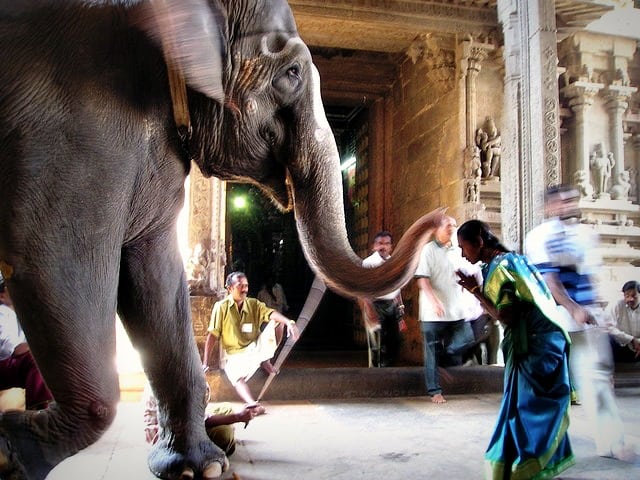
Table of Contents
If you learn basic Hindi, you will find it goes a goes a long way when traveling in India
This is a guest post by Indian blogger Shalu Sharma, who published a book called “Essential Words and Phrases for Travellers to India.” To learn basic Hindi words and phrases you will need, and to buy the book, read on.
As long as you know English, there will be few communication issues in India. Most Indians know some English, however some will not be able to converse as fluently as you would prefer including taxi drivers, waiters, porters and hotel staff. This is where some basic Hindi words, phrases and sentences can come handy. You can learn Hindi through English, and basic Hindi words for beginners, quite easily.
More reading on Breathedreamgo about travel in India
- Learn all about How to speak English in India here.
- If you are planning to travel in India, our India for Beginners custom tours are perfect for first time visitors .
- In our post on visiting the Taj Mahal, you will learn everything you need to know
- Get tips on what to wear when travelling in India here and where to shop and what to buy India .
Where exactly is Hindi spoken?
Hindi is spoken in many parts of India, especially the urban areas and the North. It is the main language of 12 states in India, including Delhi , Uttar Pradesh, Bihar, Jharkhand, Haryana, Madhya Pradesh , Chhattisgarh, Himachal Pradesh, and Rajasthan. About 44% of Indians say their mother tongue is Hindi.
“The 2011 Census data shows that most Indian States, apart from a handful of States in northern and central India, do not primarily speak Hindi but have adopted the language as a secondary language. Most southern and northeastern States are not Hindi-speaking and have adopted English as their secondary language,” According to this article in The Hindu .

In some South Indian states, such as Andhra Pradesh and Karnataka, many people will respond if you speak Hindi with them. So if you were to polish up on some Hindi before going to India, it will prove to be a valuable asset no matter where you are going.
Hindi can be quite challenging for the average English speaker. It is a phonetic language, so it’s spoken as it is written. Hindi uses a lot of English words so you can often replace Hindi words with English. For example, there are no words for “station” or “doctor” in Hindi (if there is one, I am not aware of it and have been speaking Hindi all my life). Some other commonly used English words include railway, hospital, train, cycle, motor, bus, cricket, karma, thug, guru, jungle, bungalow and so on. [NOTE: some of these English words originated in India.] If you are stuck on a Hindi word, then replace it with its English equivalent.
Below are some common Hindi words, phrases and sentences widely used in India. Just pronounce the words the way they’re written.
Basic Hindi words, phrases and sentences
Hello – Namaste or Pranam
Hello Amit – Namaste Amit ji (ji at the end of the name is used to show respect)
I am from USA – Mai USA se hum
Mine – Mera
This is mine – Ye mera hai
Yours – Aap ka
Is this yours – Kya ye aap ka hai
Who are you – Aap kaun hai
Clothes – Kapra
Where are my clothes – Mera kapra kaha hai
Tea – Chai
I need a cup of tea – Mujhe ek cup chai chahiye
Water – Paani
I need a bottle of water – Mujhe ek bottle paani chahiye
Food – Khana
Give me food – Mujhe khana do
Do you speak English – Kya apa English bolte hai
Speak slowly – Dheray boliye
Yes – Haa
Please – Kripya
Thank you – Dhanevaad
More basic Hindi sentences
How are you – Aap kaise hai
I am fine – Mai thik hu
Nice to meet you – Aap se milkar khusi hui
What is your name – Aap ka kya naam hai
My name is Mariellen – Mera naam Mariellen hai
Where are you from – Aap kaha se hai
I am from Canada – Mai Canada se hu
Where is the station – Station kaha hai
Where is the bus stand – Bus stand kaha hai
Where is the toilet – Toilet kaha hai
Can you help me – Kya aap meri madaad karenge
What’s this – Ye kya hai
I want to buy this – Mujhe ye kharidna hai
How much is this – Ye kitnay ka hai
Lower the price – Daam kum kijiye
There are some things that make learning Hindi challenging. Hindi has gender nouns (masculine or feminine); it is perhaps the most difficult part of learning Hindi. Also, the various states of India speak Hindi differently. For instance, my Bihari Hindi is different from Hindi spoken in Delhi. It’s only when we write Hindi that we use the formal methodology. Finally, though India is a country where English is spoken widely, it is still useful to learn some basic Hindi for your travels to India. I suggest you memorize some of these key words Hindi words and phrases and don’t be afraid to use them. – Shalu Sharma
Recommended language learning courses and apps
I’m currently researching the best courses and apps for learning Hindi (and other languages). I’m looking into Doulingo at the moment. This post on Travel Freak about learning a new language recommends Rosetta Stone. – Mariellen
Learn Hindi language faster
I found this video by Karl Rock really helped pinpoint the specific challenges that English speakers face when trying to learn Hindi. Watching it could really help you learn basic Hindi faster. – Mariellen

About the author
Shalu Sharma is the author of “Essential Hindi Words And Phrases For Travellers To India.” Shalu is also the editor and founder of ShaluSharma.com , a blog about travels to India. Originally from Bihar, she speaks Hindi at home.
If you enjoyed this post, you can….
Sign up to The Travel Newsletter in the sidebar and follow Breathedreamgo on all social media platforms including Instagram, TripAdvisor, Facebook, Pinterest, and Twitter. Thank you! </p

Delhi Travel Guide: Things to do in Delhi
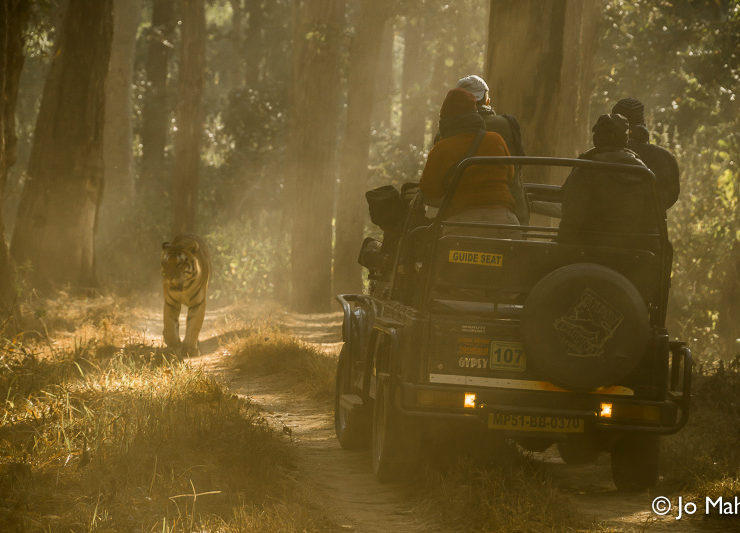
How to thrive on a small group tour
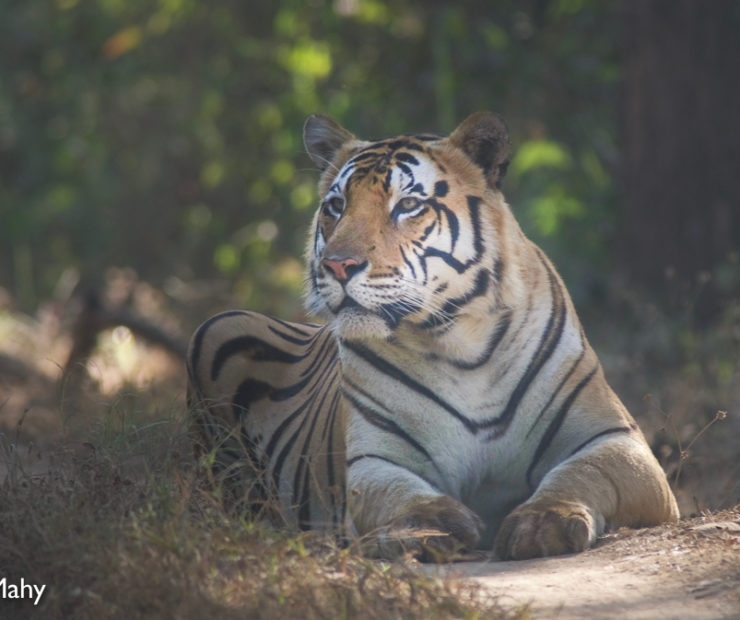
Exodus Travels Land of the Tiger tour of India

About Mariellen Ward
Professional travel writer Mariellen Ward is the founder of award-winning Breathedreamgo. Mariellen has a BA in Journalism and has been travel writing and blogging since 2005. She has won many awards, including a National Tourism Award from Incredible India Tourism, and writes for some of the world’s leading publications including BBC Travel and NatGeo Traveller India.
Sign up for my newsletter and get inspiration to live your travel dreams
Privacy Overview

Common Useful Hindi Phrases for Travel Destinations in India

Planning to spend your vacation in India? Well, learning Hindi should be your top-most priority before visiting the land of diversity. In case you’ve been wondering where to begin, allow us to introduce you to HindiPod101.com , the biggest platform for mastering Hindi. HindiPod101 is the best language travel guide in Hindi even for beginners, and today we’ll be teaching you some useful Hindi phrases for travel!
Traveling to a foreign land is one of the most remarkable things in life. And yet, the thought of it makes us all a little nervous. The biggest hurdle that gives us cold feet is the language problem. For instance, if India is on your tour list , communicating with the natives will be challenging if you don’t speak or understand Hindi.
And although Hindi is spoken mainly in the northern part of the country , other states are also well-versed with the language. Whether you’re about to travel in Hindi-speaking areas or explore the southern region, knowing some essential Hindi travel phrases is a sure-shot way to have a safe and gratifying journey.
So, brace yourself for a quick language ride and let’s make this trip more enjoyable with some useful Hindi phrases for travel in India . You’ll be so glad that you learned the most common Hindi travel phrases!
Table of Contents
- Perks of Knowing Hindi in India
- Essential Hindi Phrases for Traveling in India
- How to Use HindiPod101 and Learn Hindi Travel Phrases!

1. Perks of Knowing Hindi in India

Being a foreigner, it’s not necessary for you to be well-versed in Hindi language travel phrases. However, the knowledge of basic Hindi conversation for tourists has several advantages.
- General Needs: Spending a few weeks in another country, you just can’t avoid the day-to-day needs. In India, greeting the local people like a native is the best way to solve that problem. Thus, basic greeting Hindi phrases when travelling to India are essential.
- Eateries and Shopping Spots: By learning some simple travel phrases in Hindi, food lovers and shopaholics can easily track all the hot spots in the market. Knowing the right Hindi words for traveling purposes is an easy and economical way to gorge on your favorite Indian cuisine or shop to your heart’s content.
- Bargaining: Yes, in India, when it comes to foreign travelers, the vendors try all their might to get the maximum profit from sales. If you know the basic Indian phrases for tourists, you’ll gain the upper hand in the general bargaining process.
- Finding Locations: No Google search is good enough to provide you with as fine and accurate suggestions as the local people. Understanding directions and routes in Hindi becomes an effortless task as you learn useful Indian phrases when traveling.
- Bonding with the Locals: Hindi words related to travel and staying in the country aren’t just about surviving the trip. Speaking the local language is an effective gesture to impress and bond with the natives. It shows your warmth and respect toward their culture. Check out these amazing Hindi pronunciation tips for speaking like a native .
- Emergency: In case of emergencies, such as a health issue, accident, theft, etc., knowledge of Hindi travel common phrases goes a long way. In urgent situations, it can get you help in as little time as possible.
2. Essential Hindi Phrases for Traveling in India
Honestly, listing the relevant Hindi phrases for a tourist in India can be an endless task. Nonetheless, we’ve collected the best Hindi travel phrases for you to make your trip smooth and hassle-free.
Check out the following sets of situations and learn the related Hindi language travel phrases for each of them. Once you’ve spent some time practicing, you’ll be able to speak Hindi travel words and phrases like a native!
1- Greetings and Other Basic Expressions
India is a country where people love to socialize. Even strangers may smile to each other. In such a vibrant culture as India , a seemingly ordinary gesture of greeting is enough to break the ice. Here are some of the most popular words and phrases in Hindi to help you gel with the locals! For easier learning, refer to our section on Hindi alphabets .
1.) Greetings
- नमस्ते ( NamaSTe ) Hello
- नमस्कार ( NamaSkaar ) Hello
- आप कैसे हैं / कैसी हैं? ( aap kaiSe hain / kaiSii hain? ) How are you?
In India, people follow a particular set of body language and hand gestures while saying “hello” in Hindi. Visit our Indian greetings and body language page on HindiPod101.com and find out the proper way to introduce yourself and start a friendly conversation .
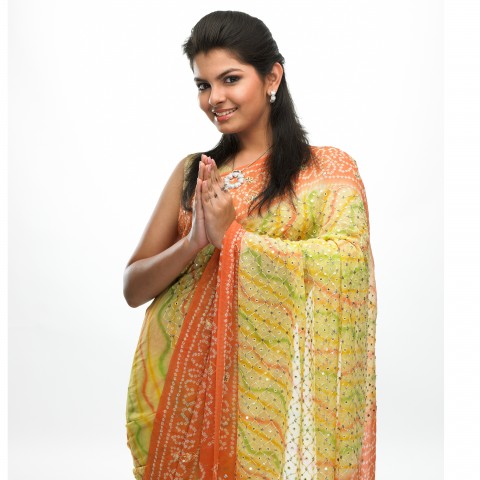
2.) Basic Manners
- शुक्रिया ( sukriyaa ) Thank you
- धन्यवाद ( DHaNyavaaD ) Thank you
- माफ़ कीजिये ( maaf kiijiye ) Excuse me / Sorry
- कृपया ( kripayaa ) Please
3.) Common Sentences
- मेरा नाम मोनिका है। ( meraa Naam moNikaa hai. ) My name is Monica.
- आपका क्या नाम है? ( aapakaa kyaa Naam hai? ) What’s your name?
- मैं ठीक हूँ। ( main thiik huun. ) I am good.
- आप कैसे /कैसी हैं? ( aap kaiSe hain / kaiSii hain? ) How are you?
- कोई बात नहीं। ( koii baaT Nahiin. ) It’s okay. / No problem.
- आप से मिलकर ख़ुशी हुई। ( aap Se miLakar khusii huii. ) A pleasure to meet you.
Useful Related Words
- नाम ( Naam ) Name
- मैं ( main ) I
- आप ( aap ) You
- हाँ ( hā̃ ) Yes
- नहीं ( Nahiin ) No
- ठीक है ( thiik hai ) Okay
2- Using a Public Transport
In small cities, where everything is within a range of a few kilometers, the common public transports include auto rickshaws and rickshaws. Whereas in metropolitan cities, metros, local buses , autos, cabs, and taxis keep the towns running! To help you navigate these transportation systems, check out these Hindi words and phrases for travelers to India.

- मेट्रो स्टेशन ले चलो। (metro StesaN Le caLo. ) Take me to the metro station, please.
- रेलवे स्टेशन / बस स्टेशन जाना है। ( reLave StesaN / baS StesaN jaaNaa hai. ) Railway station, please.
- अगला स्टॉप कितना दूर है? ( agaLaa Staup kiTaNaa Duur hai? ) How far is the next stop?
- टिकट किधर मिलेगा? (tikat kiDHar miLegaa? ) Where can I get the ticket?
- मेरी सुबह की ट्रेन है। ( merii Subah kii treN hai. ) I have an early morning train.
- कितना वक़्त लगेगा? ( kiTaNaa vaqT Lagegaa? ) How long will it take?
- मुंबई का टिकट चाहिए। ( mumbaii kaa tikat caahiye. ) A ticket to Mumbai, please.
- मुझे कहाँ उतरना चाहिए? ( mujhe kahaan uTaraNaa caahiye? ) Where should I get off?
Now for a tip from our India travel guide: India is a heavily populated country. So, be prepared for the rush and traffic to slow you down. Keep sufficient time in hand to reach the airport / bus station / railway station. On average, leaving thirty to forty-five minutes earlier than the usual time will save you a lot of hassle.
- सुबह ( Subah ) Morning
- रात ( raaT ) Night
- दोपहर ( Dopahar ) Afternoon
- कब ( kab ) When
- समय ( Samay ) Time
3- Shopping and Bargaining
Bargaining is the heartbeat of typical Indian markets. It goes on all the time. Unless you’re in a mall or a branded store with fixed prices, the local shops can really test your spending limits.
More often than not, vendors and shopkeepers try to get as much as they can from foreigners. Sometimes, the quoted price may be double or triple the original rate.
Your bargaining capacity becomes manifold just by uttering some common shopping phrases in Hindi . Using these basic Hindi words for travelers to India is an effective way to tell the sellers that you understand how things work in the local market and they better stop trying to fool you!
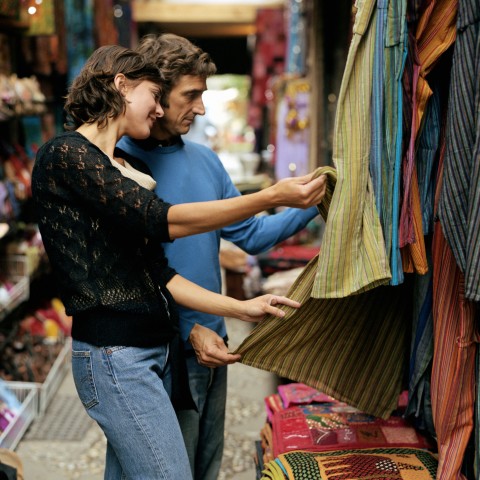
- कितना हुआ? ( kiTaNaa huaa? ) How much?
- क्या दाम है? ( kyaa Daam hai? ) What’s the price?
- इसका दाम कम कीजिए। ( iSakaa Daam kam kiijiye. ) Please, lower the price.
- सही दाम लगाओ। ( Sahii Daam Lagaao. ) Tell me the correct price.
- मुझे यह चाहिए। ( mujhe yah caahiye. ) I want this.
- मुझे यह नहीं चाहिए। ( mujhe yah Nahiin caahiye. ) I don’t want this.
- ये सामान ख़राब है। ( ye SaamaaN kharaab hai. ) This stuff has defects.
- इसे बदल दीजिये। ( iSe baDaL Dijiiye. ) Please, change this.
- छोटा / बड़ा नाप चाहिए। ( chotaa / badaa Naap caahiye. ) Give me a smaller / larger size.
- क्रेडिट कार्ड चलेगा? ( kredit kaard caLega? ) Can I use a credit card?
- दाम ( Daam ) Rate / Price
- पैसे ( paiSe ) Money / Rupees
- बदलना ( baDaLaNaa ) Change
- नया ( Nayaa ) New
- पुराना ( puraaNaa ) Old
- ख़राब ( kharaab ) Defective
- छोटा ( chotaa ) Small
- बड़ा ( badaa ) Large
- नाप ( Naap ) Size
Indians have a habit of using Hindi numbers while counting money, telling the price, bargaining, and even asking what size fits you well. With HindiPod101.com, you can learn and memorize the Hindi Numbers and up your bargain game.
4- Dining at a Restaurant
Authentic Indian cuisine is worth every bite. From vegetarian dishes to non-veg delicacies , Indian food is a melting pot of herbs and spices , all with a touch of love.
When visiting a fine restaurant or hotel that you’re staying in, speaking Hindi is optional. Most hotel staff are fluent in English and converse in the same language. So, you may not need to worry about speaking Hindi at your hotel.
However, if you stop by a roadside eatery and wish to have a few bites there, the basic Hindi travel words with meanings below will prove to be quite helpful.
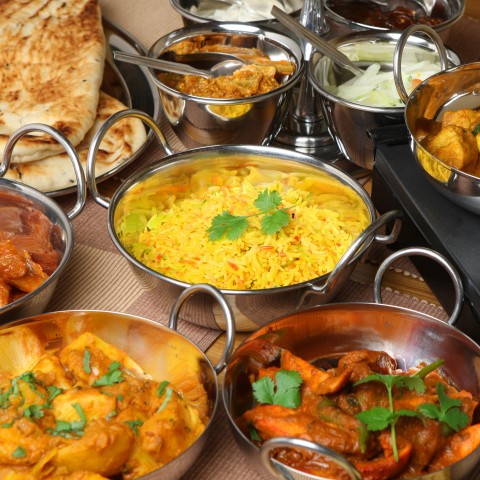
With these Hindi words, one can easily place an order at a local restaurant , ask for the bill , and more.
- मैं शाकाहारी हूँ। ( main saakaahaarii huun. ) I am a vegetarian.
- मैं मांसाहारी हूँ। ( main maanSaahaarii huun. ) I am a non-vegetarian.
- एक चाय / कॉफ़ी चाहिए। ( ek caay / kaufii caahiye. ) One tea / coffee, please.
- ये बहुत स्वादिष्ट है। ( ye bahuT SvaaDist hai. ) It’s delicious.
- तीखा कम रखियेगा। ( Tiikhaa kam rakhiyegaa. ) Please, make it less spicy.
- बिल ले आइये। ( biL Le aaiye. ) Bill, please.

- मुझे और रोटियाँ चाहिए। ( mujhe aur rotiyaan caahiye. ) I want more chapatis.
- दो लोग हैं। ( Do Log hain. ) Table for two, please.
- क्या आप क्रेडिट कार्ड लेते हैं? ( kyaa aap kredit kaard LeTe hain? ) Do you accept credit cards?
It’s common to pay in cash when eating at a small restaurant. Credit cards are usually accepted at expensive or moderately expensive eating places.
The most popular beverage in India is tea ( caay ). It contains tea leaves, sugar, and equal parts milk and water. Indians love to have their tea on the sweeter side. So, if you don’t have a sweet tooth, make sure to mention that while you order the tea.
Spices and chilies are the soul of every Indian food. To non-natives, Indian food may taste quite spicy and hot. To be on the safer side, it’s better to tell the waiters your preferences beforehand.
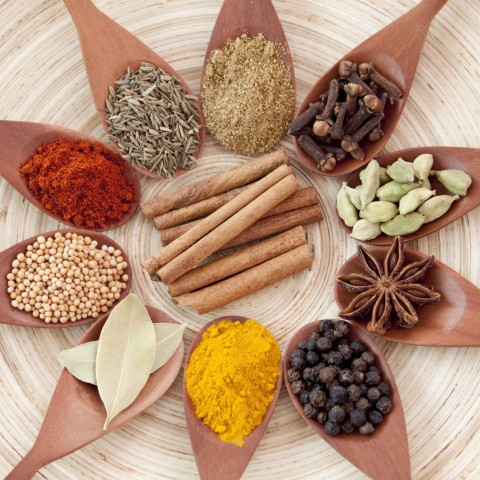
- खाना ( khaaNaa ) Lunch / Dinner / Meal / Food
- पानी ( paaNii ) Water
- चाय ( caay ) Tea
- दूध ( DuuDH ) Milk
- नाश्ता ( NaasTaa ) Breakfast
- अंडा ( aNdaa ) Egg
- फल ( phaL ) Fruits
- सब्ज़ी ( Sabzii ) Vegetable
- रोटी ( rotii ) Chapati / Indian flat bread
- चावल ( caavaL ) Rice
- मसाला ( maSaaLaa ) Spice
- कम ( kam ) Less
- ज़्यादा ( zyaaDaa ) More
- मीठा ( miithaa ) Sweet
- मिठाई ( mithaaii ) Dessert
5- For Directions and Routes

Most of the cities and towns in the country aren’t organized. So, finding the routes all by yourself can be tricky business. Nonetheless, people in India are helpful and friendly. They’ll be more than happy to help you with directions . But, how to ask for directions when a large segment of the population doesn’t speak English?
The answer is simple. Learn these basic phrases and you’re good to go! (They may be some of the most important Hindi words for tourists in India!)
- बाथरूम कहाँ / किधर है? ( baaTHaruum kahaan / kiDHar hai? ) Where is the toilet?
- ताज महल कितनी दूर है? ( Taaj mahaL kiTaNii Duur hai? ) How far is the Taj Mahal?
- कनॉट प्लेस के लिए कौन-सा रास्ता है? ( kaNaut pLeS ke Liye kauN-Sa raaSTaa hai? ) What is the route to Connaught Place?
- दाएं जाना है। ( Daayen jaaNaa hai. ) Go right.
- बाएँ मुड़ना है। ( baayen mudaNaa hai. ) Turn left.
- सामने / सीधे चले जाइये। ( SaamaNe / SiiDHe caLe jaaiye. ) Go straight.
- दाएं ( Daayen ) Right
- बाएं ( baayen ) Left
- सामने ( SaamaNe ) Front
- सीधे ( SiiDHe ) Straight
- सड़क ( Sadak ) Road
- मोड़ ( mod ) Turn
- किधर ( kiDHar ) Which side
- कहाँ ( kahaan ) Where
- अंदर ( aNDar ) Inside
- बाहर ( baahar ) Outside
- पीछे ( piiche ) Back / Behind
6- In Case of Emergency

This section needs no explanation. When you’re in another part of the world, learning the local language, or at least some essential emergency phrases in Hindi , can save you from big trouble. Below is a list of some Hindi phrases to use in case of emergency.
- मुझे मदद चाहिए। / कृपया, मेरी मदद कीजिए। ( mujhe maDaD caahiye.) / (kripayaa, merii maDaD kiijiye. ) I need help. / Please, help me.
- मेरी तबियत ख़राब है। ( merii TabiiyaT kharaab hai. ) I am feeling sick.
- क्या पास में कोई दवा की दुकान होगी? ( kyaa paaS men koii Davaa kii DukaaN hogii? ) Is there any medical store nearby?
- मेरा पासपोर्ट खो गया है। ( meraa paaSaport kho gayaa hai. ) I have lost my passport.
- पुलिस को बुलाओ। ( puLiS ko buLaao. ) Call the police.
- पुलिस चौकी कहाँ है? ( puLiS caukii kahaan hai? ) Where is the police station?
- अस्पताल कहाँ है? ( aSpaTaaL kahaan hai? ) Where’s the hospital?

- दवा ( Davaa ) Medicine
- बुख़ार ( bukhaar ) Fever
- चोरी ( corii ) Theft
- पर्स ( parS ) Purse / Wallet
- सामान ( SaamaaN ) Luggage
7- Giving Compliments and Making Friends
When you spend sufficient time in India, you’re probably going to make some new friends. If not, then maybe you’d still like to say “thank you” to your hosts for their warm hospitality, initiate a conversation with someone you want to be friends with, and so on!
How do you make your emotions sound special? Express yourself in Hindi and steal the locals’ hearts already! Explore these flattery phrases to flaunt your Hindi and catch everybody’s attention.
- मुझे भारत देश पसंद है। ( mujhe bhaaraT Des paSaND hai. ) I like India.
- मुझे भारतीय खाना काफ़ी पसंद है। ( mujhe bhaaraTiiy khaana kaafii paSaND hai. ) I love Indian cuisine.
- आप बहुत अच्छे / अच्छी हैं। ( aap bahuT acche / acchii hain. ) You’re a nice person.
- आपसे मिलकर ख़ुशी हुई। ( aap Se miLakar khusii huyii. ) It’s a pleasure meeting you.
- क्या आप फ़ेसबुक पर हैं? ( kyaa aap feSabuk par hain? ) Are you on Facebook?
- सर ( Sar ) Sir
- मैडम ( maidam ) Madam
- भैया ( bhaiyaa ) Brother
- दीदी ( DiiDii ) Sister
- अन्ना ( aNNaa ) Brother
- दादा ( DaaDaa ) Big brother
- आंटी ( aaNtii ) Aunty
- अंकल ( ankaL ) Uncle
8- For Sorting out Language Troubles

It’s okay if you struggle while speaking Hindi . You may want to use the phrases below to make people aware of your language troubles and to ask for their help.
- मुझे हिंदी नहीं आती। ( mujhe hiNDii nahiin aaTii. ) I don’t speak Hindi.
- क्या आपको अंग्रेज़ी आती है? ( kyaa aapako angrezii aaTii hai? ) Do you speak English?
- कृपया, धीरे बोलिये। ( kripayaa, DHiire boLiye. ) Please, speak slowly.
- इसे लिख दीजिये। ( iSe Likh Diijiye. ) Please, write it down.
- इसे कैसे पढ़ेंगे? ( iSe kaiSe padhenge? ) How do you read this?
- कितने बजे हैं? ( kiTaNe baje hain? ) What’s the time?
- मुझे समझ नहीं आया। ( mujhe Samajh Nahiin aayaa. ) I don’t understand.
- कृपया, फिर से कहिये। ( kripayaa, phir Se kahiye. ) Please, say it again.
- कैसे ( kaiSe ) How
- बोलना ( boLaNaa ) Speak
- पढ़ना ( padhaNaa ) Read
- फिर से ( phir Se ) Again
3. How to Use HindiPod101 and Learn Hindi Travel Phrases!
Now that we’ve covered all the phrases you need to know for your trip to India, we hope you can see why travel phrases in Hindi language learning are so necessary to an enjoyable (and safe) trip. After reading these Hindi travel phrases in the English language, it’s time to practice your Hindi skills!
If you’re nervous about your trip to India just because you don’t speak Hindi, HindPod101 can make your worries disappear. The wide and comprehensive study material on HindiPod101 doesn’t just teach you Hindi, but almost everything about India.
You can learn about Indian culture, common food items, greeting methods, and much more with HindiPod101.com. All you have to do is download the Hindi Mobile Application and start learning! So, what are you waiting for? Sign up on our homepage and get access to unlimited resources for Hindi learning.
Or sign up using Facebook
Got an account? Sign in here

How To Say ‘Thank you’ in Hindi

Popular Words in Hindi for Hello and How to Say Hello in Hindi

How to Say I Love You in Hindi – Romantic Word List

How to Start a Conversation in Hindi: A Beginner’s Guide

40+ Advanced Hindi Phrases for You to Master!

30+ Intermediate Hindi Phrases to Help You Sound Like a Pro!
How to celebrate april fools’ day in hindi.
- General Announcements
- Hindi Language
- Hindi Translation
- Indian Holidays
- Advanced Hindi
- Hindi Alphabet
- Hindi Grammar
- Hindi Lessons
- Hindi Online
- Hindi Phrases
- Hindi Podcasts
- Hindi Words
- Tips & Techniques
- Feature Spotlight
- Speak Hindi
- Success Stories
- Teaching Hindi
- Team HindiPod101
- Word of the Day
Copyright © 2024 Innovative Language Learning. All rights reserved. HindiPod101.com Privacy Policy | Terms of Use . This site is protected by reCAPTCHA and the Google Privacy Policy and Terms of Service apply.

78 Facts about India (Travelers and Expats) Food, Travel, Culture, Photos…
Have India in your sights? In this guide, you’ll learn 78 facts about India, including travel, food, language, top sights, and much more. Plus lots of photos and videos.
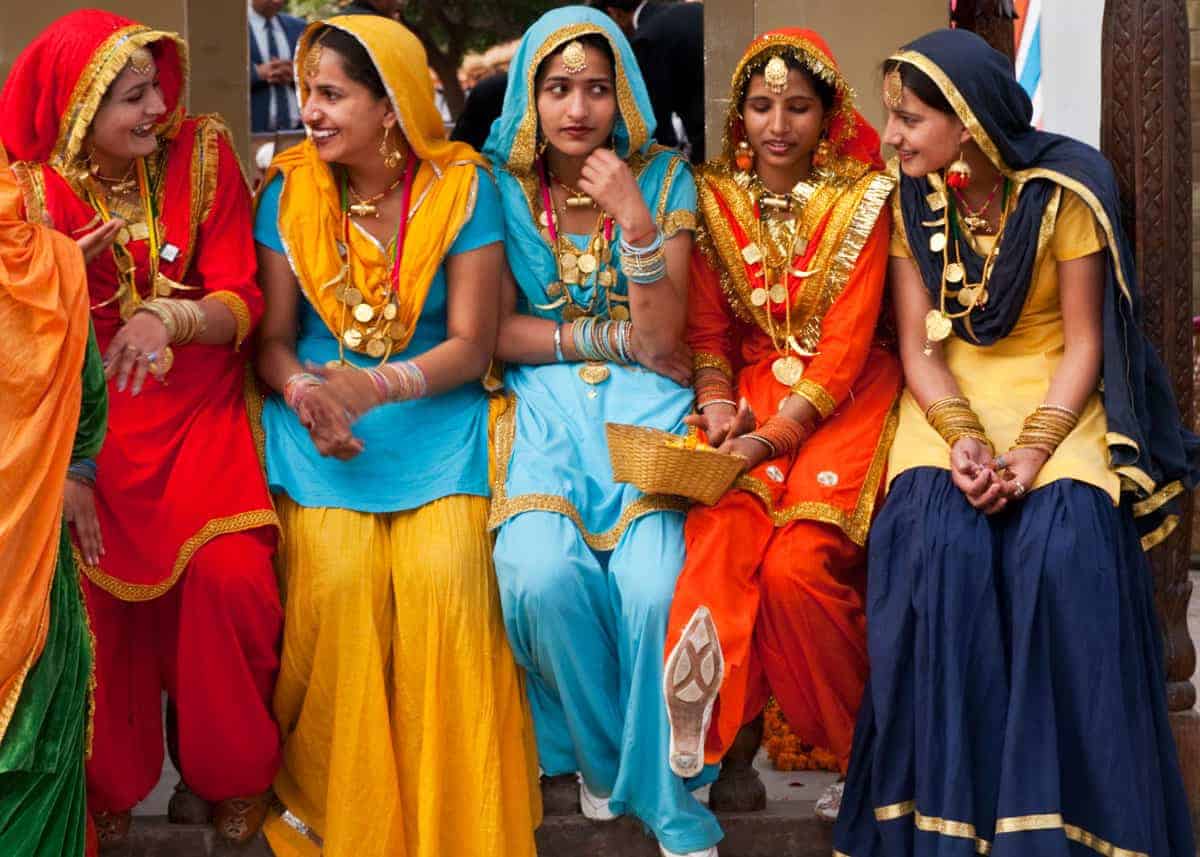
78 Facts about India
As home to one of the world’s largest populations, India is a fascinating country. It has a diverse flora and fauna, ecosystems that include rainforests, mountains and deserts, and hosts some of the world’s most colorful and unique festivals.
Below are 78 of the most interesting facts about India.
Let’s get started!
Basic Facts About India
1. what is india’s official name.
India’s official name is the Republic of India .
In the International Alphabet of Sanskrit Transliteration (IAST), the country is referred to as Bhārat Gaṇarājya .
The name “India” is actually derived from the name of the river Indus . In ancient times, many of the settlers made their homes along this river. The Indus Valley civilization is the world’s oldest and largest continuous civilization.
2. What is India’s population?
As of July 2019 , the estimated population in India was 1,311,559,204 .
This makes India the 2nd most populated nation in the world, behind only China.
However, the third most populated nation, the United States, has a population of over a billion fewer people than India at only 328 million people. To put this in perspective, the population of the entire world is 7.53 billion people. Of these, over 2 ½ billion of them live in China and India!
3. Where is India located?
India is a country in South Asia located just north of the equator between 6° 44′ and 35° 30′ north latitude and 68° 7′ and 97° 25′ east longitude.
Map of India
4. What time is it in India?
India only has one time zone: IST. IST is GMT+5:30.
If it is Monday at 11:45 PM Eastern Time in the United States, it is 10:15 AM on Tuesday in India. Daylight Savings Time is not observed in this country.
5. When does the sun set in India?
The sunset time in India depends on location and time of year.
In New Delhi, the sun sets at the following times.
- January 1st, the sunset is 5:35 PM
- April 1st, the sunset is 6:38 PM
- July 1st, it is 7:23 PM
- October 1st, it is 6:07 PM
6. What are citizens of India known as?
The citizens of India are referred to as Indian .
7. What is the capital of India?
New Delhi is the capital of India. In 2011, the population in New Delhi was 257,803.

8. What is life expectancy in India?
In 2017, the estimated life expectancy was 68.8 years.
9. What religions are in India?
India is home to the world’s largest Hindu population , with over 80% of the nation’s population identifying as Hindu.
Islam is the second largest religion at 14.2% of the population.
The final 5.8% of the population is made up of those that practice Christianity, Sikhism, Buddhism, and Jainism.
10. Common misspellings of India
According to Spellchecker.net common misspellings for India include: Intoa, Undia, Indan, and Indied.
11. What is the national motto of India?
The National Motto of India is “Truth Alone Triumphs” , which is Satyameva Jayate in Sanskrit.
Facts about India Travel
12. how’s the weather in india.
Some of the most interesting India facts involve the country’s weather. The weather in India can vary drastically depending on the time of year and the location.
The western part of the country is an arid desert, the southwest part, and the islands are considered tropical rainforest regions and the north has alpine tundra and glaciers. The hottest and driest season is between March and June, with some areas of the country soaring to well over 100 degrees Fahrenheit.
From June to September is considered monsoon season. During monsoon season, intense flooding can cause widespread destruction, sometimes even cutting communication systems and road access to large areas for weeks.
Towards the end of the year, most of the country experiences cooler temperatures and clear and sunny skies. Some parts of India, such as in the north towards the Himalayas, can experience significant cold and severe wind chills throughout winter. In the south, the weather is still hot during the winter, but it’s not as stifling as it is during the summer.
13. What is the best time to visit India?
Monsoon season can be fairly unpredictable and dangerous and the summer heat can be far too intense for some travelers.
According to Rough Guides , the best time to visit India is during the winter and early spring, from December through March. During this time, it is cooler, dryer, and much more comfortable.
Towards the end of winter, a trek into the Himalayas is even possible, although the peak season to hike in the Himalayas is August because it is warmer and the mountains don’t see the monsoons that the rest of the country experiences.
14. What is India’s currency?
India’s currency is known as the Indian Rupee (INR) .
It is actually illegal to carry Rupee out of the country.
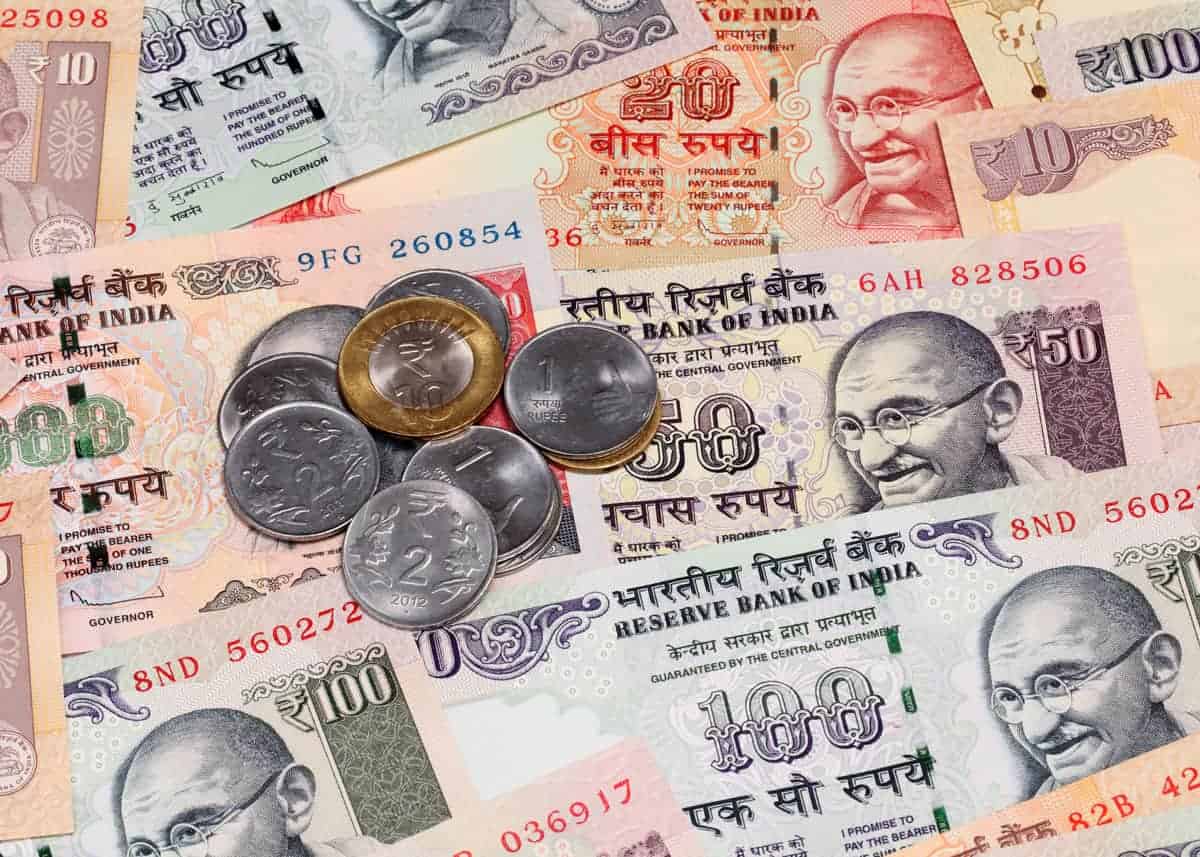
15. Do I need a power adapter when I visit India?
India uses a 240-volt system, as compared to the 120 volts used in America. However, Asher Fergusson , a frequent traveler to India, reports that India’s power grid can be very unpredictable, spiking higher or lower than this voltage level.
You’ll want to find a 220V to 110V voltage converter. This unit comes highly recommended (and can charge up to 7 devices at the same time).
Therefore, to protect your valuable electronics, it is best to bring both a surge protector and an adapter that is able to accommodate 240 volts. Some smaller appliances, such as older hair dryers, are only rated for 100—120 volts, so it’s best to avoid bringing these with you as they are likely to be fried if used in India.
16. What plugs are used in India?
India uses a three-pronged power outlet, but it is a bit different than are the ones in the United States.
A Type D adapter with a plug with three round prongs will be perfect for your trip to India. A Type D adapter is often labeled for use in India, Pakistan, Nepal, and Bangladesh.
17. What are India’s international airports?
India has 26 international airports, ensuring that you will easily be able to find one close to your destination.
The following is a complete list of airports in India, along with locations, as of 2019.
- Rajiv Gandhi International Airport, Hyderabad
- Lokpriya Gopinath Bordoloi International Airport, Guwahati
- Sri Guru Ram Dass Jee International Airport, Amritsar
- Gaya Airport, Gaya
- Biju Patnaik International Airport, Bhubaneshwar
- Kempegowda International Airport, Bengaluru
- Veer Savarkar International Airport, Port Blair
- Sardar Vallabhbhai Patel International Airport, Ahmedabad
- Mangalore Airport, Mangalore
- Calicut International Airport, Kozhikode
- Trivandrum International Airport, Thiruvananthapuram
- Cochin International Airport, Kochi
- Raja Bhoj Airport, Bhopal
- Devi Ahilyabai Holkar Airport, Indore
- Dr Babasaheb Ambedkar International Airport, Nagpur
- Chhatrapati Shivaji International Airport, Mumbai
- Pune Airport, Pune
- Zaruki International Airport, Shillong
- Civil Aerodrome, Coimbatore
- Jaipur International Airport, Jaipur
- Chennai International Airport, Chennai
- Tiruchirapalli International Airport, Tiruchirappalli
- Lal Bahadur Shastri International Airport, Varanasi
- Chaudhary Charan Singh Airport, Lucknow
- Netaji Subhash Chandra Bose International Airport, Kolkata
18. How many tourists visit India every year?
According to the Economic Times , in 2016, 8.9 foreign tourists visited India. This is an 11% increase over 2015 and it is expected that tourism will continue to increase due to improvements in infrastructure, more flexible government policies, and an easy visa process.
More than half of tourists visit Delhi, Chennai or Mumbai, while other popular destinations include the Himalayan mountains, Rajasthan, Goa, and Kerela.
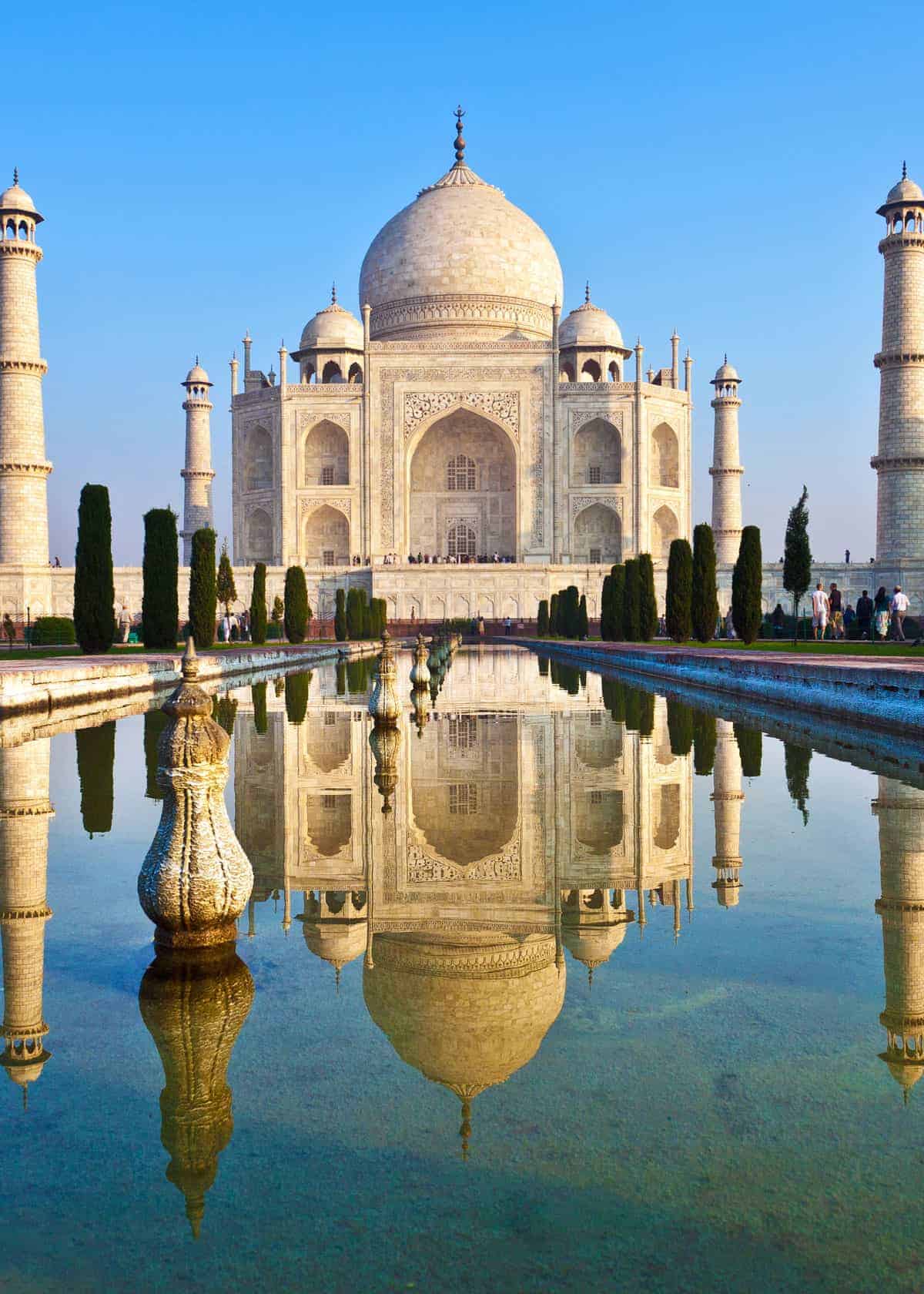
19. What are India’s most popular landmarks?
The Taj Mahal in Agra is perhaps the most popular and most easily recognizable landmark in India. However, visitors to India can also enjoy several other beautiful and notable attractions:
- Amber Fort in Rajasthan: This is a World Heritage Site and is known for its gorgeous Hindu-style construction and décor.
- Golden Temple in Amritsar: This is the holiest Sikh gurdwara and contains one of the five Takhts of the Sikh community.
- Mehrangarh Fort in Rajasthan: This fort is one of the largest in India and contains seven tall gates and a museum.
- Khajuraho Monuments in Madhya Pradesh: These temples are dedicated to Shiva and are now a popular archaeological site.
- Gateway of India in Mumbai: This popular attraction is often called the “Taj Mahal of Mumbai”. Not only is it popular with the locals, it is a major tourist attraction with its picturesque backdrop, street vendors and nearby food and shopping opportunities.
- Charminar in Hyderabad: This mosque and monument attract many tourists, especially to its Laad Bazaar. At the bazaar, you can find beautiful bangles and pearls, two items that are highly sought after in India.
- Red Fort in Delhi: The Red Fort is known for its unique red sandstone walls. It is one of the oldest surviving structures in India and currently houses several museums.
- Mahabodhi Temple in Bodhgaya: This is one of the four holy sites related to the life of the Buddha.
20. Is India a safe place to visit?
The U.S. Department of State issued a Level 2 travel advisory in 2018 for traveling to India. This means that while traveling to India is generally safe, visitors should take a few precautions:
- Avoid traveling too much of Jammu and Kashmir due to current civil unrest and terrorism threats.
- Due to the potential for armed conflict, avoid traveling within 10 km of the India—Pakistan border.
Besides these two areas, it is generally considered safe, especially in the major tourist destinations. You should exercise typical travel precautions, including traveling in a group, securing valuables and money to avoid pickpocketing, and staying in well-lit areas to reduce the risk of violent crime.
21. What are India’s 10 best beaches?
While many who visit India come for the major sites in the large cities, India is home to several gorgeous beaches that are sure to take your breath away.
- Ashvem Beach, Goa: This is likely the most popular beach in India. Just an hour’s flight south of Mumbai, it is a tropical paradise that was once ruled by the Portuguese.
- Tarkarli, Maharashtra: This scenic beach has small bustling villages, fine white sand, and ancient sea forts. More adventurous visitors can enjoy parasailing, scuba diving, and snorkeling as well!
- Kaup, Karnataka: This beach’s claim to fame is a delightful century-old lighthouse that visitors can climb to enjoy expansive views of the water, sand, and casuarina tree groves, as well as get the perfect sunset photo.
- Gokarna, Karnataka: With beautiful azure waters and powdery white sands, this beach is popular with backpackers. The beach has several makeshift cafes surrounded by coconut trees, scenic coves, hammocks, and even homestays if you’re looking to stay a couple of days.
- Tharangambadi, Tamil Nadu: Once a Danish colony, this beautiful beach on the Bay of Bengal is home to several old churches and monuments, including Fort Dansborg.
- Radhanagar Beach, Andaman and Nicobar Islands: Listed as one of Asia’s best beaches, Radhanagar, or “Beach No. 7”, can be found on the remote Andaman and Nicobar Islands, close to Thailand. It’s lush greenery, calm bright waters and fine white sand look like it’s straight out of a movie. Visitors can enjoy a day lounging on the beach or can take scuba classes, hike through the rainforest, fish, sail or surf.
- Mandarmani, West Bengal: Located four hours south of Kolkata, this once-quiet fishing village is now one of the area’s fastest-growing resort towns. Visitors flock to this area for the beautiful sunrises, calm waters, and adorable little red crabs that can be found resting in the white sand.
- Puri, Odisha: If an active party scene is more your style, Puri’s main beach is famous for its part atmosphere and bhang—India’s legal edible marijuana. The town is also home to the famous 11th century Hindu temple known as Jagannath.
- Bekal, Kerala: Visitors to Bekal often come to catch a glimpse of Bekal Fort, known for its unique keyhole shape. This fort was featured in the Bollywood film Bombay . Visitors can also enjoy beautiful green gardens and unique art installations along the beach.
- Minicoy, Lakshadweep: If you’d prefer quiet seclusion instead of bustling tourist spots, Minicoy is the perfect haven. Its 36 islands are home to secluded beaches and lush tropical forests. Heading to the most southernmost beach will reward you with complete isolation and fabulous snorkeling and diving in the coral reefs.
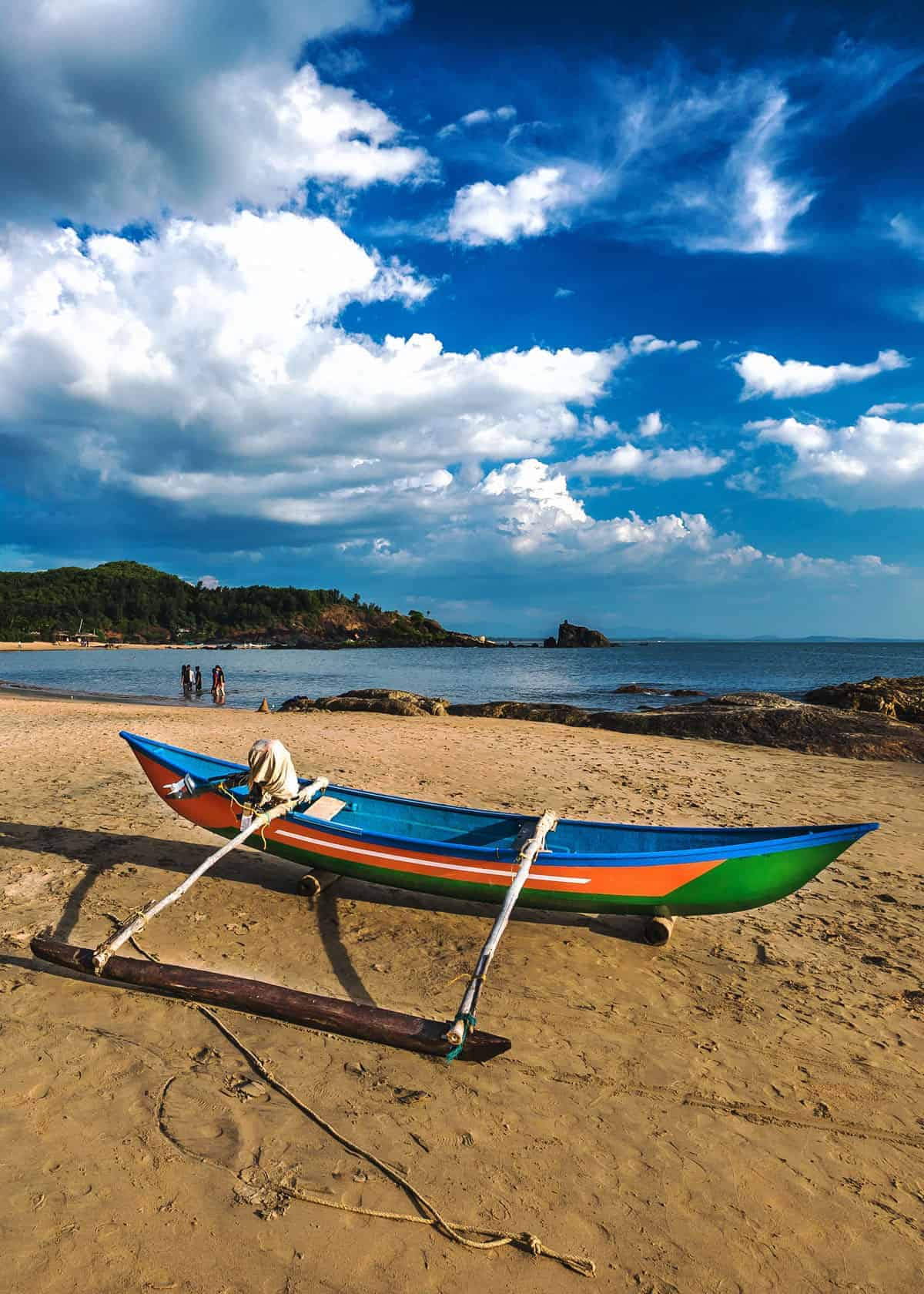
22. What are the most famous events in India?
India has several annual events that catch the international spotlight. The most famous of which is Holi, also known as the “Festival of Colors”. During this festival, colored powder is thrown at others, which is then sprayed with water guns as a celebration of the Lord Vishnu. The festival takes place in late March. Other important annual events in India are:
- Ganesh Festival: This 11-day festival in September honors the birth of Lord Ganesha, the famous Hindu elephant-headed god. Statues of Lord Ganesha are installed in public places and in private homes to be worshipped daily during this festival. The last day of the festival includes a parade of these statues before they are then submerged in the ocean. While versions of this festival happen throughout India, the most well-known is in Mumbai.
- Diwali: The most anticipated festival of the year, held in late October, honors the victory of good over evil when Lord Ram and his wife Sita returned to their kingdom following the defeat of Ravan. It is known in India as the “festival of lights” due to the candles, lamps and fireworks lit for this festival.
- Pushkar Camel Fair: In early November, the tiny town of Pushkar hosts this unique festival. Hundreds of camels are dressed up, entered into beauty contests, paraded for all to see, enter races and are traded during the fair. Camels dressed head to toe in colorful jewelry and garments paraded through the streets is surely not to be missed!
Geography Now! India Video
Geography in India
23. how large is india.
India has a total area of 1,269,219 square miles . The southern part of the country is a peninsula – one of the largest peninsulas in the world .
24. What world heritage sites are in India?
No list of India facts is complete without mentioning the nation’s rich and diverse collection of World Heritage sites. India has 37 UNESCO World Heritage sites, with an additional 43 currently under consideration.
The current sites include:
- Ajanta Caves: Maharashtra
- Ellora Caves: Maharashtra
- Agra Fort: Uttar Pradesh
- Taj Mahal: Utter Pradesh
- Sun Temple, Konarak: Puri District in Odisha
- Group of Monuments at Mahabalipuram: Mahabalipuram, Tamil Nadu
- Kaziranga National Park: Assam
- Manas Wildlife Sanctuary: Assam
- Keoladeo National Park: Bharatpur, Rajasthan
- Churches and Convents of Goa: Velha Goa
- Khajuraho Group of Monuments: Madhya Pradesh
- Group of Monuments at Hampi: Ballari district in Karnataka
- Fatehpur Sikri: Uttar Pradesh
- Group of Monuments at Pattadakal: Bagalkot District in Karnataka
- Elephanta Caves: Maharashtra
- Great Living Chola Temples: Gangaikonda Cholapuram, Darasuram and Thanjavur
- Sundarbans National Park: West Bengal
- Nanda Devi and Valley of Flowers National Parks: Chamoli district in Uttarakhand
- Buddhist Monuments at Sanchi: Madhya Pradesh
- Humayun’s Tomb: Delhi
- Qutb Minar and its Monuments: Delhi
- Mountain Railways of India: Darjeeling, Ooty and Himachal Pradesh
- Mahabodhi Temple Complex at Bodh Gaya: Bihar
- Rock Shelters of Bhimbetka: Madhya Pradesh
- Chhatrapati Shivaji Terminus (Victoria Terminus): Maharashtra
- Champaner-Pavagadh Archaeological Park: Gujarat
- Red Fort Complex: Delhi
- The Jantar Mantar: Jaipur in Rajasthan
- Western Ghats (Sahyadri Mountains): Western side of India
- Hill Forts of Rajasthan: Rajasthan
- Rani Ki Vav (The Queen’s Stepwell): Patan, Gujarat
- Great Himalayan National Park: Himachal Pradesh
- Archaeological Site of Nalanda Mahavihara: Bihar
- Khangchendzonga National Park: Sikkim
- The Architectural Work of Le Corbusier: Chandigarh
- Historic City of Ahmedabad: Ahmedabad, Gujarat
- The Victorian and Art Deco Ensemble of Mumbai: Maharashtra
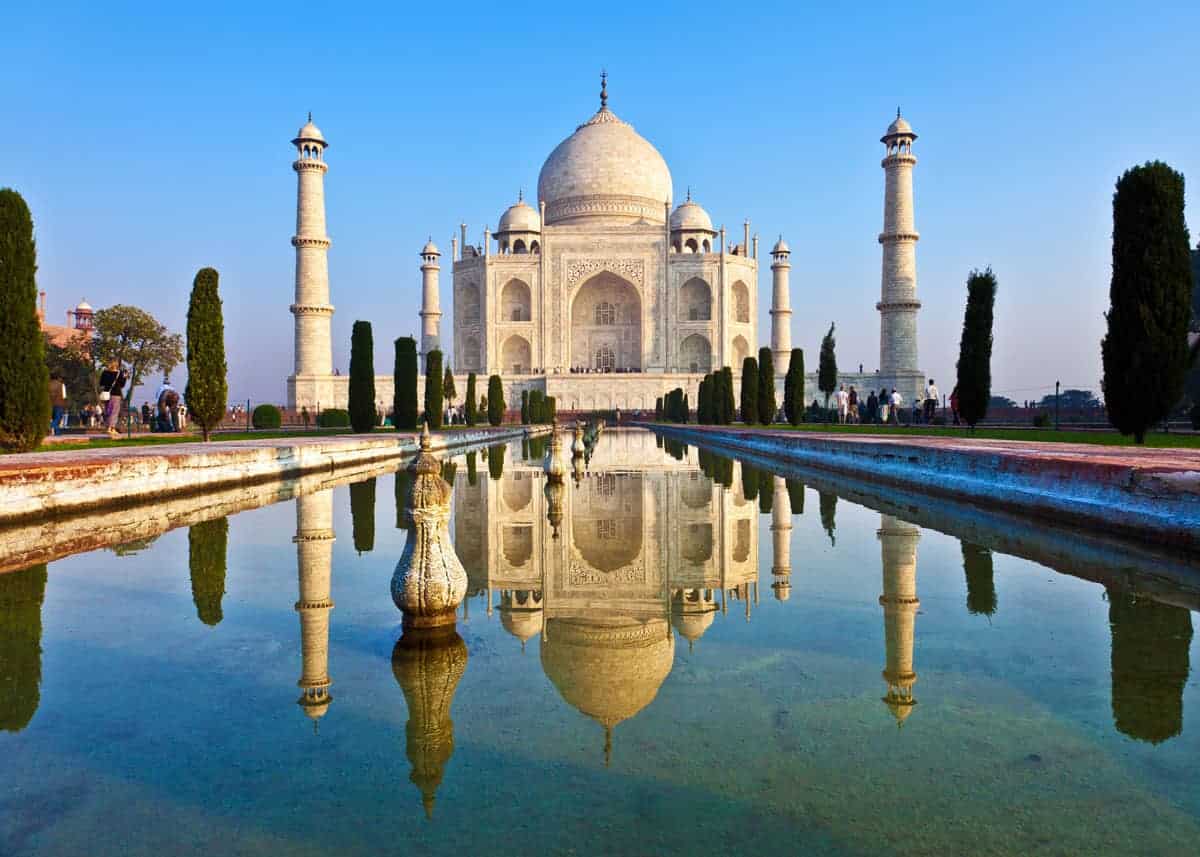
25. What is India’s largest city?
India’s largest city is Mumbai , at 603 km2. It is known as a megacity and has a population density of 53,000 people per square mile.
26. What are India’s major cities?
India has the second largest population in the world, with 43% of the population residing in one of 27 major cities. According to WorldAtlas.com , India’s 10 largest cities and their population are as follows:
- Mumbai—18.4 million
- New Delhi—16.3 million
- Kolkata—14 million
- Chennai—8.7 million
- Bangalore—8.5 million
- Hyderabad—7.75 million
- Ahmedabad—6.3 million
- Pune—5.0 million
- Surat—4.5 million
- Jaipur—3.1 million
To put the enormity of India’s cities into perspective, New York City has a population of 8.6 million, Los Angeles has a population of 3.7 million and Chicago has a population of 2.7 million.
27. How many states in India?
India has 29 states and 7 union territories . All states in India have their own government, while union territories fall under the central government.
28. What is the highest elevation in India?
The highest peak in India is Kangchenjunga, at the southern border of India in the Himalayas. It is the third-highest mountain in the world at 28,169 feet.
29. Does India have a lot of mountains?
While many people know that India is home to the Himalaya mountain range, there are actually six additional mountain ranges in the country:
- Karakoram and Pir Panjal
- Eastern Mountain Range/Purvanchal Range
- Satpura and Vindhaya Range
- Aravalli Range
- Western Ghats
- Eastern Ghats
30. How many islands in India?
India has over 1200 total islands. Of these, 527 of them are in the Andaman Nicobar Islands, although 80% of those islands are uninhabited.
31. What are the top 10 famous places in India?
India is home to many world-renowned attractions. Ten of the most famous include:
- Taj Mahal, Agra: Not only is the Taj Mahal one of the most recognizable destinations in India, it is probably one of the most easily recognizable in the world. This massive white marble mausoleum took 22 years to complete and is now one of the world’s top tourist destinations.
- Holy City of Varanasi: One of the most important symbols in the Hindu religion, a pilgrimage to this city provides not only a rich spiritual experience but also an incredible array of picturesque temples, educational institutions, and art.
- Mahabodhi Temple, Bodhgaya: This is one of the world’s holiest Buddhist sites, attracting thousands each year who want to meditate and pray with the resident monks.
- Mysore Palace: This incredible and regal palace is stunningly constructed in old colonial architecture and is surrounded by lush gardens. On Sundays and on holidays, more than 90,000 lights illuminate the palace.
- Mehrangarh Fort, Jodhpur: This massive fort was built in the 15th century to protect Jodhpur. With impenetrable walls, all access is through one of the seven splendid gates. The fort also has a network of courtyards, palaces, museums, and artifacts.
- Ellora Caves, Aurangabad: Built between the 5th and 10th centuries by Hindu, Buddhist, and Jain monks, it is now a UNESCO World Heritage Site. It includes 34 carved monasteries, chapels, and temples, along with shrines, of Buddha and various saints.
- Periyar National Park and Wildlife Sanctuary, Madurai: This national park is centered around a lake and is home to free-roaming elephants, wild boars, macaques, tigers, and otters.
- Goa’s beaches: Goa’s beaches are one of the most frequently visited attractions in India—who doesn’t love a great day at the beach while you’re on vacation? This collection of beaches includes something for everyone: a bustling party scene, secluded white sands, thick rainforests full of flora and fauna, shopping and water sports.
- Amer Fort, Jaipur: While you can take a shuttle or hike up to this massive fort, why not try something a little more adventurous: arrive via elephant! While you’re there, keep an eye out for the monkeys that frequently visit.
- The Gateway of India, Mumbai: This impressive 26-meter high gateway overlooks the Arabian Sea and is the iconic entrance to Mumbai. It is constructed entirely of concrete and yellow basalt and features a beautiful Indo-Saracenic design.
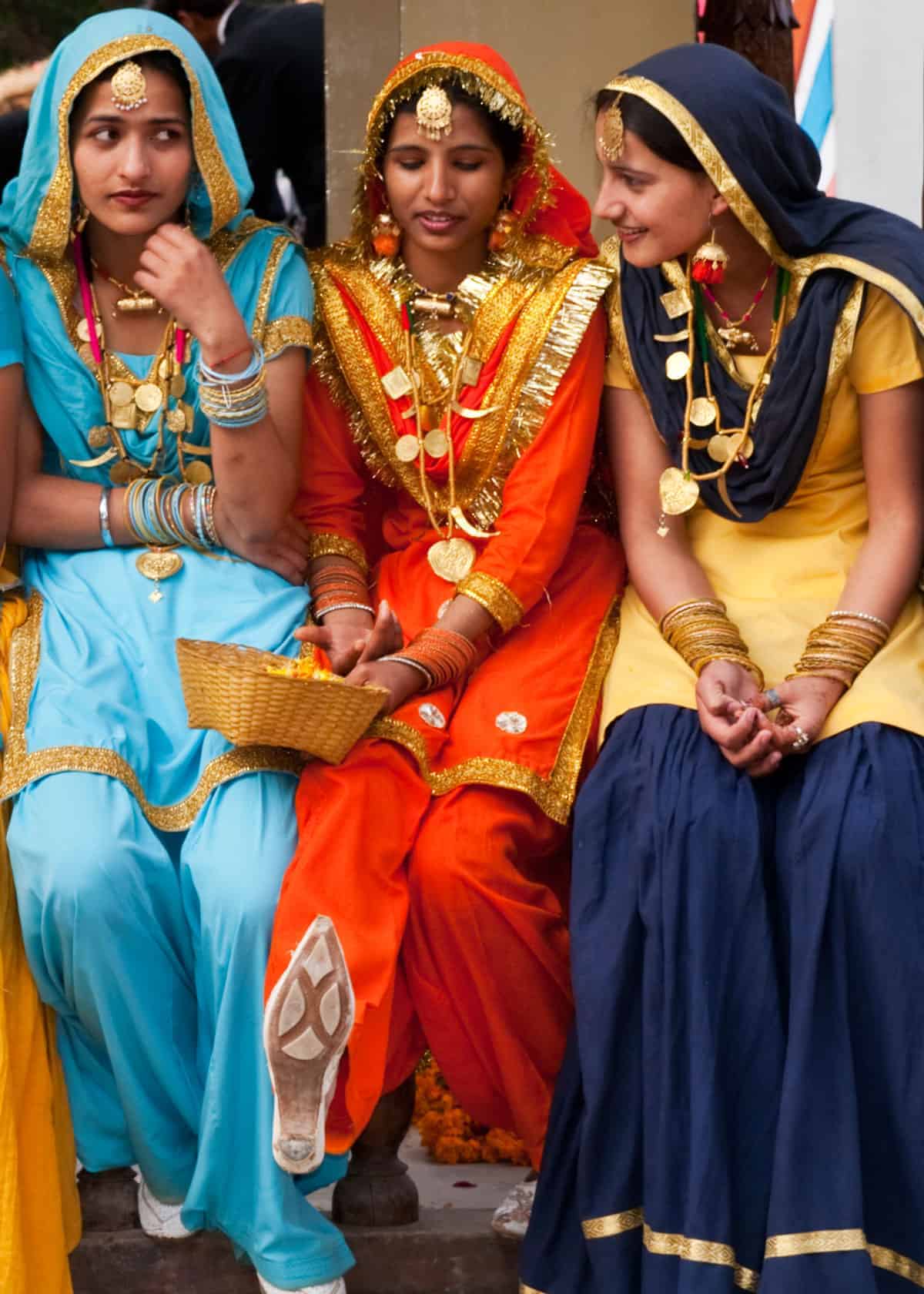
32. How many national parks in India?
India has an impressive 103 national parks, many of which feature majestic wildlife and beautiful scenery. Some of the best national parks in the country are:
- Kaziranga National Park : Home to two-thirds of the world’s one-horned rhinoceros population, in addition to a tiger reserve.
- Corbett National Park : Home to tigers, a jungle safari, elephant rides, and gorgeous waterfalls, this park is a photographer’s dream!
- Gir National Park : This is one of the most famous wildlife sanctuaries in India and is the only natural habitat for Asiatic lions.
- Ranthambore National Park : This park is one of the largest national parks in Northern India and visitors have a high likelihood of sighting one of the park’s many “friendly” tigers.
- Manas National Park : Located in the foothills of the Himalayas, this UNESCO Natural World Heritage Site is also a tiger reserve, an elephant reserve, and a biosphere reserve. Visitors might also catch a glimpse of red pandas and the rare golden langur.
Politics of India
33. what type of government does india have.
India has a federal parliamentary republic and a constitutional democratic republic . In 2019, the president was Ram Nath Kovind .
Other important government positions include the vice president, the prime minister, the chief justice, and the Speaker of the Lok Sabha.
The president is the head of state and commander-in-chief of the armed forces. The prime minister is the head of the executive branch of government and runs the union government. There is also a parliament and judicial system led by a supreme court. The current government system was founded in 1950.
34. How stable is the current government?
According to GlobalEconomy.com and the World Bank, in 2017, India ranked No. 160 out of 195 countries in terms of political stability.
In comparison, Yemen was ranked No. 195, China was ranked No. 116, the United States of America was ranked No. 75, Japan was ranked No. 19 and Monaco was ranked No. 1.
35. How many national political parties are in India?
India has seven major national political parties and dozens of state political parties.
A national party must win 2% or more of seats in the Lok sabha from at least three states, they have recognized as a state party in at least four states and the party polls at least 6% of the votes in four states during the general election.
In 2019, India’s major political parties were:
- All India Trinamool Congress (AITC)
- Bahujan Samaj Party (BSP)
- Bharatiya Janata Party (BJP)
- Communist Party of India (CPI)
- Communist Party of India—Marxist (CPI-M)
- Indian National Congress (INC)
- Nationalist Congress Party (NCP)
Business in India
36. what is india’s largest export.
India’s largest export is gems and precious metals , totaling $42.6 billion USD annually, which is 14.4% of India’s total exports.
Diamonds make up the largest proportion of exports, with nearly 19% of the market share.
37. What are India’s major exports?
In 2017, India’s exports were estimated at USD 299.3 billion.
India’s major exports include cereals, iron, steel, petroleum products, clothing and apparel, vehicles, chemicals, medications, and other pharmaceutical products and precious stones.
38. What is the minimum wage in India?
India’s minimum wage is $0.28 USD per hour . It is amongst the lowest minimum wages in larger economies.
39. Who are India’s major trading partners?
The United States is India’s top trading partner at $46.1 billion USD each year, making up 15.6% of India’s total exports. The United Arab Emirates trades about $30 billion USD each year with India. Hong Kong ($15 billion), China ($12.5 billion) and Singapore ($11.6 billion) round out India’s top five trading partners.
Food in India
40. what food is most popular in india.
India has many popular dishes, many making use of lentils, rice and curry. Some of the most popular dishes are samosas, tandoori chicken, butter chicken, palak paneer, chicken tikka masala, and kaali daal.
41. What kind of food is traditional in India?
India has the world’s largest vegetarian population, so many dishes make use of lentils, rice, curries, and chutneys.
Locally grown chocolates, vegetables, herbs, and fruits are also popular. In North-East India, pork bharta is traditional, and in North India, primarily vegetarian dishes such as aloo tikki, baati, chaat, daal puri, and poha are traditionally consumed.
- In Southern India, dishes are primarily vegetarian, including appam, biryani, koottu, parotta and payasam.
- Western India cuisine utilizes lentils, potatoes, vegetables and other vegetarian options as well, but chicken and duck are also easily found.
- Eastern India cuisine focuses more on fish and seafood traditionally.
42. What can you eat and drink in India?
Indian food is a feast for both the palate and the eyes. Whether you are a vegetarian or a meat eater, you will never leave the table hungry during your visit to India.
In the south, dosa , a fermented crepe made from rice batter and black lentils, is filled with vegetables and sauces as a snack. In the north, don’t miss tandoori chicken with yogurt and spices. This popular dish is marinated and then cooked in a clay oven, making it juicy and tender.
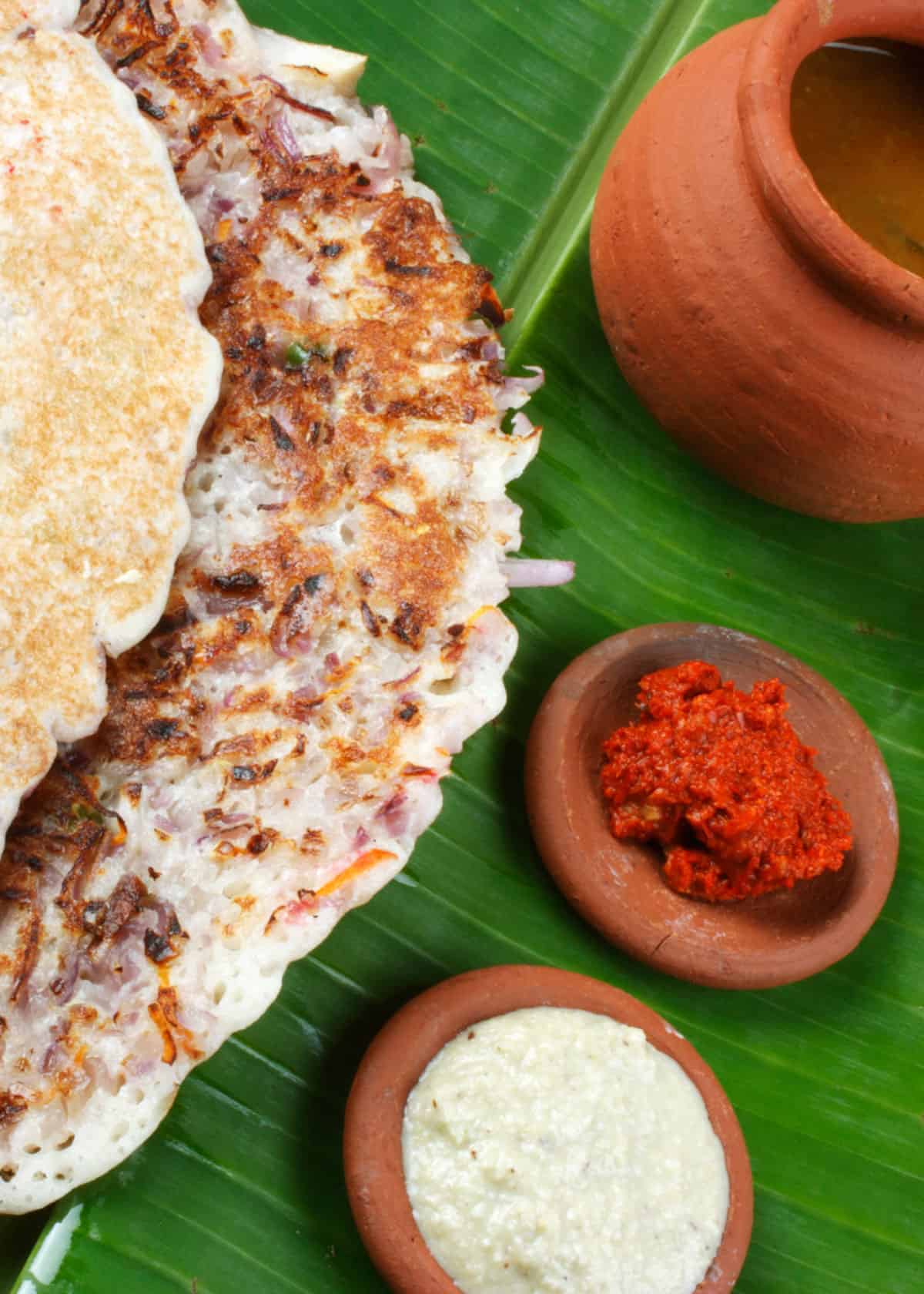
If you’re visiting the eastern part of the country, pal , a dish of curried lentils, rice and vegetables, is a filling and delicious option.
Tea is one of the most popular drinks in India.
Lassi is another traditional option—this delightful yogurt-based drink is blended with water, milk, spices and sometimes even fruit.
43. What is India’s national dish?
India’s national dish is khichdi , which is a one-pot vegetarian lentil and rice dish. It is often the first solid food babies eat, while also remaining popular among adults.
44. What is a typical dinner in India?
While the cuisine of India varies significantly depending on what part of the country you’re in, most meals in the country are accompanied by either rice or roti, which is a whole wheat flatbread).
Dal, a lentil stew, is also popular at many meals. Dinners will also typically include a vegetable dish, condiments, chutneys, relishes, and pickles. For those who eat meat, chicken, fish or seafood dishes are common.
45. What is the most popular drink in India?
In India, most people drink tea throughout the day. In fact, 837,000 tonnes of tea are consumed in India each year. India has many varieties of tea, but one of the most popular is chai.
Believe it or not, India is also actually the world’s largest milk producer , at 16% of the global milk production. Milk is very popular in India.
46. What do the locals eat for breakfast?
There are several popular breakfast dishes in India. The first, jolpan , which is popular in Assam, doesn’t require cooking, making it an easy and quick choice for busy locals. Jolpan includes flattened rice with yogurt, milk or cream, along with jaggery.
Popular in Kerala, puttu is a steamed rice cake and grated coconut, paired with either black chickpea curry, fish curry or jackfruit.
In Manipur, a popular breakfast option is tan , a savory flatbread, eaten alongside black tea.
47. What is the main dish in India?
Flatbreads and rice are typically included in most Indian meals, along with a curried lentil stew (Dal).
48. What fruit is India famous for?
India is one of the largest fruit producers in the world, but mangos are amongst the most popular fruits across the country.
49. What can you not eat in India?
While India has a vast array of delicacies that are safe and appealing to tourists, there are several dishes that should be avoided.
- Golas, a flavored ice candy, should be avoided due to the water used to make the ice.
- Fresh juice should be avoided due to the use of tap water to make the juice.
- Gol gappe, which is a fried crispy bread stuffed with flavored water, should be avoided unless the source of the flavored water is known and trusted.
- Unwashed fruit should be avoided, and safer still is to only consume fruit that you can peel yourself.
- Salads and raw vegetables should also be avoided due to the chances of an E. coli infection unless you can verify that the produce is washed using filtered potable drinking water.
- Meat from street vendors may be stale or not properly refrigerated and should be avoided.
50. Can I drink the water in India?
The tap water in India is not considered safe for tourists. Even in restaurants, it is best to order bottled water that has an intact safety seal. Avoid all beverages with ice as well.
Language in India
51. what are the official languages in india.
India doesn’t recognize a national language but considers Hindi and English to be the official languages in the country.
In fact, India is home to the second largest English-speaking population in the world, behind the United States. India’s states often also have their own language.
52. What language are road signs in India?
Road signs in India are multilingual and include Hindi, English, and the local state language.
Wildlife in India
53. what animals live in india.
India is home to a significant number of beautiful animals including the Bengal tiger, Indian elephant, Indian rhinoceros, Asiatic lion, sloth bear and Indian leopard.
54. What is India’s national animal?
The Bengal tiger is considered India’s national animal.
55. What dangerous animals are in India?
India has several animals that are considered dangerous. Krait, a venomous snake, is considered the most venomous snake in the country and approximately 50,000 people are killed each year by snakes in India.
Bengal tigers kill nearly 1000 people a year in India. The Indian sloth bear is an aggressive species in India, although black bear attacks also happen rather frequently. In addition, leopard attacks have been increasing in various parts of India recently. Finally, over 2000 people have been killed by wild elephants over the past three years.
56. Are there any deadly spiders in India?
While deaths from spider bites are incredibly rare in India, the Indian ornamental tarantula is among the most venomous tarantulas. A bite from one of these eight-inch-long spiders can cause chest pains, muscle spasms and flu-like symptoms.
Plant Life in India
57. what is india’s national flower.
India’s national flower is the Indian Lotus.
58. What types of vegetation are common in India?
India has several types of natural vegetation, including tropical evergreen rain forests, mountain forests, mangroves, desert vegetation, deciduous forests, and monsoon-type forests.
59. What crops are grown in India?
India grows several types of crops.
The first category, food grains, includes millet, pulses, wheat, and maize. India’s cash crops include sugarcane, cotton, tobacco, jute, and oilseeds.
Plantation crops in the country are rubber, tea, coconut, and coffee. Finally, fruits and vegetables are widely grown.
National Symbols of India
60. what is the symbol of india.
India’s national emblem was adopted in 1950 and is an adaptation of the Lion Capital of Ashoka . It involves several lions standing on top of a pedestal with the motto “Satyameva jayate” (Truth Alone Triumphs) underneath.
61. What is the national tree of India?
The national tree of India is the Indian Banyan tree .
62. What is India’s national bird?
India’s national bird is the beautiful and colorful peacock .
63. What is India’s national animal?
India’s national animal is the Royal Bengal Tiger , found only on the Indian subcontinent. The Ganges river dolphin is the national aquatic animal. The king cobra is the national reptile.
64. What is India’s national sport?
India does not have a national sport, although cricket is the most popular sport in the country.
Field hockey is India’s more successful sport at the Olympics. While not always considered a sport, yoga was developed in India over 5000 years ago and is still popular around the world.
Culture in India
65. what are some of the different cultures in india.
India is primarily a Hindu country, although it has a strong religious diversity, including Buddhism, Islam, Christianity, Sikhism, and Jainism. The culture is also heavily influenced by Buddhist philosophy, Yoga Sutras, and the Bhakti movement.
66. What is the population of India?
As of July 2017, the estimated population in India was 1,281,935,911.
67. Is India’s population increasing or decreasing?
India’s population is rapidly increasing and is on target to be the most populated country in the world by 2024 according to Yale Global .
68. How many immigrants live in India?
India has the ninth highest immigrant population in the world, at approximately 5.4 million foreign-born residents .
69. Where do the immigrants in India come from?
Almost all immigrants to India come from South Asian countries , including Bangladesh, Pakistan, and Nepal.
India Immigration and Expat Facts
70. what is the best place to live in india.
Many expats that come to India work in the technology industry. Therefore, the largest expat communities are in Mumbai, Delhi, and Bangalore.
Additionally, English-speaking expats will find that in Southern India, the primary language is English, making the transition to life in India a bit easier.
71. What are the requirements to live in India?
How can I immigrate to India? In most cases, immigrants and foreign nationals must enter India on their own country’s passport, along with having an India visa. The visa must match the intended purpose: tourist, transit, business, employment, student, etc.
If you plan on staying longer than 180 days, registration must happen; you can also leave the country and return on a new visa to avoid registering.
An individual is considered a resident if they are in India for longer than 182 days a year or if they are in India for two months one year but for 365 days the previous four years.
72. How do you become a citizen of India?
Is it hard to become a citizen of India? India allows citizenship for those who are born in the country, who have Indian parents or who are naturalized.
In order to be naturalized, a foreigner must live in India for at least 11 of the 14 years prior to applying for citizenship, including the 12 months prior to application.
73. Is it easy to get permanent residency in India?
India has two options for becoming a permanent resident:
- Overseas Citizen of India (OCI) card
- Persons of Indian Origin (PIO) card
The PIO card is only for those foreigners who are also of Indian origin.
The OIC card is also difficult to obtain and has very specific requirements, including being eligible to become a citizen in January 1950 or those who belong to a territory that became part of India after 1947, as well as their children and grandchildren.
There is no path to permanent residency for those without Indian ancestry unless through marriage or naturalization.
74. How long can I live in India?
Anyone that plans to stay in India for longer than 180 consecutive days must register within the first two weeks of arrival at the Foreigners’ Regional Registration Office (FRRO).
75. How long can I stay in India without a visa?
U.S. citizens are required to have a valid Indian visa to enter the country for almost any purpose. In addition, most foreigners can only stay 180 days or less without having to also register with the FRRO.
76. How can I work in India?
Many expats working in India come for job-related reasons and are thus already employed prior to entering India.
For those in the technology sector who don’t have secured employment prior to arriving, India has one of the world’s fastest growing IT industries, so jobs are relatively easy to obtain, even in a country with the second highest populations in the world.
Expats in a full-time position often report work weeks that average over 48 hours a week.
77. What percentage of India are immigrants?
At only 5.4 million immigrants in a country of over 1.2 billion, the immigrant population makes up only a small percentage, less than 1% , of the overall population.
78. How many expats are in India?
It is difficult to know exactly how many expats are currently living in India, but it is estimated that there are currently around 30,000 , with the majority of expats come from Europe, North America, and Australia and move to India for job-related reasons.
Only a small number are students or retired. Nearly half of the expats surveyed own property in India and have families.
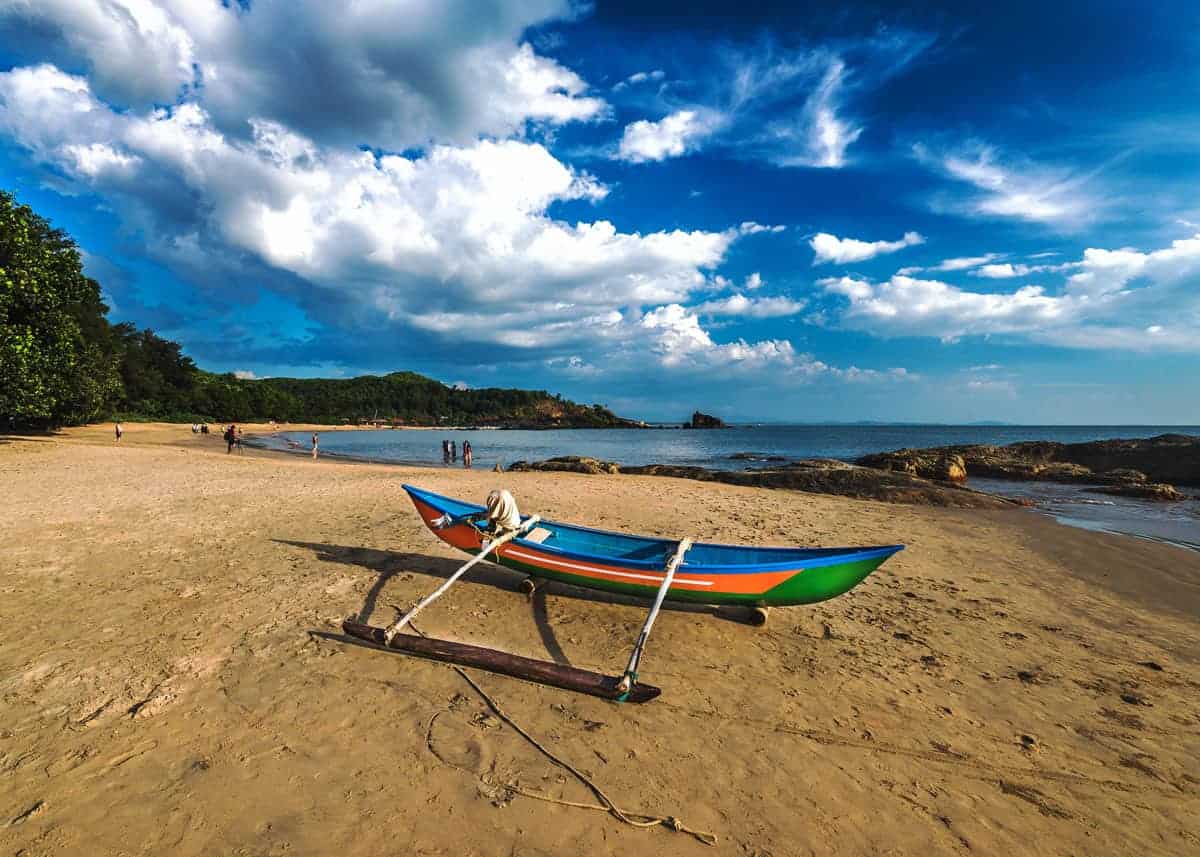
With such a rich culture and amazing collection of flora, fauna, national parks, monuments, cuisines and World Heritage sites, these facts about India are only the tip of the iceberg. There is so much to learn about and enjoy in this beautiful country!
Have a fact about India to share? Or maybe a question about visiting / living in India? Join me in the comments!
Hi, I'm Bryan Haines . And I'm a co-founder of Storyteller.Travel . I'm a traveler and photographer.
I also blog about photography on Storyteller Tech .
Similar Posts

14 Largest Lakes in Europe: Listed by Size
Europe is filled with beautiful lakes and rivers. What is largest lake in Europe? And how does it compare to the other large lakes in this region? In this post, we’ll compare Europe’s largest lakes – by area, volume and depth. What’s the largest lake in Europe? Lake Ladoga in northwestern Russia is the largest…

14 Things to Do in Kampala Uganda (Bonus: 11 Kampala Facts)
Thinking about visiting Kampala while in Uganda? In this post, you’ll learn all about Uganda’s capital city – interesting facts and many things to do in Kampala. Looking for facts about Kampala? Jump to that section now. 14 Things to Do in Kampala Uganda Here are 14 things to do in Kampala Uganda. Did we…
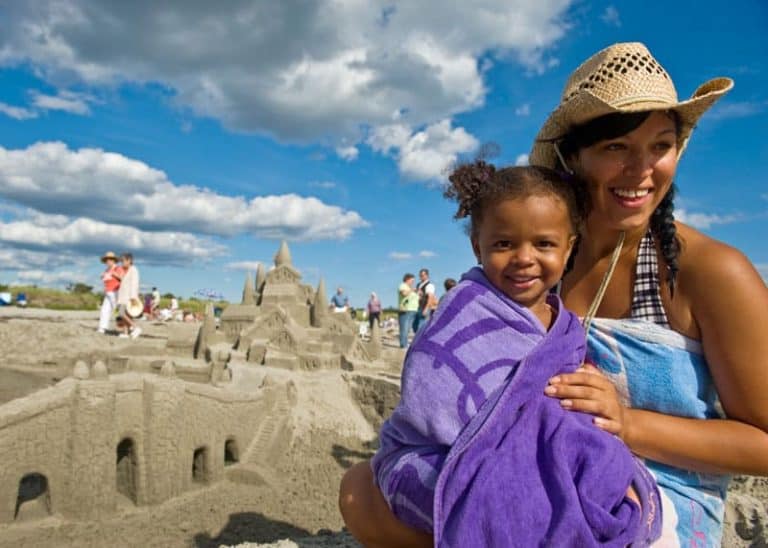
Nova Scotia Beaches: Guide to 41 Best Beaches in Nova Scotia
Looking for the best beaches in Nova Scotia? Here’s the complete guide to Nova Scotia beaches – including the longest, warmest and best surfing beaches. Despite its northern location, Nova Scotia is known for having some of the warmest waters north of the Carolinas. And with 7500 km of coastline, there are a lot of…

What’s the Largest Lake in Africa? 9 Largest Lakes Compared
Africa is home to many huge lakes. What’s the largest lake in Africa? And where are the best places to visit? In this post, you’ll learn about the 9 largest lakes in Africa. Plus lots of photos and details. Africa has so much to offer a western traveler including world-renowned lakes. Second only to the…
![indian travel language 15 Incredible Things to do in Uganda [Culture, Nature, Culinary, Adventure…]](https://storyteller.travel/wp-content/uploads/2018/10/things-to-do-in-uganda-768x548.jpg)
15 Incredible Things to do in Uganda [Culture, Nature, Culinary, Adventure…]
Here are 15 things to do in Uganda. They include gorilla trekking and animal safari, adventure sports, cultural events and much more. 15 Incredible Things to do in Uganda Nicknamed the “Pearl of Africa” by Sir Winston Churchill, Uganda offers a smorgasbord of impressive attractions and unique things that you can’t see or do anywhere…
![indian travel language Uganda’s 10 National Parks & 4 Wildlife Game Reserves [Travelers Guide]](https://storyteller.travel/wp-content/uploads/2018/10/uganda-national-parks-768x548.jpg)
Uganda’s 10 National Parks & 4 Wildlife Game Reserves [Travelers Guide]
Planning your Uganda trip? In this post about Uganda’s 10 National Parks and 4 Wildlife Game Reserves, you’ll learn about their topography, animals you can see, and where they are located. We also include 7 travel videos to give you a true picture about each Uganda National Park. Uganda’s 10 National Parks The national parks…
One Comment
The facts are truly amazing.
Leave a Reply Cancel reply
Your email address will not be published. Required fields are marked *
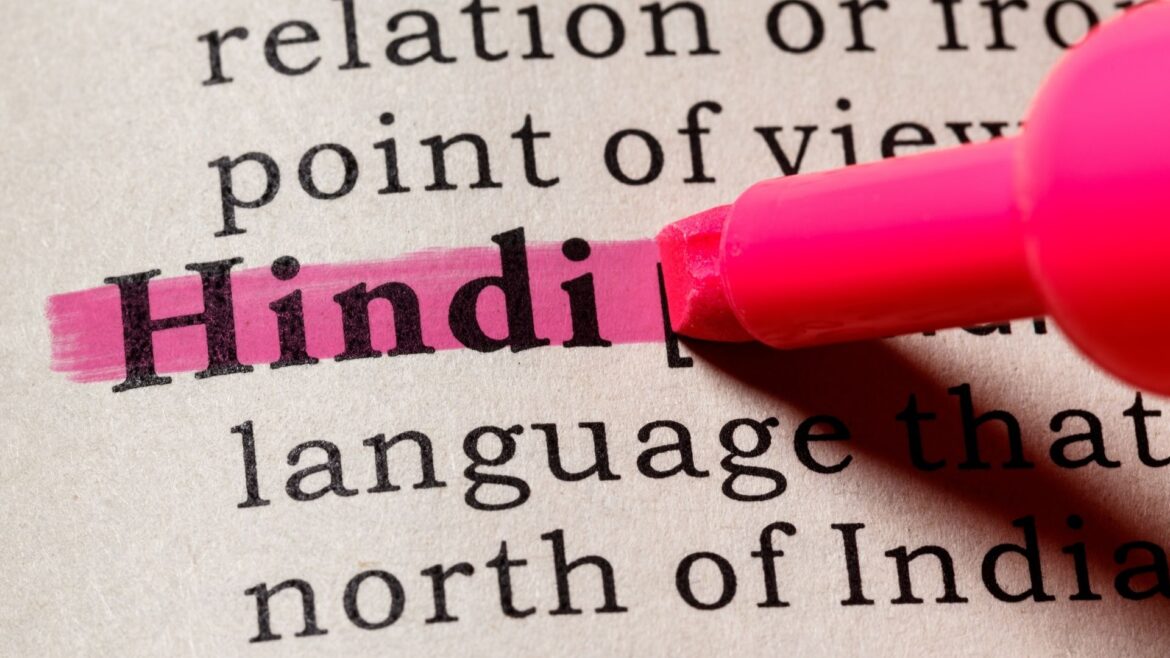
Hindi – A Quick Language Guide For Travelers Visiting Northern India
Spread the Word!
Is it your first time traveling to India and are you having difficulty finding sources to learn the fundamentals of Hindi?
Learning a new language can provide you with a greater understanding of the culture and history of a country. Learning the regional language would also enable you to communicate with more people. This guide covers some of the basic greetings, phrases, and words that are colloquially used in day-to-day conversations and are super helpful during your travel to India.
We highly recommend you learn these phrases now! Ensure you have a hassle-free trip.
Disclaimer: We only recommend products that we use ourselves. This post might contain affiliate links, meaning we may earn a small commission when you click on the links at no additional cost to you. Read the full privacy policy here .
Basic Hindi For Travelers
Table of Contents
India is the seventh-largest country in the world, and it is home to a total of 1600 recognized languages including 121 more common languages and 270 mother tongues. In fact, the states are divided based on language. People of Tamil Nadu speak Tamil, Gujarat speaks Gujarathi, and Orissa speaks Oriya to name a few. Given the amount of diversity present in India, while English is considered to be the common language, India does not have an official language. Yet, in the northern part of India, Hindi is prevalent due to the similarity in the regional dialect.
Note: Hindi is spoken by approximately 200 million people in the country.
Places Where Hindi Is Spoken In India & Outside India
Delhi, Rajasthan, Madhya Pradesh, Bihar, Uttarakhand, Uttaranchal, Jharkhand, Chhattisgarh, Haryana, and Himachal Pradesh are just some of the states where Hindi is considered the mother tongue and as such is spoken fluently by the people.
Now outside of India, more than 25% of the people of Suriname, South Africa, Fiji Island, Mauritius, Nepal, Pakistan & Bangladesh comprehend and speak Hindi. Indians have migrated and settled across various countries over the years thereby spreading the language.
Things To Know Before You Start To Learn Hindi
Inquisitive to know more?
Language is key to helping you get a more authentic exchange with the locals. If you are curious to know about Indian culture, learning its more common regional language will greatly aid you. We recommend that you should know the following basic things before you even start learning Hindi.
Hindi is a phonetic language , which means that the words are spoken exactly in the same way they are written. Unlike English, Hindi has no capital and small letters and you can see over-line(s) on all the letters. Also, Hindi has 137 total letters including conjuncts (letters that join together to make a new letter).
Sentence Pattern
It is important to understand how to combine words to frame a sentence. Unlike English which follows Subject+Verb+Object, Hindi follows Subject+Object+Verb for framing the sentences. For example, in English, we say “I went to Goa” whereas, in Hindi, it is “Main Goa gaya tha” (I Goa went). The action verb is placed at the end of the sentence after the object. This becomes challenging for complex long sentences.
Similar Sounds
Many phonetically identical sounds chime similar to a foreigner’s ears but are different to the native speakers. For example, the ‘ta’ and the ‘tha,’ the ‘da’ and the ‘dha,’ the ‘pa’ and the ‘pha,’ and so on. Say these words more vocally and you will notice the difference. Mispronouncing the sounds in a sentence might change the meaning of the word you are intending to say. So first, learn the vowels, consonants, and their sounds to ensure you pronounce the words correctly.
- बाग़ – Baag – Garden
- बाघ – Baagh – Tiger
- भाग – Bhaag – Part
Basic Gender
When a verb ends with the ‘aa’ sound, it refers to the masculine gender. It can be changed to the feminine gender by replacing ‘aa’ with ‘ee’. Feminine plurals are often made by adding the ‘yaan’ to a singular word. For example, ‘Churi’, bangle becomes ‘churiyaan’ (churiyaan). Masculine plurals emphasize the ‘o’ sound. Thus ‘mard’, man becomes ‘mardon’, men.
These are the most common challenges faced by English speakers or Europeans while learning Hindi. But when you have mastered phonics and grammar, you can learn the language at a more comfortable pace.
Most Used Words And Phrases During Travels
We highly recommend listening to the audio while going through the list. This will greatly aid you in getting a hang of how to pronounce the words and phrases correctly. We will detail each useful phrase and when to use them. All you need to do is speak the translated version verbatim.
- Hello – नमस्ते – Namaste

Namaste is best used when formally meeting/greeting someone. It is also used in situations to mean ‘hello’ or ‘goodbye’. Namaste is often said by joining both hands together and bowing your head with respect.
- Good Morning – शुभ प्रभात – shubh prabhaat
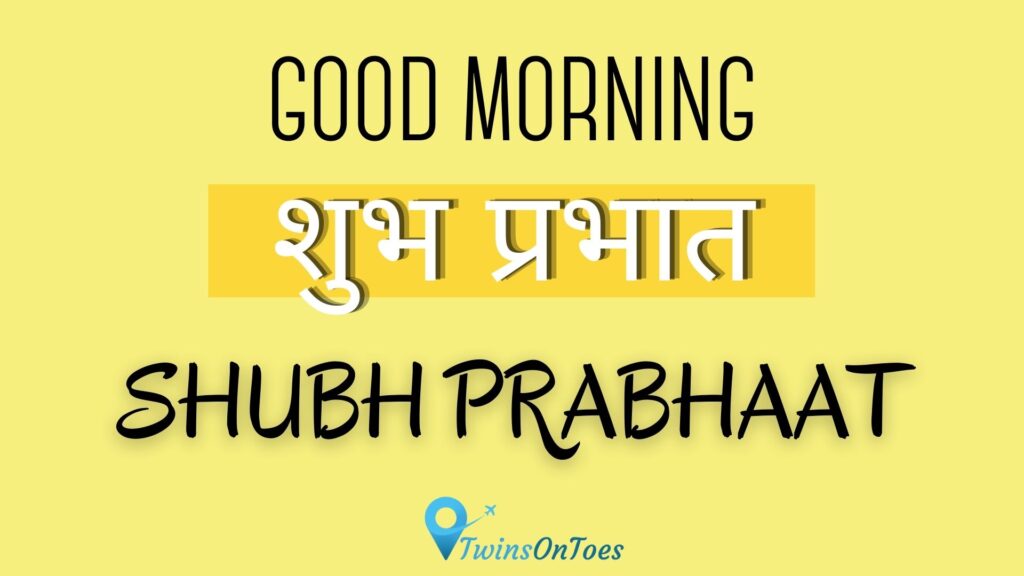
Shubh prabhaat is said when wishing someone a good morning/good day.
- Bye – अलविदा – Alvida
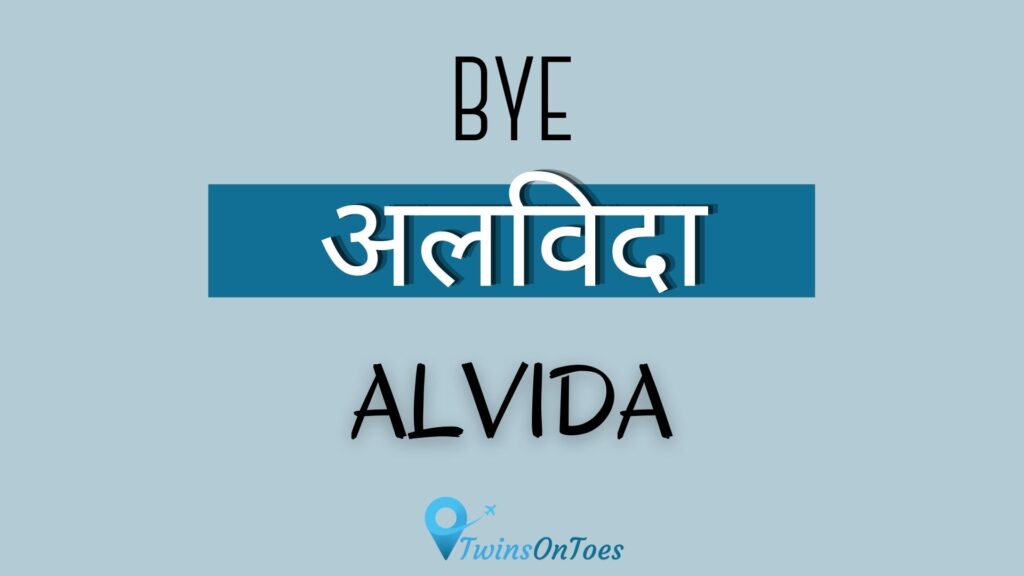
Bye is the most common. Whereas Alvida is not used by most Hindi-speaking people. Bye is said while leaving when you know you might not see that person for a while.
- Please – कृपया – Krpaya
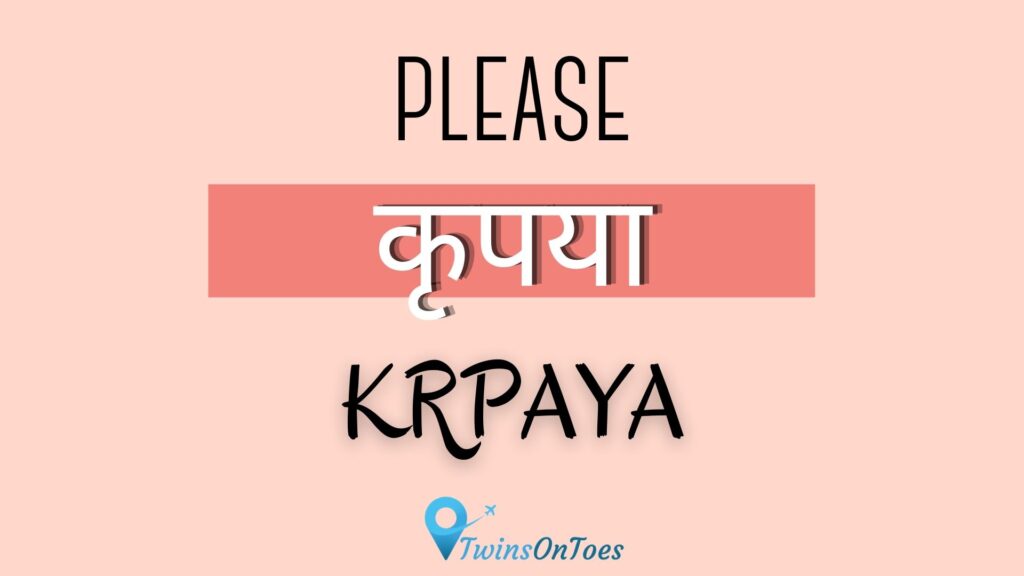
Krpaya is used when you are asking/requesting someone or a group of people for something.
- Thank you – शुक्रिया /धन्यवाद – Shukriya/ Dhanyavaad
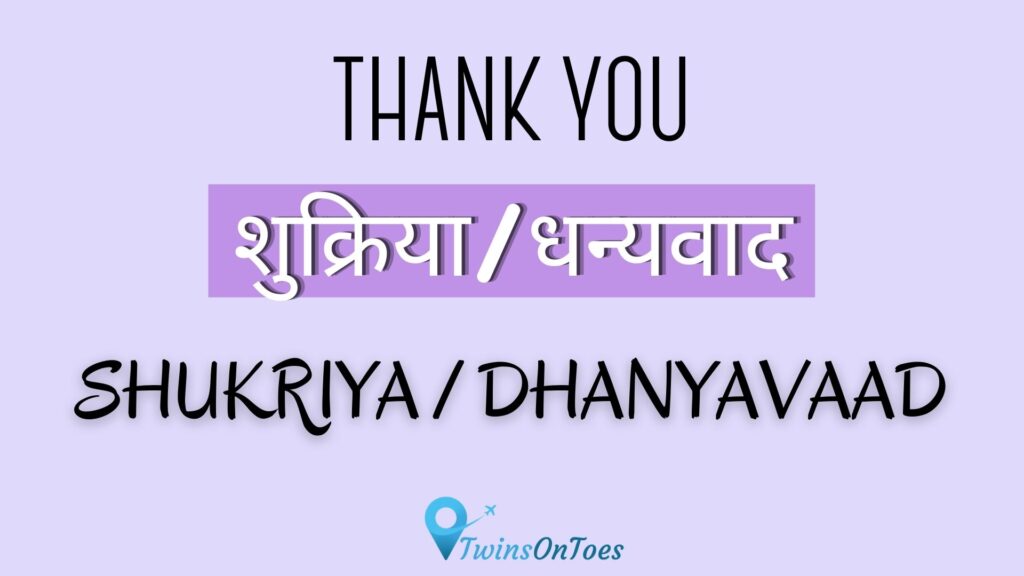
Both the words Shukriya or Dhanyavaad mean Thank You. It is used to express gratitude when someone does something nice for you when you receive a compliment or more often when someone does a favor for you.
- You’re welcome – आपका स्वागत है – Aapka svaagat hai
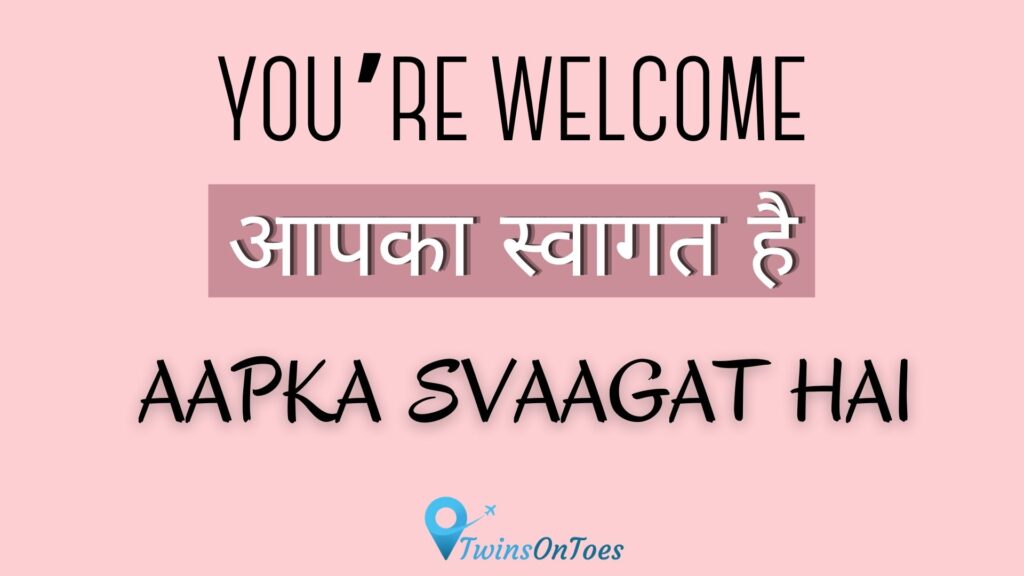
‘Svaagat hai’ means ‘Welcome’. People stick to saying Welcome rather than uttering the whole sentence. It is usually said as a formal reply to thank you.
Tip: Aap, Tum, Tu (आप, तुम, तू) are other variations of telling ‘you’ where Aap is polite and it is an honorific.
- How are you? – आप कैसे हैं? (formal) / तुम कैसे हो? (informal) – Aap kaise hai? (formal) /Tum kaise ho? (informal)

Often spoken when meeting a person. It is a customary greeting to inquire about someone’s emotional/physical well-being.
- I’m fine/ok – मैं ठीक हूँ – Main teek hoon
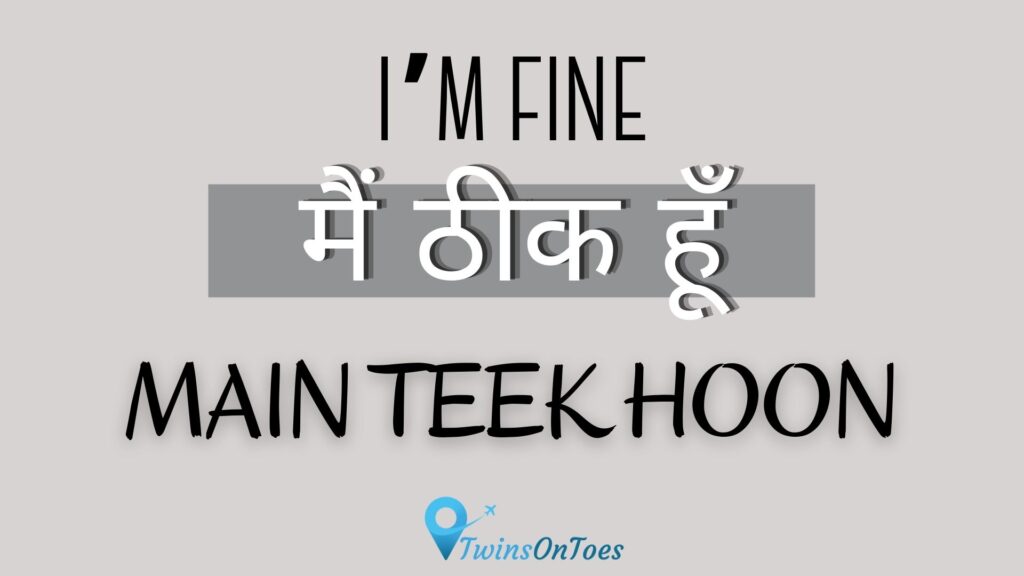
A reply when asked, ‘How are you?’ It is a generally positive way of saying, nothing’s wrong and that you are doing good.
- Excuse me – मुझे माफ़ कीजिए – Mujhe maaf keejie
Sorry – माफ़ करना – Maaf karana

Used as an apology or more ideally when you do something you don’t intend to.
- Wait – रुको – Ruko

Spoken when you want someone to stop or hold on for a certain period. While traveling, this is used in situations when you want to ask a bus to stop that has just started moving or when you are in a taxi and you wish to stall.
- My name is ….. – मेरा नाम <your name> है – Mera naam <your name> hai
I’m …. – मैं <your name> हूँ – Main <your name> hoon
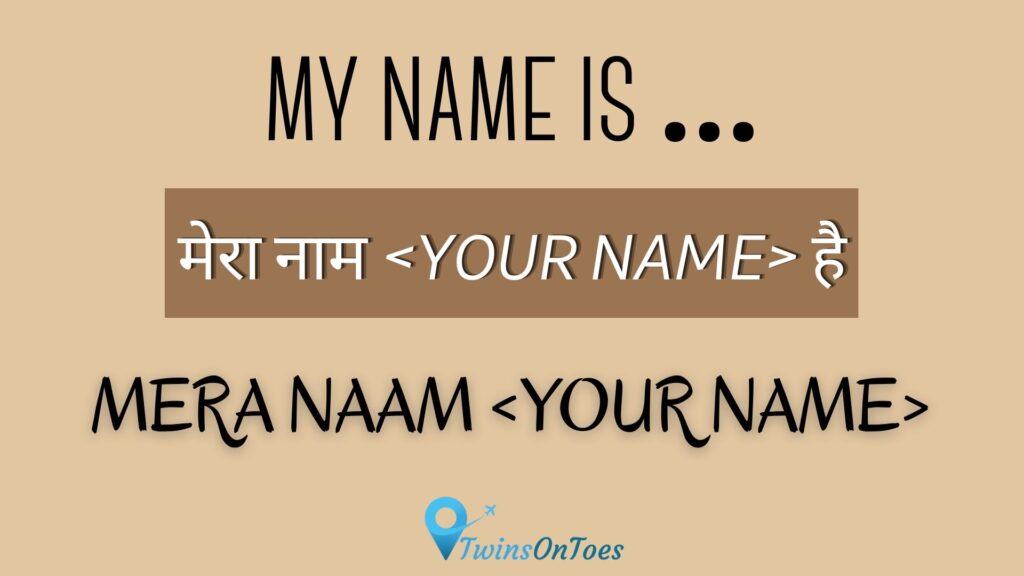
Insert your name in the sentence. For instance, “I’m Atchaya” is said as “Main Atchaya hoon”. Useful when introducing yourself to someone you’ve just met or when checking in to your hotel or accommodation.
- Yes – हां – Haan, No – नहीं – Nahi
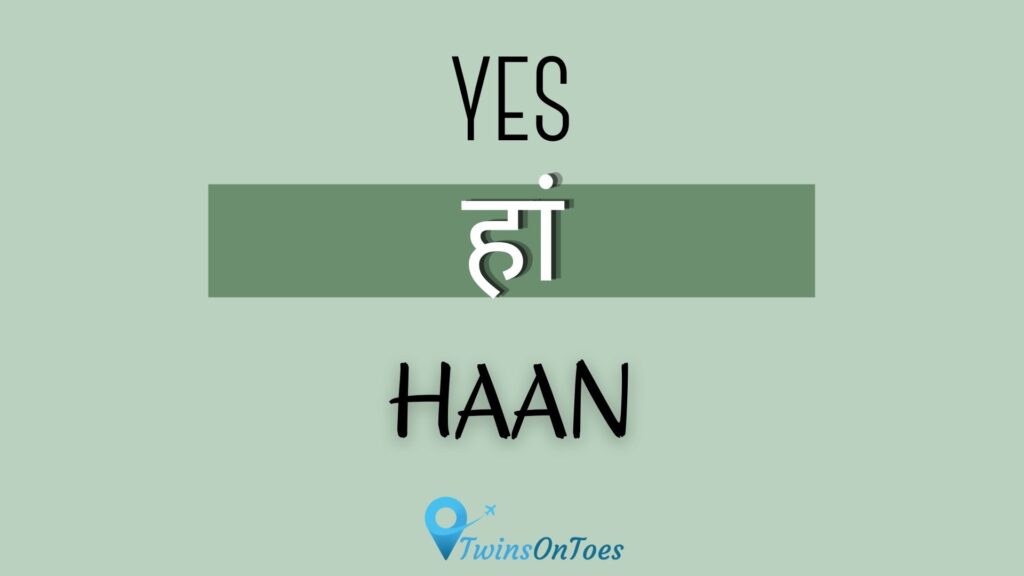
- Ji – जी – Ji
Ji is an honorific, added as a prefix or suffix in any sentence and for titles. For instance, while speaking with elders, ‘haan ji’ is said instead of ‘haan’ for yes, and ‘ji nahi’ instead of ‘nahi’ for no. Individual’s names are also appended with ji as honorific respect, similar to Mr/ Miss/ etc. in English. Mummy as Mummy ji, and so on.
- No, Thanks – जी नहीं, धन्यवाद – Jee Nahi, Dhanyavaad
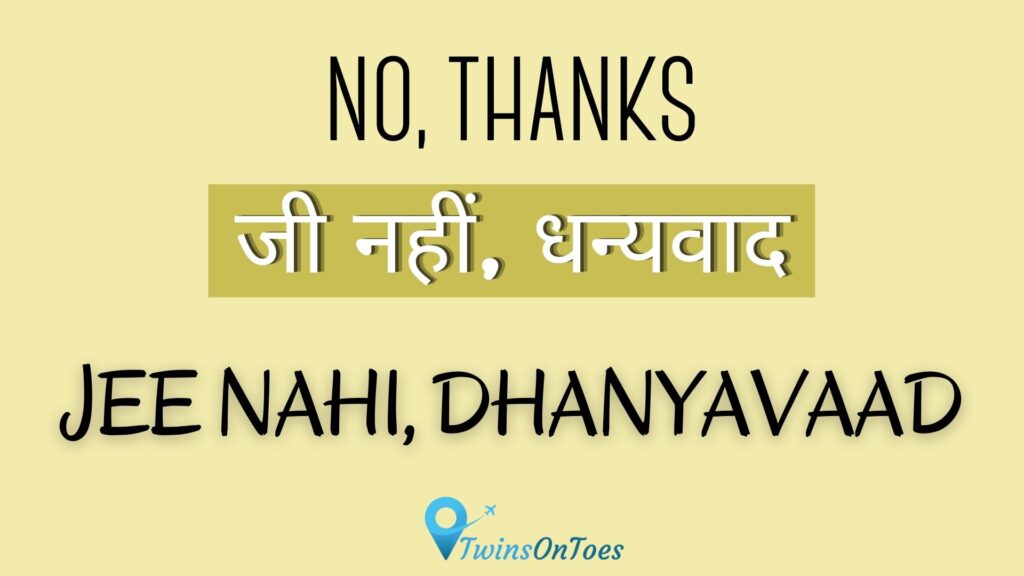
It is the politer form of denying a request without sounding disrespectful. A very useful word to remember while street shopping in India.
- How much is this? – ये कितना है? – Ye kitana hai?
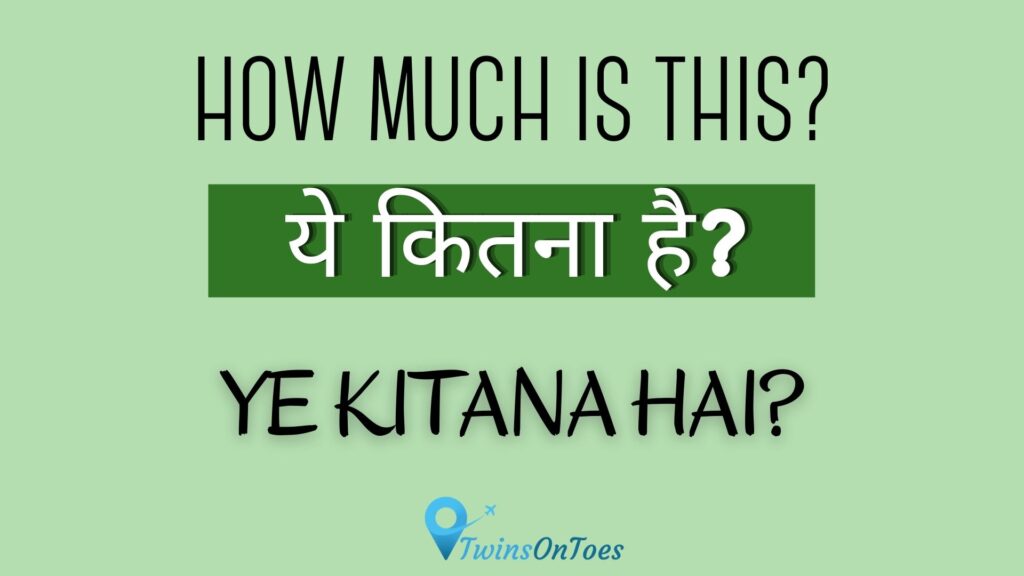
To find the cost of something. If you don’t understand when they respond, ask them to write it down or show signs with their hands.
- What is this? – यह क्या है? – Yah kya hai?

Extremely useful when you don’t know something. You can point to something in a particular object or food and ask what is this? to know more about them.
- Do you accept credit cards? – क्या आप क्रेडिट कार्ड से भुगतान लेते हैं? – kya aap kredit kaard se bhugataan lete hain?
Digital payment systems are becoming more popular in India (Indian bank account needed). However, if you want to make payments using cards, this phrase will be quite useful and save you from withdrawing cash all the time.
- Where is …? – <place> कहाँ है? – <place> kahaan hai?

If you want to go to a particular place, add that place in the sentence. To illustrate, if nature calls, ask “toilet kahaan hai?”
- Do you speak English? – क्या आप अंग्रेज़ी बोलते हैं – Kya aap Angrezee/ English bolate hain?
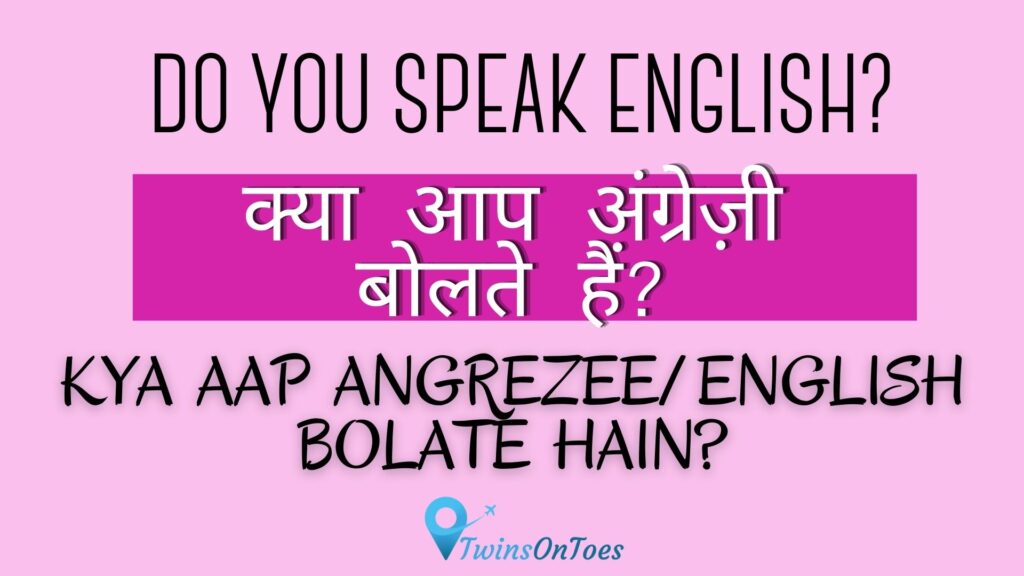
The most helpful sentence that you might need in your travels is to ask someone if they are familiar with the language that you know. In most cities and tourist spots, people can understand and converse in English.
- I don’t understand – मुझे समझ नहीं आ रहा है – Mujhe samajh nahin aa raha hai

If someone talks in Hindi and you don’t know what they mean, this phrase comes in handy. You can also do some hand gestures to make them understand.
- Help – मदद – Madad
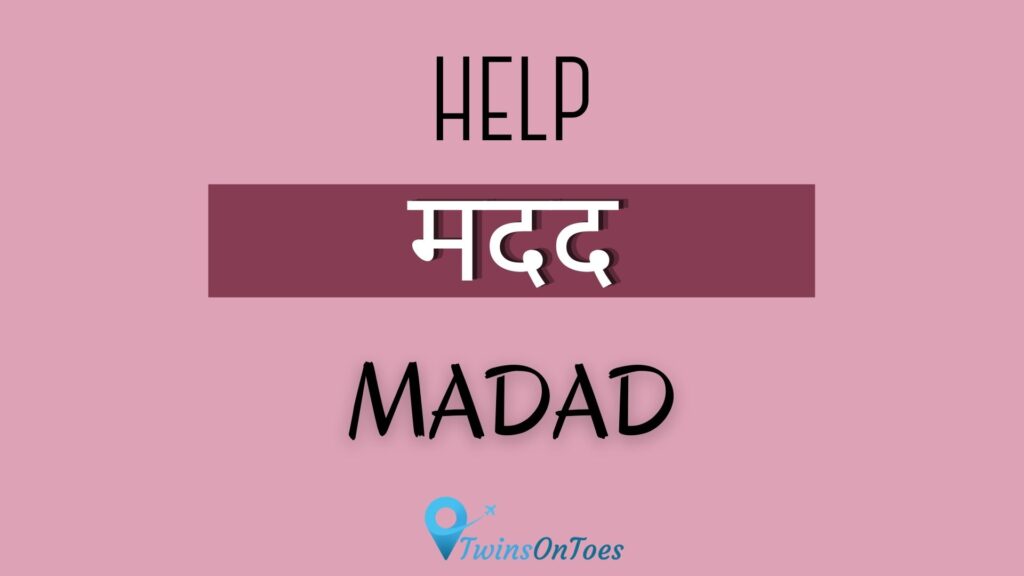
If you require assistance or in case of emergency, this is the word to use.
- Menu card and water, please – मेनू कार्ड और पानी, कृपया – Menoo kaard aur paanee, krpaya
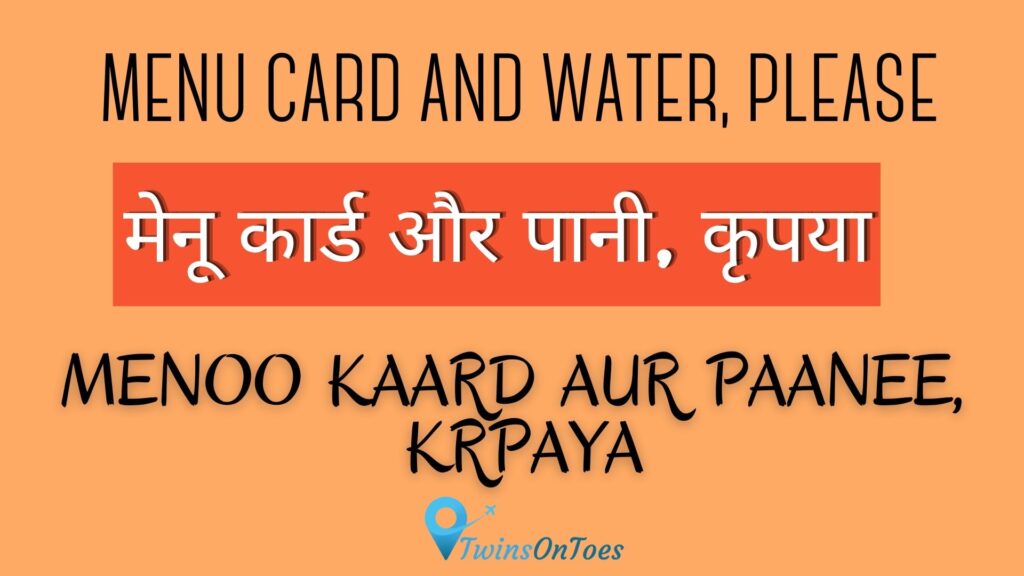
In restaurants, before starting a meal, to look at the menu available and have some water (paanee), use this phrase.
- Take me to this address, please? – कृपया मुझे इस पते पर ले चलिए – Krpaya mujhe is pate par le chaliae
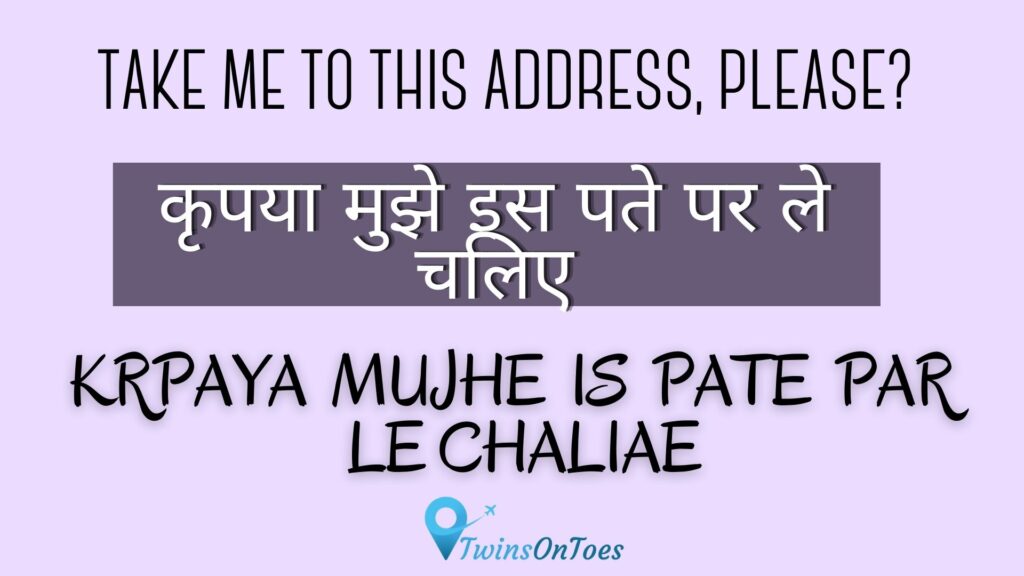
This phrase can be used when you have hired a cab/rental and inform the driver of the destination.
- Can you take a photo of me? क्या आप मेरी फोटो खींच सकते हैं? – kya aap mere photo kheench sakate hain?

There might be circumstances where you might want to ask locals to click a picture of you during your travels.
- Hey – अरे – are (pronounced as ‘array’)
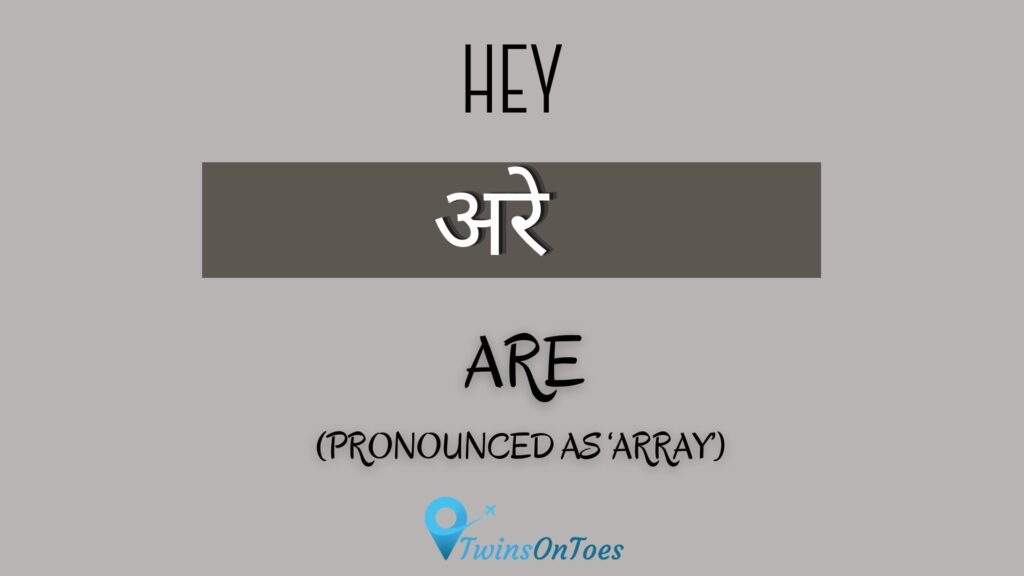
An impolite way to call someone to hold their attention. The politer way would be by adding ‘ji’ or ‘aap’ after are
- Are yaar – अरे यार – hey dude/ oh, dude
- Are bhai – अरे भाई – hey brother
- Are aap – अरे आप – hey you
- Are ji – अरे जी – hey (with respect)
Other Common Words That You Hear Often And Their Meanings

Wala/ Wallah – The one with …/ The one who is…/ The one from … – For example, Dhoodh(milk) wala is the one with milk, Chotta wala – the short one, Delhi wala – the one from Delhi.
Question Words
- What – क्या – kya (used for objects/things where there are many)
- Which – कौन – kaun (used for an object/thing)
- Where – कहां – kahaan (used for a place)
- Why – क्यों – kyon (used for a reason)
- Who – कौन – kaun (used for a person)
- How – कैसे – kaise (used for a method)
Frequently Asked Questions
Is it possible to learn hindi by watching hindi movies and tv shows.
Yes, you can. It is recommended if you are already familiar with the basics of the language. However, it is not that easy and takes time. It can increase your fluency in words that you have already picked up. But merely watching Hindi films and TV shows with subtitles is not a proper learning medium.
How long does it take to learn Hindi?
It really depends on the time you spend learning the language. The commitment and practice you put in every day, and prioritizing your learning will make you learn faster. Like learning any new skill, curiosity, and interest plays a crucial role as those qualities make language learning more fun and enjoyable.
Do you have to learn Hindi to live in India?
It depends on the region where you decide to stay. If you are prepared to stay longer, comprehending the regional language can help you in several ways. But, you can manage with basic Hindi if you are planning to stay in the Northern states of India. People from the south speak their own native languages.
How to travel in India without knowing the native language of the state?
Many foreigners come to India and to everyone’s surprise, they travel better than Indians without knowing the regional language. Language should not be a barrier to visiting any country. Many South Indians don’t speak Hindi yet travel to different corners of the north. There won’t be any language problems in tourist places but you might face difficulties in remote and offbeat places. For traversing the hidden gems, or the more remote corners of the country contact local tour operators, who are usually very comfortable with English. You can also opt for group treks in the region. When it comes to the worst of situations, there is always Google Translate.
Is it difficult to travel to India without knowing Hindi?
Hindi is not essential but is the more widely spoken language. Not all, but the most important signboards are written in both English, the regional language, and Hindi. Most employed staff in Hotels, restaurants, shops, guides, taxi drivers, etc. speak English and regional languages fluently. Most people are educated in the English medium and hence can comfortably converse in English.
How many languages do Indians usually speak?
An average Indian speaks 2 – 4. Knowing a minimum of two languages – their native language and English as it is the medium of instruction or their second language at schools.
How do Indians learn to speak multiple languages so easily?
Indians watch movies and hear songs of the neighboring states as some of them are phonetically identical. People who migrate to neighboring states for jobs, higher education, or holidays tend to learn the regional language as it will definitely help them for a long comfortable stay. Indians also have mixed neighbourhoods that speak a different language as they have the liberty to settle in any state.
Is Hindi the national language of India?
There is no national language in the multilingual country of India. English is considered to be the official language.
Do I need to go to a Hindi school? What are the best Hindi schools in India?
If you want to be an expert in the language or take Hindi speaking skills to the next level, you can learn it full-time or part-time from professionals in a well-structured manner. However, the same can be done by attending with the help of online tutors as well. Refer to this blog by Karl Rock to know more about the best Hindi schools in India.
Additional Resources To Learn Hindi
- Lonely Planet Hindi phrasebook and dictionary
- Berlitz Hindi phrasebook and dictionary
- YT channels like Hindi University
- Mobile applications such as Drops ( Android , iOS ), Duolingo ( Android , iOS ), etc.
- Google translate
- Online tutor – Preply , Urban Pro
Language is no barrier in India. In most urban places the majority of the populace can converse in English, and if you do not speak English, it’s best to start miming. From personal experience, we can state with a certain degree of certainty that the people in India are generally patient and hospitable to tourists. We hope you have a wonderful time in India. For information on the many secret places that India houses, do refer to our other blogs.
If you find this information useful, save this post and share it with your friends and family who are planning to visit India. For more information such as this and many more, subscribe to our newsletter right away!
Related Posts
- Super helpful practical safety tips for female travelers!
- How to dress in India to blend in with Indians and outfits for different occasions
- Indian street food guide and tips to avoid stomach infections
- How to get a local sim card in India with all the information you need to know
Save For Later!
You may also like, how to find free accommodations in india: budget travel tips, the best hitchhiking guide that will make you pack your bags and..., learn to negotiate in india like a pro, how not to look like a tourist in india, safety tips for solo females & women traveling in india, how to dress and what to wear on different occasions in india, renting a two-wheeler in india – an in-depth guide, 20 etiquettes to follow while visiting any hindu temple in india, different transport systems in india – an essential guide, surviving delhi belly, an indian street food guide, leave a comment cancel reply.
Save my name, email, and website in this browser for the next time I comment.
209 Most Common Hindi Phrases for Travel [PLUS Printable & Audio]
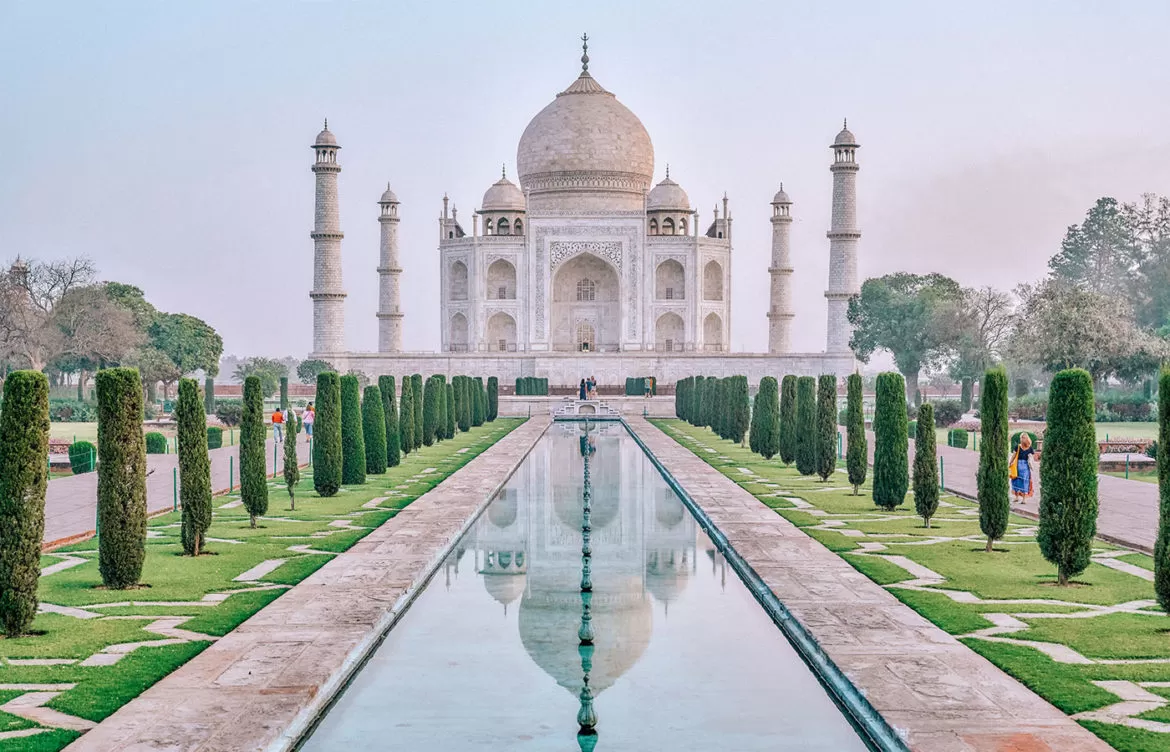
Visiting the Taj Mahal or ordering a yummy curry? Then you need this free printable guide with common Hindi phrases for travel.
Travelling to India and want to learn some common Hindi phrases? You’re in the right place! You don’t have to learn the entire Hindi language to be travel fluent . Just being able to understand and use common Hindi phrases and expressions will make all the difference when it comes to comprehension. This travel phrase guide will introduce you to the Hindi language with details about its origin, where it’s spoken, and more importantly, how to understand and speak Hindi.
Just like all my other travel phrase cheat-sheets , this travel phrase guide full of useful phrases in Hindi includes practical phrases and vocabulary which will help you better understand its speakers and have more meaningful conversations and interactions. To help me create this guide, I asked my friend and Hindi teacher, Babita Craig from Babita’s School of Hindi to provide translations, transliterations, and audio clips to make the learning process easier.
Want to have fun whilst learning Hindi? Struggling to find decent Hindi language resources? I recommend getting uTalk . Available as a desktop site and app, uTalk is awesome for learning key words and phrases in Hindi, especially if you want to use it for travel purposes. It’s great for beginners getting started in a language and invaluable for intermediates looking to fill in gaps in their vocabulary and pronunciation.
What I love most about uTalk is that you can jump around their extensive library of topics and choose what you want to learn, when you want, and at your own pace. Because I believe in uTalk so much, I reached out to them and we’ve teamed up to offer you an exclusive 30% OFF reader discount across all of uTalk’s 140 languages! This offer isn’t available anywhere else! Click here to claim your exclusive 30% discount.
Let’s take a closer look at the Hindi language. Here’s what we’ll cover:
Table of Contents
Where is hindi spoken.
- A Quick History of Hindi
How many people speak Hindi?
Hindi alphabet, hindi pronunciation, hindi grammar, hindi false friends.
- Hindi Words in English
Hindi Culture Travel Tips
How to be polite.
- How to Ask Questions
- Eating out and Ordering Food
Getting Around
Sightseeing, days of the week, emergencies.
- 209 Common Hindi Phrases for Travel [Infographic]
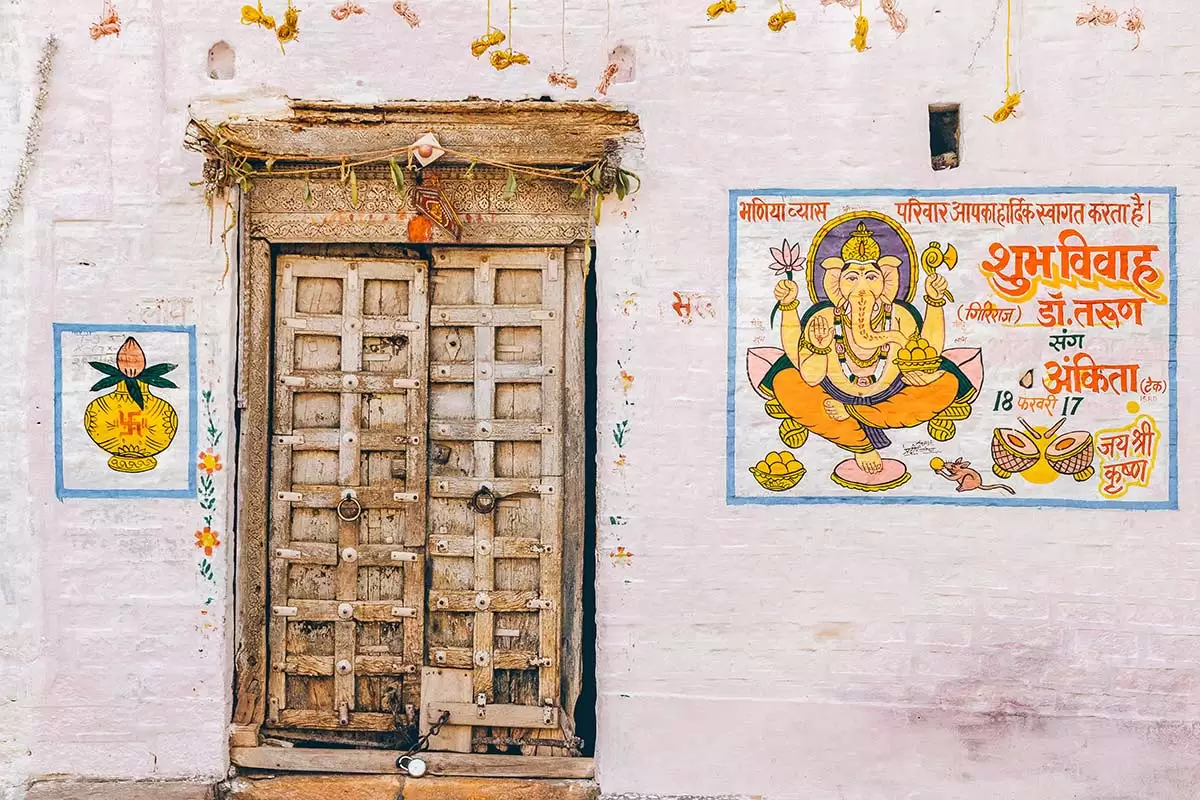
A quick history of the Hindi language
Hindi has its roots in the ancient Indo-Aryan language of Sanskrit; however, modern Hindi, as it is spoken today across India, is closely associated with Urdu, with the main differences being in how they are written and in the high-level vocabulary and culture on which they draw. For example, Hindi, like Sanskrit, is written in the Devanagari script, and is heavily influenced by Hindu culture and history, whilst Urdu, is written in a modified version of Persian, and uses many Persian and Arabic words. Modern Hindi has also taken on many English words, which you will hear used in its everyday spoken form.
The following sentence is a great example of this:
मेज़ पर पानी की बोतल है ( mez par paanee kee botal hai ) – The water bottle is on the table.
Here, the Hindi word for water is used ( paanee ), the Urdu word for table ( mez ) and the English word for bottle , albeit with a slightly different pronunciation.
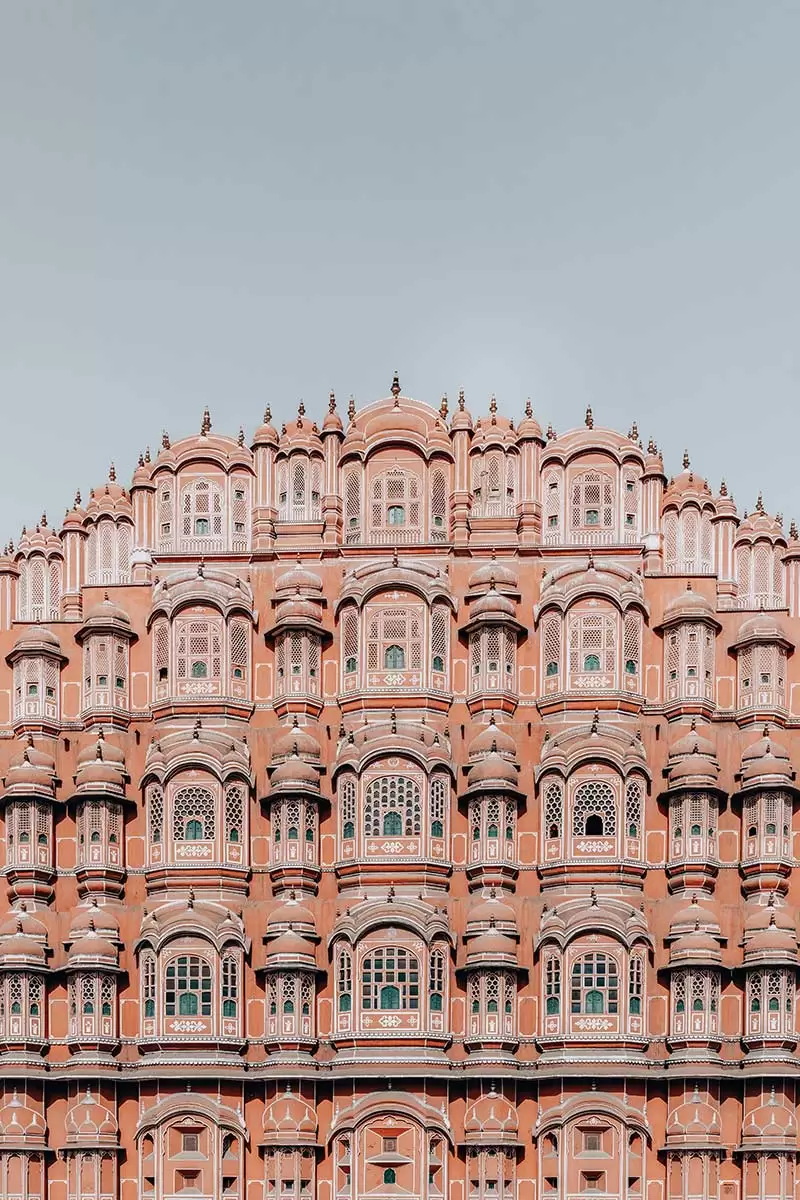
Hindi is written in the Devanagari script, which has 46 letters in total; 35 consonants and 11 vowels, as well as three conjunct letters (a combination of two consonants), which are commonly included.
अ (a) आ (aa) इ (i) ई (ee) उ (u) ऊ (oo) ऋ (ri) ए (e) ऐ (ai) ओ (o) औ (au)
Gutturals क (ka) ख (kha) ग (ga) घ (gha) ङ (gn)
Palatals च (cha) छ ( chha) ज (ja) झ (jha) ञ (yn)
Cerebrals ट (ta) ठ (tha) ड (da) ढ (dha) ण (na)
Dentals त (dha) थ (tha) द (da) ध (dha) न (na)
Labials प (pa) फ (pha) ब (ba) भ (bha) म (ma)
Semi-vowels य (ya) र (ra) ल (la) व (va)
Sibilants श (sha) ष (shha) स (sa)
Glottal ह (ha)
Flaps ड़ (da) ढ़ (dha)
Conjunct letters
क्ष (ksha) त्र (tra) ज्ञ (gya)
Hindi is a phonetic language and is pronounced exactly as it is written. This is much simpler to do if you learn how to read the Devanagari script, for when Hindi is written in the Roman script (like English), there is no official, standardised way of doing so, meaning that pronunciations can vary.
One of the most common issues for speakers from a non-South Asian background is the pronunciation of the Hindi letters that are similar to a ‘t’ and ‘d’ in English. This is because there are four separate letters for both in Hindi, all of which are pronounced differently, with some being dental (where the tongue touches the teeth during pronunciation) and some cerebral (where the tongue touches the roof of the mouth during pronunciation).
Although the grammar of Hindi and English is quite different, there is one general rule which will help you to remember how to put together a sentence. The verb is always found at the end of the sentence and the standard sentence construction is subject + object + verb.
You might also be pleased to learn that Hindi does not have determiners that precede nouns like those that you find in English, such as ‘a’, ‘an’ and ‘the’. However, before you celebrate, you should know that all Hindi nouns have an implied gender (masculine or feminine) – that put quite simply – you have no other option but to learn. On a positive note though, Hindi does not contain any punctuation, apart from ‘।’ which is the equivalent of a full stop.
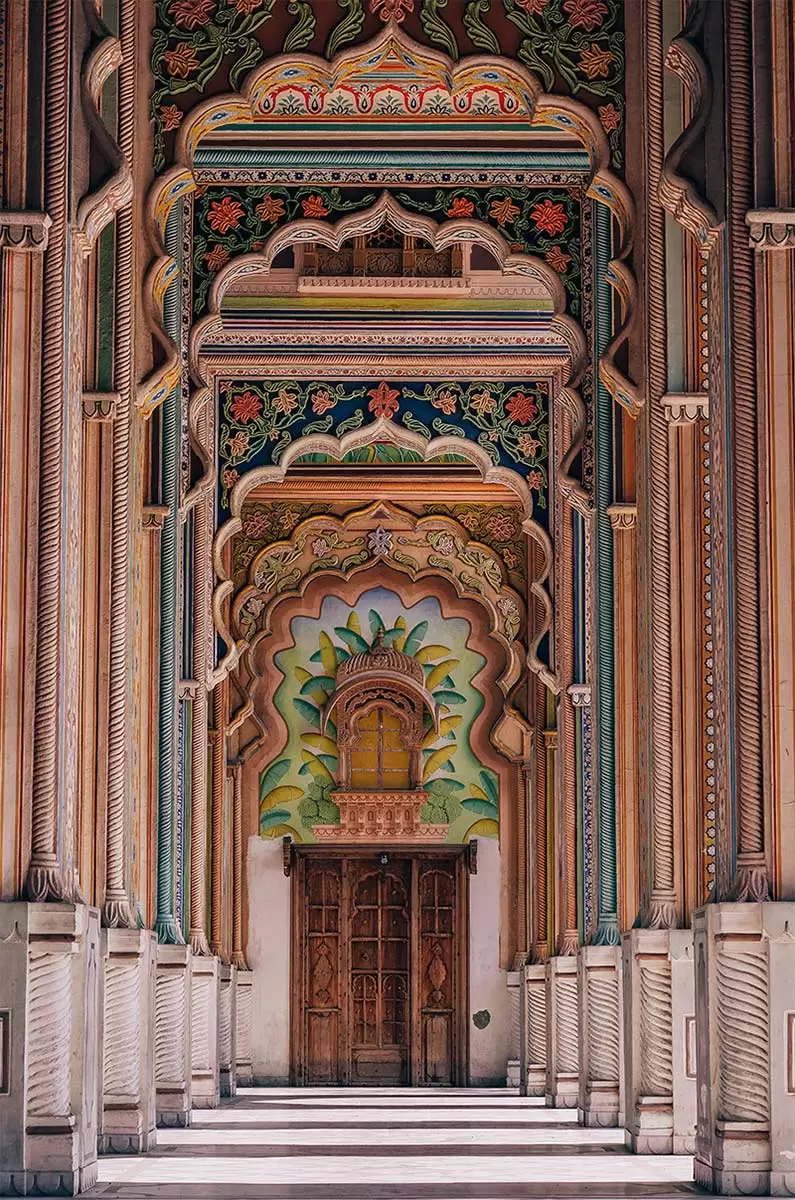
- सफ़र ( safar ) is the Urdu word for travel; however when pronounced it sounds just like the English word suffer.
- लू ( loo ) is the Hindi word for heatstroke but as you know this means something quite different in English.
Hindi words in English
As a result of Britain’s colonial past, there are also a number of Hindi words that are used in English. Here are a couple for you:
- डिंगी ( dingee ) – If you’re fortunate enough to take a trip on the river in India, you may find yourself setting foot onto a dinghy!
- लूट ( loot ) – The English word for loot is taken directly from the Hindi, which similarly means to steal, plunder or pillage.
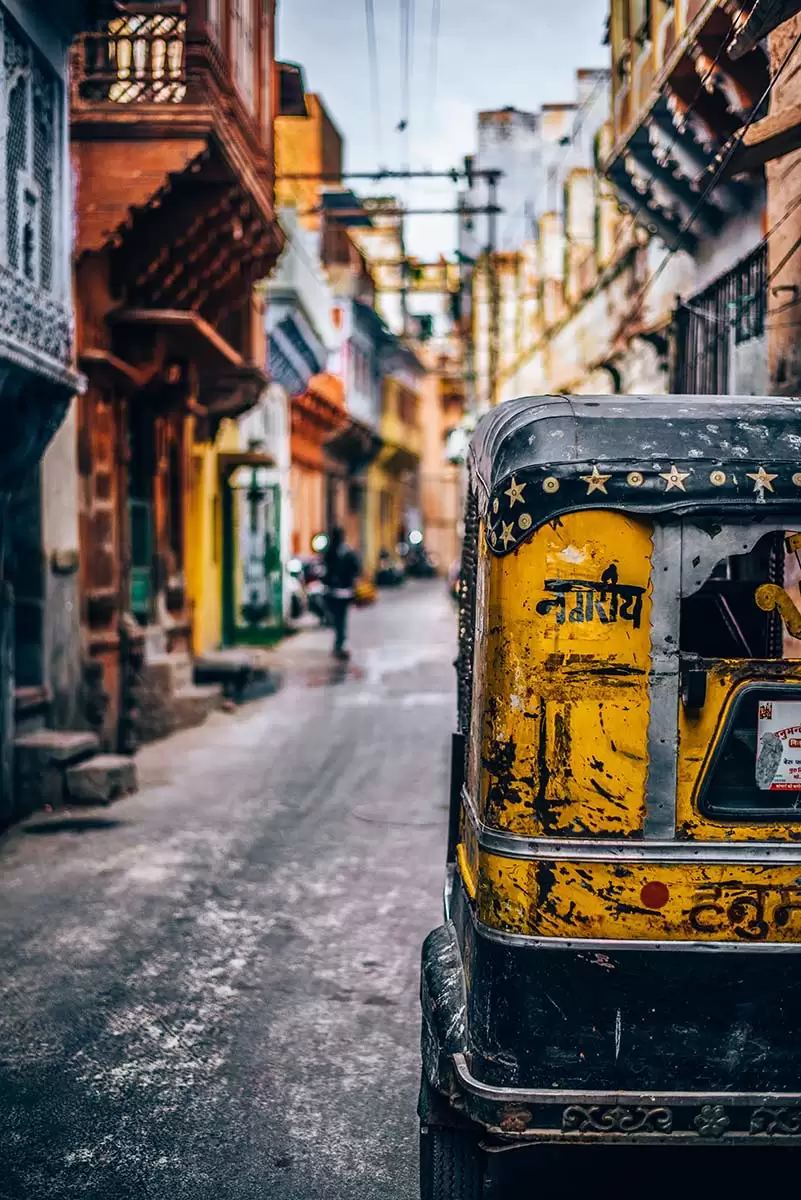
Also, don’t assume that everyone in India will speak or want to speak Hindi with you. Do some prior research on the places that you are visiting and be sensitive to the language and culture of the local population.
If you’re intending to travel to India for any length of time, spend some time getting used to sitting cross-legged on a couch or the ground. It is something that may bring back distant memories of a primary school assembly hall; however, there is nothing more uncomfortable and embarrassing than being invited for dinner at someone’s house and being unable to sit still for the whole evening and then not being able to get up at the end because your knees have locked solid!
Now, let’s take a look at some common Hindi phrases for travellers. NB: When the letter ‘n’ appears in brackets [n], that signifies that the letter before it is nasalised. The ‘n’ in brackets should not be pronounced.
209 Common Hindi Phrases for Travellers
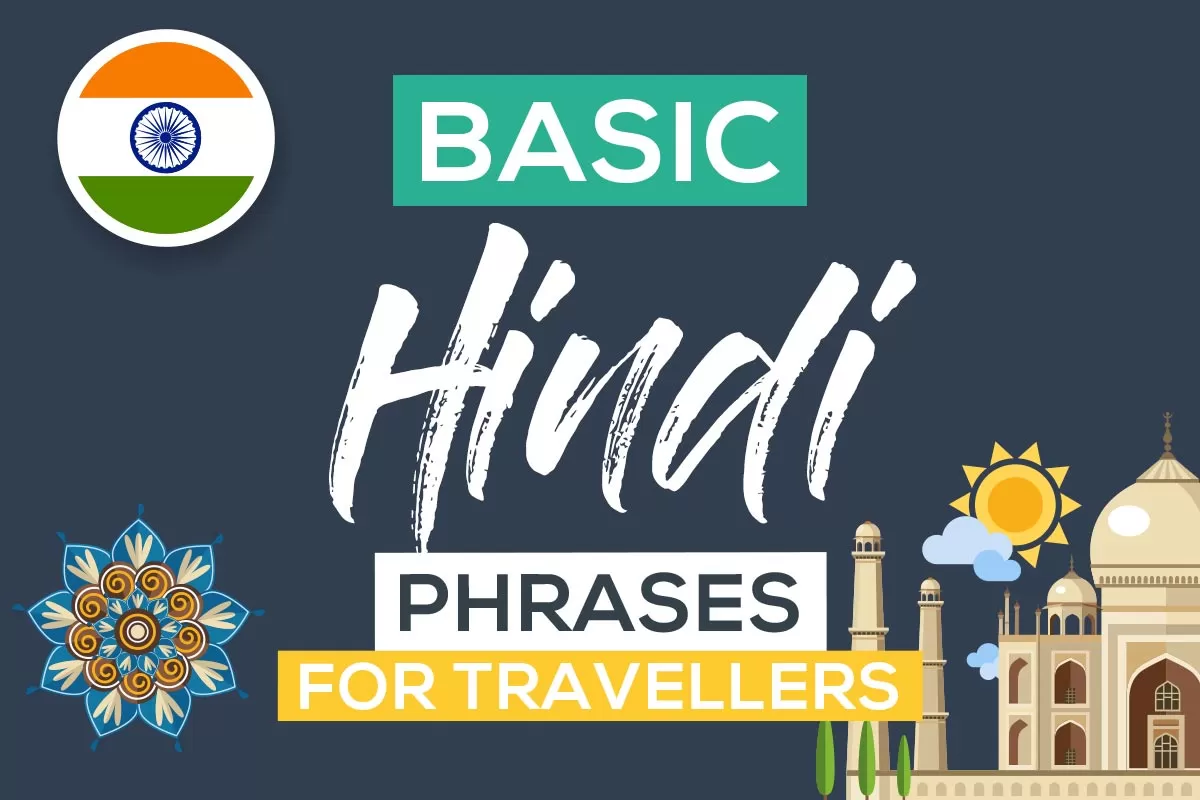
1. Hello – नमस्ते (na-ma-sté) 2. Good morning – शुभ प्रभात (Shubh-pra-bhaat) 3. Good afternoon – नमस्ते (na-ma-sté) 4. Good evening – नमस्ते (na-ma-sté) 5. Good night – शुभ रात्रि (shubh-raa-tree) 6. Goodbye – नमस्ते (na-ma-sté) 7. See you – फिर मिलेंगे (phir milengé) 8. ‘Til next time – अगली बार तक (aaglee baar tak) 9. How are you? – आप कैसे हैं (aap kaisé hai[n]) 10. Good – अच्छा (acchha) 11. So-so – ठीक-ठीक (theek-theek) 12. Not bad – ठीक-ठीक (theek-theek) 13. I’m not well – मैं ठीक नहीं हूँ ( mai[n] theek nahee[n] hoo[n]) 14. Good, thank you, and you? – मैं ठीक हूँ और आप? (mai[n] theek hoo[n] aur aap?) 15. What is your name? – आपका नाम क्या है? (aapka naam kya hai?) 16. My name is… – मेरा नाम _____ है। (mera naam _____ hai?) 17. Where are you from? – आप कहाँ से हैं? (aap kaha[n] sé hai[n]?) 18. I’m from [Insert name of city] – मैं _____ से हूँ ( mai[n] _______ sé hoo[n]) 19. I’m from [Insert name of country] – मैं _____ से हूँ (mai[n] _______ sé hoo[n]) 20. I’m….American (m/f), English (m/f), Australian (m/f), Canadian (m/f) – मैं अमेरिकी हूँ / मैं अंग्रेज़ हूँ / मैं ऑस्ट्रेलियाई हूँ / मैं कनेडियन हूँ ( mai[n] amerikee hoo[n] / mai[n] angrez hoo[n] / mai[n] austreliyaaee hoo[n] / mai(n) kanediyan hoo[n]) 21. It’s nice to meet you – आप से मिलकर ख़ुशी हुई (aap sé milkar khushee hooee)
Greetings Audio
- Good morning
- Good afternoon
- Good Evening
- Til next time
- How are you
- I'm not well
- Good, thank you, and you
- What is your name?
- My name is...
- Where are you from?
- I'm from (insert name of city)
- I'm from (insert name of country)
- I'm American/English/Australian/Canadian
- Its nice to meet you
22. Please – कृपया (krip-ya) NB: Please is usually implied in the verb – so this word is not commonly used. 23. Thank you – धन्यवाद (dhany-vaad) 24. Thank you very much – बहुत धन्यवाद (bahut dhany-vaad) 25. You’re welcome – आपका स्वागत है (aapka swaagat hai) 26. Yes – हाँ (haa[n]) 27. No – नहीं (nahee[n]) 28. That’s fine / ok – यह ठीक है (yeh theek hai) 29. Excuse me (to get attention) – सुनिए ( Suniyé) 30. Excuse me (to get past someone) – माफ़ कीजिए (maaf keejiyé) 31. I’m sorry – माफ़ कीजिए (maaf keejiyé) 32. I don’t understand – मैं नहीं समझा (m.) / मैं नहीं समझी (f.) (mai[n] nahee[n] sam-jha (m.] / mai[n] nahee[n] sam-jhee (f.)) 33. Do you speak English? – क्या आप अंग्रेज़ी बोलते हैं? (kya aap angrezee bolté hai[n]?) 34. I don’t speak Hindi – मैं हिंदी नहीं बोलता हूँ (m.) / मैं हिंदी नहीं बोलती हूँ (f.) – (( m.) mai[n] hindee nahee[n] bolta hoo[n] / (f.) mai(n) hindee nahee[n] boltee hoo[n].) 35. I only speak a little bit of Hindi – मैं सिर्फ़ थोड़ी-थोड़ी हिंदी बोलता हूँ (m.) / मैं सिर्फ़ थोड़ी-थोड़ी हिंदी बोलती हूँ (f.) (mai[n] sirf thodee-thodee hindee bolta hoo[n] (m.) / mai[n] sirf thodee-thodee hindee boltee hoo[n] (f.)) 36. Can you please repeat that slowly? – क्या आप वह फिर से धीरे-धीरे बोल सकते हैं (kya aap woh phir se dheeré-dheeré bol sakté hai[n]?) 37. Maybe – शायद (shaayad) 38. I don’t know – मुझको मालूम नहीं (mujhko maaloom nahee[n]) 39. I don’t think so – मैं ऐसा नहीं सोचता हूँ (m.) / मैं ऐसा नहीं सोचती हूँ (f.) (mai[n] aisa nahee[n] sochta hoo[n] (m.) / mai[n] aisa nahee[n] sochtee hoo[n] (f.)) 40. Certainly! Of course! – ज़रूर बिल्कुल (zaroor / bilkul)
How to be Polite Audio
- Thank you very much
- You're welcome
- That's fine, ok
- Excuse me (to get attention)
- Excuse me (to get past someone)
- I don't understand
- Do you speak English
- I don't speak Hindi
- I only speak a little Hindi
- Can you please repeat that slowly?
- I don't know
- I don't think so
- Certainly! Of course!
- May I pay with cash?
How to ask Questions
41. Where is …? ______ कहाँ है? (______ kaha[n] hai?) 42. Where are…? ______ कहाँ हैं? (______ kaha[n] hai?) 43. Where? – कहाँ? (kaha[n]?) 44. How? – कैसा? ( kaisa?) 45. How much? – कितना? ( kitna?) 46. Who? – कौन? (kaun?) 47. When? – कब? (kab?) 48. Why? – क्यों? (kyo[n]?) 49. What? – क्या? (kya?) 50. Which? – कौन सा / सी? (kaun sa/see?) 51. How much does this cost? – यह कितने का है? (yeh kitné ka hai?) 52. How much does that cost? – वह कितने का है? (woh kitné ka hai?) 53. Where is the toilet? – शौचालय कहाँ है? (shau-chaa-lay kaha[n] hai?) 54. I would like… – मुझको _____ चाहिए (mujhko _____ chaahiyé)
How to ask Ask Questions Audio
- Where is...?
- Where are...?
- How much does this cost?
- How much does that cost?
- Where is the toilet?
- Can I have...
- I would like...
Eating Out & Ordering Food
55. Where is a good restaurant? – अच्छा भोजनालय कहाँ है? (acchha bhoj-naa-lay kaha[n] hai?) 56. What shall we make for you? – हम आप के लिए क्या बनायें? (hum aap ké liyé kya banaayé[n]?) 57. How many are you? – आप कितने लोग हैं? (aap kitné log hai[n]?) 58. Salad – सलाद (salaad) 59. Dessert – मिठाई / मीठी चीज़ (mithaa-ee) (sweets) / (meethee cheez) (sweet dish) 60. Drinks? पेय / ड्रिंक्स – (pey) (this is almost never used) / drinks – the English word is ordinarily used 61. Another one, please. – एक और दीजिए (ek aur deejiyé) 62. I would like… – मुझको _____ चाहिए (mujhko _____ chaahiyé) 63. The menu, please – मेन्यू दीजिए (menu deejiyé) 64. Two beers, please – दो बियर दीजिए (do biar deejiyé) 65. A bottle of wine, please – एक वाइन की बोतल दीजिए (ek vaain kee botal deejiyé) 66. Red wine – लाल वाइन (laal vaain) 67. White wine – सफ़ेद वाइन (safed vaain) 68. A bottle of still water – पानी की बोतल (paani kee botal) 69. A bottle of sparking water – सोडे की बोतल (sode kee botal) 70. What do you recommend? – आप क्या सलहा देंगे? (aap kya salha dengé?) 71. Is the sauce spicy? – क्या ग्रेवी तीख़ी है? (kya grevee teekhee hai?) 72. I’m allergic to… – मुझको _____ से अलेरजी है (mujhko _____ sé allergee hai) 73. I’m a vegetarian – मैं शाकाहारी हूँ (mai[n] shaakaahaari hoo[n]) 74 The bill, please – बिल दीजिए (bill deejiyé) 75. Enjoy your food! – खाने का मज़ा लीजिए (khané ka maza leejiyé) 76. It was delicious! – खाना स्वादिष्ट था (khana swaadisht tha)
Eating Out & Ordering Food Audio
- Where is a good restaurant?
- What shall we make for you?
- How many are you?
- Another one, please
- The menu, please
- Two beers, please
- A bottle of wine, please
- A bottle of still water
- A bottle of sparking water
- What do you recommend?
- Is the sauce spicy?
- I'm allergic to...
- I'm a vegetarian
- The bill, please
- Enjoy your food
- The food was delicious
77. I’m(male) – मैं खो गया हूँ (mai[n] kho gaya hoo[n]) 78. I’m lost (female) – मैं खो गयी हूँ (mai[n] kho gayee hoo[n]) 79. I would like to go to… – मैं _____ जाना चाहता हूँ (m.) / मैं ______ जाना चाहती हूँ (f.) ( mai[n] ____ jaana chaahta hoo[n] (m.) / mai[n] ____ jaana chaahtee hoo[n] (f.)) 80. How do I get to… – मैं _____ तक कैसे जा सकता हूँ (m.) / मैं _____ तक कैसे जा सकती हूँ (f.) ( mai[n] ____ tak kaisé ja sakta hoo[n] (m.) / mai[n] _____ tak kaisé ja saktee hoo[n] (f.)) 81. Where is …? – _____ कहाँ है? (_____ kaha[n] hai?) 82. the bathroom – शौचालय (shau-chaa-lay) 83. the (train) station – (ट्रेन) स्टेशन (train station) 84. the shops – दूकान (dookaan) 85. the restaurant – भोजनालय (bhoj-naa-lay) 86. the museum – संग्रहालय (sangra-haa-lay) 87. the post office – डाक ख़ाना (daak khana) 88. the market – बाज़ार (baazaar) 89. the pharmacy – दवा की दूकान (davaa kee dookaan) 90. the hospital – अस्पताल (aspataal) 91. the bus stop बस स्टॉप (bus stop) 92. the airport – हवाई अड्डा (havaa-ee addaa) 93. the information office – सूचना कार्यालय (soochnaa kaar-yaa-lay) 94. the theatre – थिएटर (thi-é-tar) 95. the park – पार्क (park) 96. the city/town centre – शहर का केंद्र (shaher ka kendra) 97. Entrance – प्रवेश (pravesh) 98. Exit – निकास (nikaas) 99. the timetable – समय-सारणी (samay-saar-nee) 100. departure – प्रस्थान (prasthaan) 101. When does it arrive there? – यह वहाँ कब पहुँचेगा? (yeh vahaa[n] kab pahu[n]chega?) 102. How long does it take to get there? – वहाँ पहुँचने में कितना समय लगेगा? (vahaa[n] pahu[n]chné mé[n] kitna samay lagega?) 103. How much is the fare? – किराया कितना है? (kiraaya kitna hai?) 104. the train – ट्रेन (train) 105. the flight – उड़ान (udaan) 106. the baggage – सामान (saamaan) 107. I need a taxi – मुझको टैक्सी चाहिए (mujhko taxi chaahiyé) 108. Please stop here (to a taxi driver) – यहाँ रोकिए (yahaa[n] rokiyé)
Getting Around Audio
- I'm lost (male)
- I'm lost (female)
- I would like to go to...
- How do I get to...?
- The bathroom
- Train station
- the restaurant
- The post office
- The pharmacy
- The hospital
- The bus stop
- The airport
- The information office
- The theatre
- The city town centre
- The timetable
- When does it arrive there
- How long does it take to get there
- How much is the fare
- The baggage
- I need a taxi
- Please stop here (to a taxi driver)
109. Turn… – मुड़िए (moodiyé) 110. Left – बायाँ (baayaa[n]) 111. Right – दायाँ (daayaa[n]) 112. Straight ahead – सीधा (seedhaa) 113. Towards… – की तरफ़ (kee taraf) 114. It’s close by – यह पास है (yeh paas hai) 115. Across from – सामने (saamné) 116. Behind – पीछे (peeché) 117. Under – नीचे (neeché) 118. Before – पहले (pahelé) 119. Past – के आगे (ké aagé)
Directions Audio
- Straight ahead
- It's close by
- Across from
120. I would like… – मुझको _____ चाहिए (mujhko _____ chaahiyé) 121. a ticket – टिकट (ticket) 122. two tickets – दो टिकट (do ticket) 123. two adults – दो व्यस्क (do vyask) 124. one child – एक बच्चा (ek baccha) 125. one student – एक विद्यार्थी (ek vidyaarthee) 126. one senior – एक वरिष्ठ नागरिक (ek varishth naagrik)
Sightseeing Audio
- Two tickets
- One student
127. 0 – शून्य / ज़ीरो (shoonye/ zero) 128. 1 – एक (ek) 129. 2 – दो (do) 130. 3 – तीन (teen) 131. 4 – चार (chaar) 132. 5 – पाँच (paanch) 133. 6 – छः (cheh) 134. 7 – सात (saat) 135. 8 – आठ (aath) 136. 9 – नौ (nau) 137. 10 – दस (das) 138. 11 – ग्यारह (gyaarah) 139. 12 – बारह (baarah) 140. 13 – तेरह (terah) 141. 14 – चौदह (chaudah) 142. 15 – पंद्रह (pandrah) 143. 16 – सोलह (solah) 144. 17 – सत्रह (satrah) 145. 18 – अट्ठारह (ataarah) 146. 19 – उन्नीस (unnees) 147. 20 – बीस (bees) 148. 30 – तीस (tees) 149. 40 – चालीस (chaalees) 150. 50 – पचास (pacchaas) 151. 60 – साठ (saath) 152. 70 – सत्तर (sattar) 153. 80 – अस्सी (assee) 154. 90 – नबे (nabé) 155. 100 – सौ (sau) 156. 1000 – हज़ार (hazaar)
Numbers Audio
Telling the time.
157. Today – आज (aaj) 158. Tomorrow – कल (kal) 159. The day after tomorrow – परसों (parso[n]) 160. Yesterday – कल (kal) 161. Soon – जल्द ही (jald hi) 162. Later – बाद में (baad me[n]) 163. Excuse me, what time is it? – सुनिए, कितने बजे हैं? (suniyé, kitné bajé hai[n]?) 164. When does it open? – यह कब खुलता है ? (yeh kab khulta hai?) 165. When does it close? – यह कब बंद होता है? (yeh kab band hota hai?) 166. in the morning – सुबह (subah) 167. in the afternoon – दोपहर को (dopehr ko) 168. It’s 1 o’clock – एक बजा है (ek baja hai) 169. It’s 6 o’clock – छः बजे हैं (cheh bajé hai[n]) 170. It’s half past 8 – साढ़े आठ बजे हैं (sadhé aath bajé hai[n]) 171. a minute – एक मिनट (ek minute) 172. an hour – एक घंटा (ek ghantaa)
Telling the time Audio
- The day after tomorrow
- Excuse me, what time is it?
- When does it open?
- When does it close?
- In the morning
- In the afternoon
- It's one o'clock
- It's 6 o'clock
- It's half past eight
173. Monday – सोमवार (somvaar) 174. Tuesday – मंगलवार (mangalvaar) 175. Wednesday – बुधवार (budhvaar) 176. Thursday – गुरुवार (guruvaar) 177. Friday – शुक्रवार (shukravaar) 178. Saturday – शनिवार ( shanivaar) 179. Sunday – रविवार (ravivaar)
Days of the Week Audio
180. Help! – मदद कीजिए (madad keejiyé) 181. I need a doctor – मुझको डॉक्टर चाहिए (mujhko doctor chaahiyé) 182. I feel ill – मुझको मेरी तबियत ठीक नहीं लग रही है (mujhko meree tabiyat theek nahee[n] lag rahee hai) 183. I have pain here – मुझको यहाँ दर्द है (mujhko yahaa[n] dard hai) 184. Call… – फ़ोन कीजिए ( phone keejiyé) 185. the police – पुलिस (pulis) 186. an ambulance ऐम्ब्युलन्स (ambulance) 187. the fire brigade – फ़ाएअर ब्रिगेड (fire brigade) NB: There is a Hindi word for fire brigade but nobody uses it and instead the English word is used! 188. There’s a fire – यहाँ आग लगी है (yahaa[n] aag lagee hai) 189. Watch out! – सावधान (saavdhaan) 190. Stop, thief! – चोर को रोकिए (chor ko rokiyé) 191. Go away! – यहाँ से जाओ (yahaa[n] sé jaao) 192. There’s been an accident – यहाँ एक दुर्घटना हुई है (yahaa[n] ek dur-ghat-na hooee hai) 193. Damage – नुक़सान / हानि (nuksaan / haani) 194. Pain – दर्द (dard) 195. I’ve been assaulted/attacked – मुझ पर हमला हुआ (mujh par humlaa huuaa) 196. I lost my passport – मेरा पास्पोर्ट खो गया (mera passport kho gaya) 197. Where is the American/British/Australian/Canadian embassy? – अमेरिकी / ब्रिटिश / औस्ट्रेलियन / कनेडियन दूतावास कहाँ है? (amerikee / british / austreliyan / kanediyan dutaavaas kaha[n] hai?) 198. Police station – पुलिस स्टेशन (pulis station)
Emergencies Audio
- I need a doctor
- I have pain here
- An ambulance
- The fire brigade
- There's a fire
- Stop, thief
- There's been an accident
- I've been assaulted/attacked
- I lost my passport
- Where is the American/British/Australian/Canadian Embassy
- Police station
199 . Are you looking for something? क्या आप कुछ ढूंढ़ रहे हैं? (kya aap kuch dhoo(n)dh rahé hai(n)?) 200. Can I help you? – क्या मैं आप की मदद कर सकता हूँ (m.) / क्या मैं आप की मदद कर सकती हूँ (f.) (kya mai[n] aap ki madad kar sakta hoo[n] (m.) / kya mai[n] aap ki madad kar sakti hoo[n] (f.)) 201. What are you looking for? – आप क्या ढूँढ रहे हैं? (aap kya dhoo(n)dh rahé hain?) 202. May I just look? – क्या मैं यह देख सकता हूँ (m.) / क्या मैं यह देख सकती हूँ (f.) (kya mai[n] yeh dekh sakta hoo[n] (m.) / kya mai[n] yeh dekh sakti hoo[n] (f.)) 203. That’s too expensive! – यह बहुत महँगा है (yeh bahut mahenga hai) 204. Can you give me a discount? – क्या आप मेरे लिए कुछ पैसे कम कर सकते हैं? (kya aap meré liyé kuch paisé kam kar sakté hai[n]?) 205. I’ll buy it! – मैं यह ख़रीदूँगा / मैं यह ख़रीदूँगी (mai[n] yeh khareedunga / mai[n] yeh khareedungi) 206. Anything else? – और कुछ? (aur kuch?) 207. Nothing else, thank you. – और कुछ नहीं, धन्यवाद (aur kuch nahee(n), dhanyavaad) 208. May I pay with credit card? – क्या मैं कार्ड से पैसे दे सकता हूँ (m.)/ क्या मैं कार्ड से पैसे दे सकती हूँ (f.) (kya mai[n] card sé paisé dé sakta hoo[n] (m.) / kya mai[n] card sé paisé dé saktee hoo[n] (f.)) 209. May I pay with cash? – क्या मैं नक़द पैसे दे सकता हूँ (m.) / क्या मैं नक़द पैसे दे सकती हूँ (f.) (kya mai[n] nakad paisé dé sakta hoo[n] (m.) / kya mai(n) nakad paisé dé saktee hoo[n] (f.))
Shopping Audio
- Are you looking for something
- Can I help you?
- What are you looking for?
- May I just look?
- That's too expensive
- Can you give me a discount?
- I'll buy it
- Anything else
- Nothing else, thank you
- May I pay with credit card?
209 Most Common Hindi Phrases for Travellers [Printable Guide]

Like it? Pin it for later!
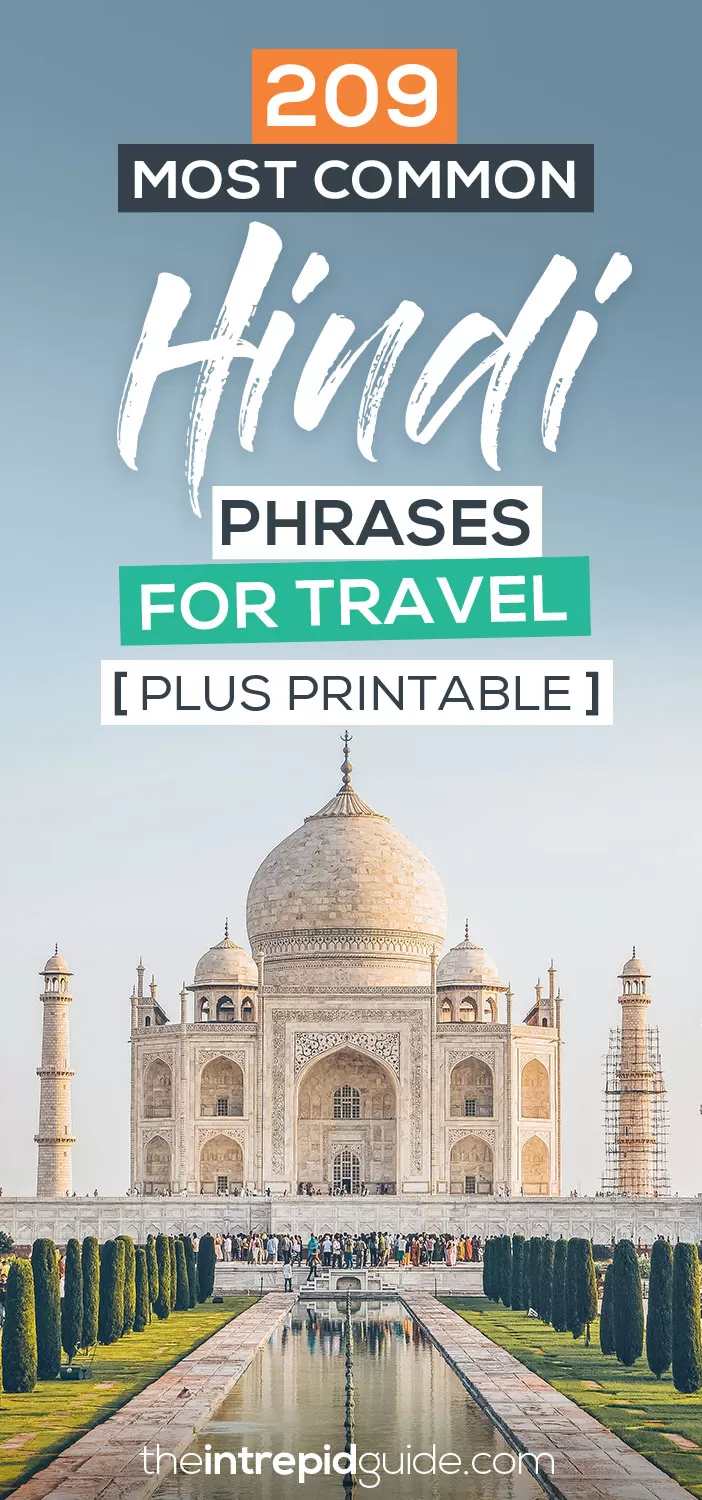
Sources / A big thanks to Babita Craig a professional Hindi teacher based in London. Having trained and taught for nine years at India’s famous Landour Language School, she set up Babita’s School of Hindi, London, in 2019, where she teaches a broad range of students in-person and online.
Want to know more about learning languages? Start here!
- What Type of Language Learner Are You? Your 4-Step Personalised Learning Plan
- 18 Unexpected Advantages & Health Benefits of Learning A Foreign Language
- How to Learn Languages Like Crazy, Even If You Have a Crazy Life [3-Step Method]
- 10 Pro Tips: How to Learn a Language with a Full-Time Job
- 44 Best Movies on Disney Plus for Learning Languages
- 6 Language Learning Tips: How to Learn a Language from Home
- How to Learn Your First Foreign Language in 8 Simple Steps: A Beginner’s Guide
- Essential Travel Phrases: How to be Travel Fluent in 10 Simple Steps
- 7 Reasons Why You Should Go on a Language Holiday
- 20 Top Language Learning Resources You Should Use
- 13 Ways to Seamlessly Integrate Language Learning into Your Daily Life
- 23 Cool Gifts for Language Learners They Will Actually Use and Love
- 11 Life-Changing Reasons Why You Should Learn a Language
- 42 beautiful Inspirational Quotes for Language Learners
- Language learning tips: 11 Polyglots Reveal The Secrets of Their Success
- Top 10 Best Ways to Learn a Language Better and Faster
- How to Learn Italian Before Your Trip
- Free Travel Phrase Guides
- How Many Languages are there in the World?
- Mondly Review: 10 Ways Mondly Drastically Improved My Language Learning
- 78 FREE Dictionaries to Learn a Language Fast [Free eBook Download]
- 22 KEY Travel Phrases That Will Transform Your Travels [Free Guide]
Over to you!
Which of these Hindi phrases did you find the most useful? Let me know in the comments section below or join me on social media to start a conversation. Thanks for reading and I hope you enjoyed this post. Like what you see? Subscribe using the form below to have all of my posts delivered directly to your email.
Success! Now check your email to confirm your subscription.
There was an error submitting your subscription. Please try again.
Get my best language and travel tips FREE by email...
Subscribe to my newsletter to receive detailed travel guides, exclusive travel and language learning tips, priority access to giveaways and more!
I will never give away, trade or sell your email address. You can unsubscribe at any time.
Michele creates language learning guides and courses for travel. What separates her from other instructors is her ability to explain complex grammar in a no-nonsense, straightforward manner using her unique 80/20 method. Get her free guide 9 reasons you’re not fluent…YET & how to fix it! Planning a trip? Learn the local language with her 80/20 method for less than the cost of eating at a tourist trap restaurant Start learning today!
How to Master Italian Phrases for Travel FAST!
25 funny french idioms and expressions you’ll love using.
I am so excited I found this website, I am chanting mantras and I just met a lady, I gave myself the rest of the year to learn all of this. Thanks you very much Michele for this amazing post, I will help you share and will text you later on your Instagram, Facebook, linked in or any other social I found you, You are fantastic.
Hola, estoy muy pero muy emocionado, encontre esta pagina y justamente estoy recitando mantras y conoci una chica y me he dado lo que resta del año para aprender todo esto. Gracias Michele, Te voy a contactar por la redes porque me interesa mucho tu contenido.
thank u sooo much!!! those phrases are really helpful… thanks a lot
My pleasure 🙂 I’m so glad to hear that.
Leave a Comment Cancel Reply
Save my name, email, and website in this browser for the next time I comment.
This site uses Akismet to reduce spam. Learn how your comment data is processed .
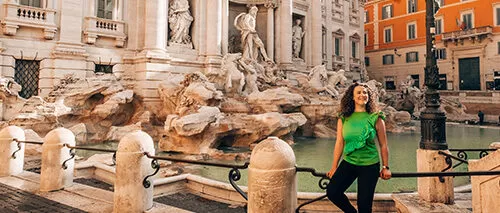
If you don't know where you are , how do you know where you're going? Find out how well you know Italian grammar today!
- Andaman and Nicobar
- Andhra Pradesh
- Himachal Pradesh
- Maharashtra
- Pondicherry
- Uttarakhand
- West Bengal
Travel Tips
- Things To Do
- Hill Station
- Festivals in India
Accommodation
- Privacy Policy

Essential basic language for foreign travelers in India
The land of multifarious cultures and traditions, and peoples with their numerous tongues – that is India, in a nutshell. In a country of such wide variety, traveling is always an incredible experience, but it is richer when you acquaint yourself with the local language. So, what is that essential basic language for foreign travelers to traveling in India? While India is a country of multiple languages and dialects, an official language that is considered the national language for practical purpose is Hindi.

Knowing how to translate
Often called Hindustani, Hindi is spoken in different forms, by people all across the northern region of India. According to statistics, around 43 out of 100 people on the subcontinent are supposed to speak some kind of Hindi. If you are traveling anywhere in North India, a quick English to Hindi translator can be quite useful. You find many translators of this kind online, and there are books too available, instructing you in the basics of Hindi.
Making everyday conversation
One of the vital needs in traveling in a foreign country is to be able to understand and follow everyday conversations. Say, if you are getting on buses or buying something in a shop, or instructing the cab-driver, you need to know the basics to get along. ‘ Accha’ (Yes), ‘Nahin’ (No), ‘Dukaan’ (shop), ‘Rukiye’ (Stop), ‘kahaan’ (Where), ‘seedha’ (straight) are a few everyday words in Hindi that you can use in conversation.
Social Customs
Family bonding and relationships are quite important in India, and hierarchies in addressing people is a part of traditional custom. For those used to the generic ‘you’ in English, it can be quite interesting to know the different variants on ‘you’ in Hindi, depending on who you are addressing. If you are addressing someone respectfully, ‘aap’ is usual, and among friends or people you know, ‘tum’ is a common address. ‘Tu’ is mainly for small children or to show intimacy and affection. Strangely enough, this same ‘tu’ can often be used in a pejorative way, if someone wants to be disrespectful. It can also be useful to know a few words of greetings in Hindi. ‘ Shukriya ’ is a common greeting when you meet someone, and ‘Namastay’ or Namaskar’ is a greeting that is said while joining palm to palm.
In several parts of India, English is also spoken quite commonly, especially if you go down to South India or West India. India is one of the English speaking countries, as it was British-occupied for more than a century, and Indians use English quite freely, peppering the language they speak with a few words of English. You can also expect most cab-drivers to know common English words like ‘Left’ and ‘Right’ to indicate directions. In the Northeastern part of India, most people are fairly comfortable with English.
Check out these quick tips on languages for foreign travelers in India:
- To what extent you acquaint yourself with an Indian language, depends on how intensive your stay will be. If you are just coming by on a flying visit, you can make do with a basic word translator . You also have mobile applications that function well to introduce you to common words, phrases, gender differences, words of greeting etc. in Hindi.
- If you want to learn Hindi in a rudimentary fashion, and find out the nuances of pronunciation pick up a few CDs or videos. It is even better to do this before you come down to India.
- In the Eastern part of India, especially if you go to some place like Kolkata , Bengali or Bangla is common. In many ways it is much like Hindi with many basic differences. If you plan to stay long in Kolkata, you can pick up a few basic books on how to learn Bangla.
It’s not really about India, wherever you go, it’s a good idea to have an acquaintance with the local language. After all, language is for communication, and when you know a bit of what the local tongue is, it immediately adds to your confidence as you make your way about in a foreign land. In India, even a basic acquaintance with the local language can help you mix more easily with locals, have interesting experiences and get enriched wherever you travel.
RELATED ARTICLES MORE FROM AUTHOR

The Ultimate Guide to Driving and Transportation in India

How to Inspire Your Children to Travel? – 7 Essential Tips

How to Plan Tour from Delhi to Agra to Visit Taj Mahal
I am very grafeful to have known this blog that helped me to know even better this amazing country called India. Was essential for me. Thank you Srimanta Ghosh !!!!!
Thank you Cintia for your valuable feedback and Glad to know that our site helped you.
Good idea. Sadly found English the only option (and rarely, French) in S India, of course. Always better to make the attempt to use local languages IMHO 😁
LEAVE A REPLY Cancel reply
Save my name, email, and website in this browser for the next time I comment.
Top Destinations

Places to Visit & Tourist Attractions in Tripura

A Joyful Trip On A Sea-Side Town Puri

State Wise Popular Tourist Places in India

Best Winter travel destinations in India

Historical City Murshidabad

Top 10 Best Resorts in Bangalore for Weekend

A Royal Stay in Jaipur – Top 3 Heritage Hotels for...

Plan a Trip to India

India Travel Guide – Frequently Asked Questions

Top 10 famous Indian street foods

- Language School

14 Best Languages for Traveling

Having lived in Singapore, Qatar, Japan, and now Mexico, Munira is basically a walking GoAbroad e...
- button]:border-none [&>button]:bg-white [&>button]:hover:cursor-pointer [&>button]:hover:text-cyan-400"> button]:hover:text-cyan-400 [&>button]:bg-white hover:cursor-pointer" height="1em" width="1em" xmlns="http://www.w3.org/2000/svg">
Traveling to a foreign country can be an exciting and enriching experience , but it can also be challenging if you can't speak the local language. Knowing even just a few basic phrases in the local language can go a long way toward connecting with locals and making your trip more enjoyable.
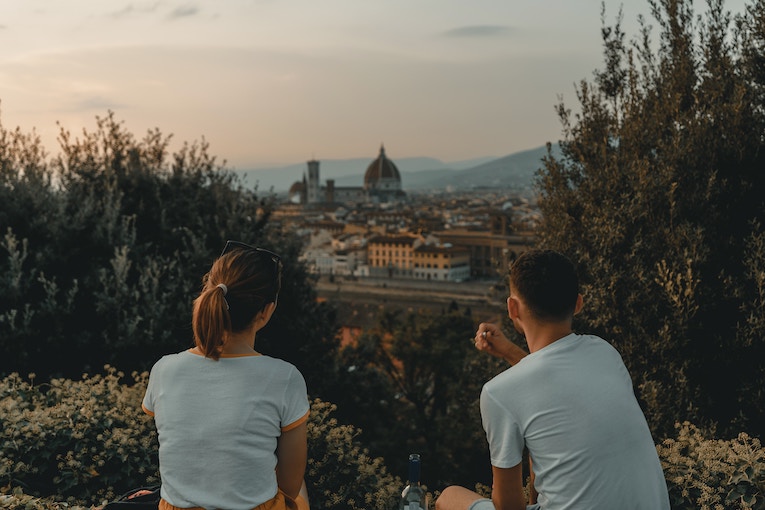
Ready to make your trips even more meaningful? The best languages to learn for travel will get you there.
We'll explore the best languages to learn for travel and provide language learning tips for travelers. So, get ready to find out about the best languages for traveling internationally and starting planning your next adventure.
How learning a language makes travel more meaningful
Learning a new language can make traveling a more meaningful and rewarding experience. Not only can it help break down communication barriers, but it can also provide insight into the local culture and way of life.
Firstly, speaking the local language can make travel easier and more enjoyable. Simple tasks like ordering food or asking for directions become much easier when you can communicate with locals in their own language. This can lead to a more authentic travel experience as you are able to connect with locals on a deeper level and gain a better understanding of the local customs and traditions.
Learning a new language also provides a window into another culture. Language and culture are closely intertwined, and by learning the language, you are also gaining insight into the way of life and values of the people who speak it. This can lead to a greater appreciation and understanding of the country you are visiting.
Finally, learning a new language is a valuable skill that can benefit you in many areas of life, not just when traveling. It can open up new job opportunities , help you make new friends , and even improve cognitive function.
[ Get a discount on language classes with Lingoda ]
14 best languages to learn for travel.
Here are the 14 best languages for traveling:
Spanish is an incredibly important language to learn for travel. It is the second-most spoken language in the world , making it a valuable language to know for travelers. With over 20 countries speaking Spanish as an official language , including Spain , Mexico , and much of Central and South America, knowing Spanish can be a huge asset while you’re off seeing the world.
Learning Spanish is relatively easy compared to other languages. Its grammar is straightforward and its vocabulary is largely derived from Latin, making it easy to recognize words and understand their meanings. In summary, Spanish is an important language to learn for travel due to its widespread use, its ability to help you connect with locals, and its relative ease of learning.
- Best place to learn: Mexico
- Recommended program: Learn Spanish and Surfing in Mexico
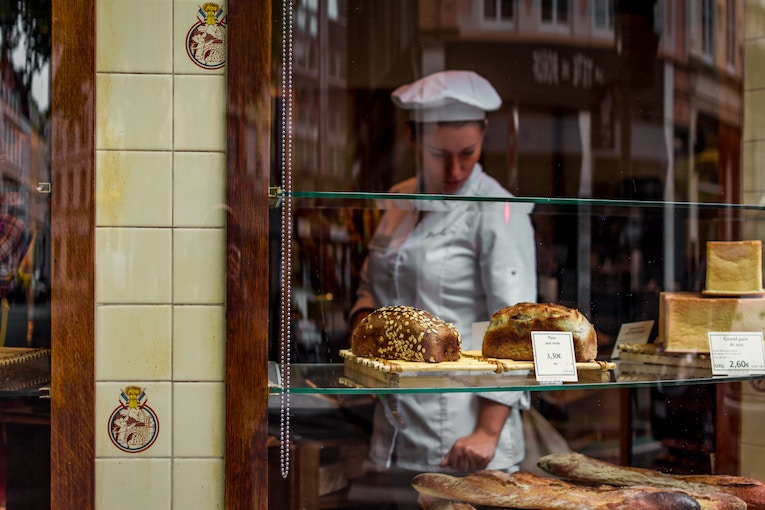
Put your French skills to good use by touring boulangeries while you’re traveling.
French is an important language to learn for travel for several reasons. Firstly, it is an official language in 29 countries , widely spoken in Western Europe, Africa, and Canada , so knowing French can be useful for those traveling to these regions. French is also considered one of the most romantic languages and is often associated with high culture. It is the language of literature, art, and cuisine, and knowing French can provide a deeper appreciation and understanding of these areas.
Finally, learning French is a valuable skill that can benefit you in many areas of life, not just when traveling. It is one of the official languages of the United Nations and is widely used in the fields of business, education, and diplomacy. Whether you're traveling to Paris, Montreal, or any of the other French-speaking regions, knowing French can greatly enhance your travel experience.
- Best place to learn: Morocco
- Recommended program: ISA Study Abroad in Meknes, Morocco
3. Mandarin
Mandarin is the most spoken language in the world , making it a valuable language to know for travelers. With over 1.3 billion speakers , Mandarin is the official language of China and Taiwan, making it a great choice for travelers to these regions. Knowing Mandarin can provide a deeper appreciation and understanding of Chinese culture.
China is a country with a rich history and unique traditions, and knowing Mandarin can help travelers gain a better understanding of these areas. Learning Mandarin can also benefit you in many areas of life beyond travel. China has become an economic powerhouse in recent years and knowing Mandarin can open up new job opportunities and business partnerships.
- Best place to learn: Singapore
- Recommended program: LTL Language School || Learn Chinese (8 Cities)
Arabic is the fifth most spoken language in the world and is the official language in over 20 countries , including Egypt, Saudi Arabia, and Morocco. It is one of the best languages to learn for travel as popular tourist destinations in the Middle East and North Africa operate in Arabic.
Arabic is a language with a rich cultural history. Arabic literature, music, and art are revered around the world, and knowing Arabic can provide a deeper appreciation and understanding of these areas. Furthermore, the Middle East is an area of increasing global importance, and knowing Arabic can open up new job opportunities in the future.
- Best place to learn: Egypt
- Recommended program: Arabic Language Intensive Program (ALIN) at AUC
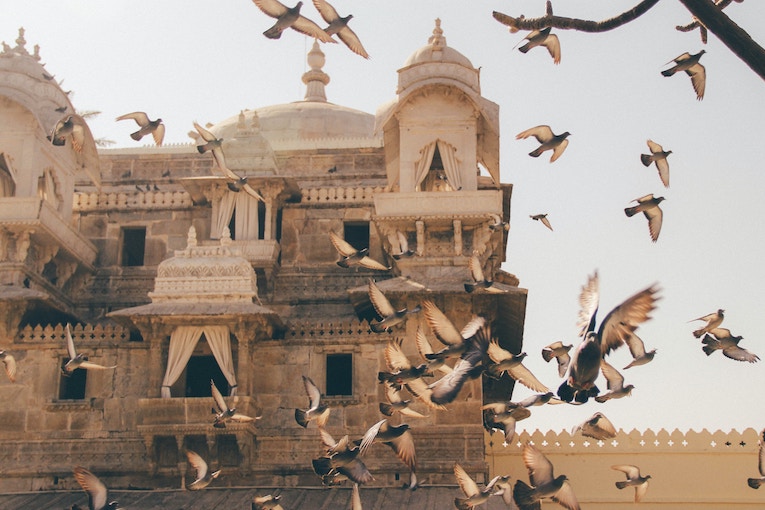
You can’t go wrong by learning Hindi if you’re planning a trip to India.
Hindi is a critical language to learn if you're planning on traveling to India . It's one of the more commonly spoken languages of India and is spoken by over 500 million people worldwide , so knowing Hindi can really come in handy when communicating with locals.
Another cool thing about learning Hindi is that it can give you a better appreciation and understanding of Indian culture. India is a really diverse country with a rich history, amazing food, and Bollywood films loved around the world.
Knowing Hindi can help you better understand and appreciate all of these things. It is also a stepping stone toward learning other Indian languages and even Sanskrit if you’re interested in pursuing a more spiritual path someday!
- Best place to learn: India
- Recommended program: Homestay Hindi Language Immersion Program in Jaipur, India
If you're planning a trip to East Africa, you might want to consider learning Swahili. Swahili is a really important language in East Africa and is spoken by over 140 million people . It’s the official language of Tanzania, Kenya, and Uganda , making it one of the best languages for traveling—and it’s also a really beautiful language!
Swahili has a melodic quality to it that many people find really pleasing to the ear. Plus, it has lots of words and phrases that just roll off the tongue in a really satisfying way.
Another reason why people enjoy speaking Swahili is that it's a language with a lot of history and cultural significance. Swahili has been spoken for centuries, and it's a language that's deeply tied to the region's culture and traditions. So for many people, speaking Swahili is a way to connect with their heritage and identity.
- Best place to learn: Tanzania
- Recommended program: Swahili Language Course in Tanzania
Thailand is a popular tourist destination known for its beautiful beaches, vibrant cities, and rich cultural heritage. Knowing Thai can help travelers navigate the country more easily and communicate with locals, which can enhance their overall travel experience. In addition, Thai is the official language of Thailand and is spoken by about 60 million people worldwide .
Learning Thai can be a gateway to understanding the culture and traditions of the Thai people and can help travelers connect with locals on a deeper level. But why do people want to learn Thai? Well, for one thing, Thai is a tonal language, which means that the meaning of a word can change based on the tone used to say it. This makes it a fascinating and challenging language to learn, and many people enjoy the intellectual challenge of mastering Thai.
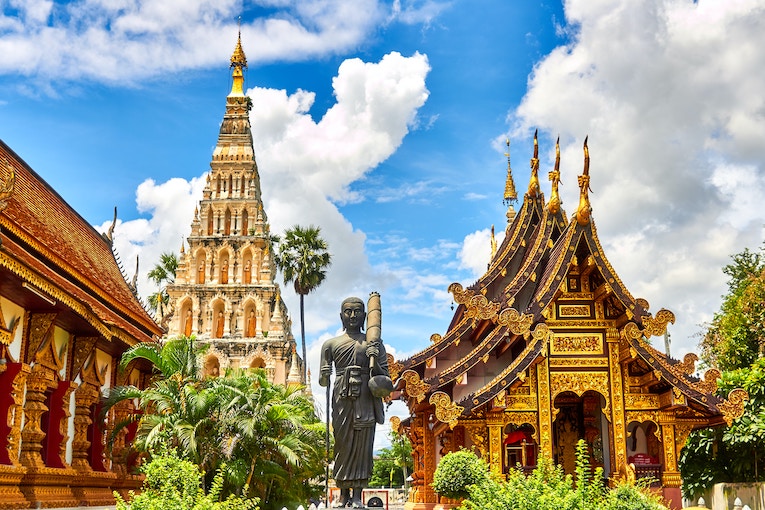
There are plenty of reasons why Thailand is a top tourist destination, and learning Thai will take your visit to another level.
Furthermore, Thai has a rich and diverse vocabulary, with many words that don’t have direct translations in English. This means that learning Thai can expand the ways in which you can express yourself. Thai people are known for their warmth and hospitality, and knowing Thai can help travelers form meaningful connections with locals and gain a deeper understanding of Thai culture.
- Best place to learn: Thailand
- Recommended program: Thai Language Course and Immersion in Chang Mai, Thailand
8. Portuguese
Portuguese is the official language of Portugal, Brazil, and several other countries in South America and Africa. This means that knowing Portuguese can be really helpful if you're traveling to any of these regions, as it can make it a lot easier to communicate with locals and really immerse yourself in the culture.
In addition, Portugal and Brazil are known for their amazing food, music, and art, and speaking Portuguese can help you better appreciate and understand these aspects of their cultures. From the samba rhythms of Brazil to the fado music of Portugal, the Portuguese language is deeply intertwined with the cultural fabric of these countries.
With its lilting rhythms and romantic intonations, Portuguese is a language that's often described as melodic and poetic. Portuguese also has a unique ability to convey a wide range of emotions and sentiments.
From expressing love and passion to conveying sorrow and longing, Portuguese is capable of evoking powerful emotions and feelings. Whether you're sharing stories over a glass of port wine in Porto or chatting with locals at a samba club in Rio, knowing Portuguese can help you forge meaningful connections with people from all walks of life.
- Best place to learn: Brazil
- Recommended program: Study Portuguese Language Online or in Salvador, Brazil
Italian is the official language of Italy, and it is also spoken in parts of Switzerland and Croatia. Italy is a popular tourist destination, known for its stunning architecture, rich history, and delicious food.
Italy is also known for having an aging population—many elderly people in Italy likely do not speak English. Italians are known for their friendliness, and knowing Italian can help travelers navigate the country more easily and communicate more efficiently, which can enhance the overall travel experience and help you tap into that Italian wisdom!
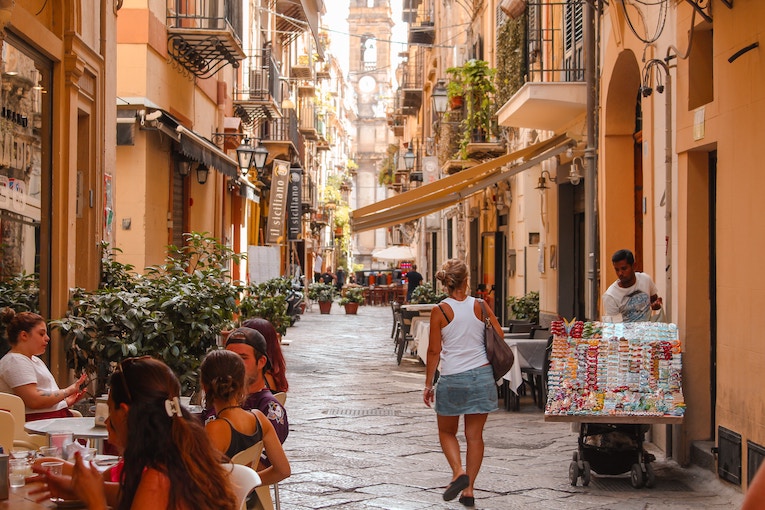
That could be you, enjoying the Italian sunshine, getting ready to make conversation with locals.
Italian is also a beautiful language with a rich cultural history. From the art and literature of the Renaissance to the operas and music of the modern era, Italian has played a significant role in shaping Western culture. As one of the Romance languages, it can be your gateway to other languages like Spanish, French, and Portuguese—or it will be a much easier endeavor picking up Italian if you already have a foundation in these other languages!
- Best place to learn: Italy
- Recommended program: Learn Italian in Tuscany at Il Sasso Language Institute
Korean is the official language of both North and South Korea and is spoken by about 75 million people worldwide , including in parts of China and Japan. Learning Korean is a great idea if you’re interested in that region. Firstly, South Korea is a very attractive place to visit , with their delicious food, rich history, and cutting-edge technology. Korean is also a unique language with its own distinct writing system and grammar rules.
Many people are drawn to the challenge of learning Korean and enjoy the intellectual stimulation that comes with mastering a new language like this. Furthermore, South Korea is a major player in industries like technology, entertainment, and automotive manufacturing. Knowing Korean can not only open up potential future opportunities but will also allow you to appreciate K-pop and K-dramas on a deeper level!
- Best place to learn: South Korea
- Recommended program: Summer Korean Immersion Program with Homestay in Seoul
German is a widely spoken language in Europe and has over 100 million speakers worldwide . Learning German can be a gateway to understanding the culture and traditions of German-speaking countries like Germany , Austria, and parts of Switzerland, Belgium, and Italy.
German is a language of innovation and industry, with a reputation for precision and efficiency. Many people are drawn to German because of its association with fields like engineering, science, and technology, and see it as a valuable skill to have in today's global marketplace. Furthermore, German is a language with a rich cultural heritage, with contributions to fields like philosophy, literature, and music.
From the works of Kant and Nietzsche to the operas of Wagner, German has played a significant role in shaping key European history. Finally, German people are known for their directness and honesty, and knowing German can help travelers form meaningful connections with locals with a better understanding of cultural barriers.
- Best place to learn: Austria
- Recommended program: Eurolingua Study Abroad Program - German in Vienna
12. Japanese
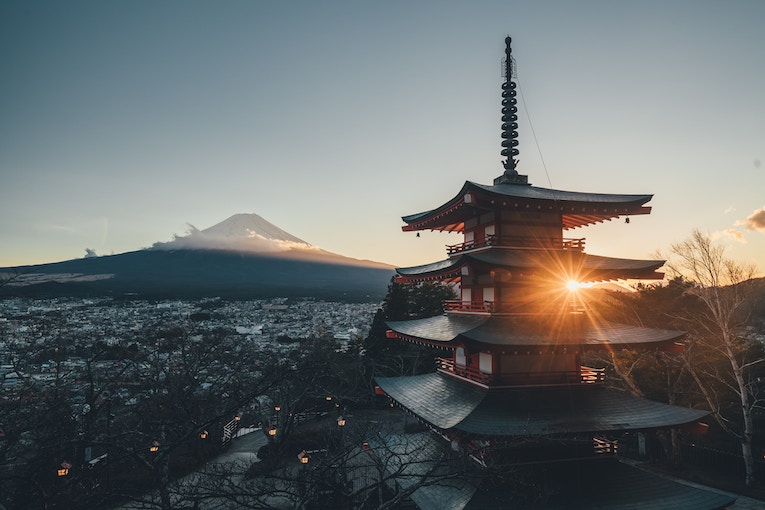
Japan’s iconic sights are calling. Start studying Japanese and get your answer ready!
People all over the world are interested in learning Japanese for a variety of reasons. Japanese is the official language of Japan and is spoken by over 130 million people worldwide . Apart from Japan, it is also widely spoken in Brazil due to the early immigration of Japanese people for many generations. Learning Japanese can be a gateway to understanding the culture and traditions of Japan, from historic art dating back centuries to contemporary manga and anime.
The language itself is immensely fascinating. Japanese has many honorifics and polite language expressions that are used to show respect and politeness in social interactions. These honorifics can be used to show respect to someone of higher social status or to express gratitude, and are an important part of Japanese culture and language .
Japanese vocabulary also includes onomatopoeic words. These are words that imitate sounds, like "pika-pika" for sparkling or "gacha-gacha" for clattering. Onomatopoeic words are used frequently in Japanese and add a fun and playful element to the language.
Japanese has a rich and diverse vocabulary, with many words and phrases that don't have direct translations in English. This means that learning Japanese can help you think in new and different ways. Japanese people are known for their politeness and hospitality, and knowing Japanese can help travelers form meaningful connections with locals and minimize language gaps.
- Best place to learn: Japan
- Recommended program: Meiji Academy - Study Japanese in Fukuoka
13. Russian
Russian is spoken by over 258 million people worldwide and is an official language of Russia, Belarus, Kazakhstan, and Kyrgyzstan . It is also widely spoken in other former Soviet republics like Ukraine, Uzbekistan, and Tajikistan, making it one of the best languages to learn for travel. Many people in these countries learned Russian as a second language during the Soviet era, and it remains an essential language for business and communication.
Knowing Russian as a traveler will allow you to appreciate the richness of such countries and the vast diversity it has to offer. Russian is known for its complex grammar rules and unique vocabulary. For example, Russian has a rich system of word endings that indicate grammatical cases, which can be challenging for English speakers to learn.
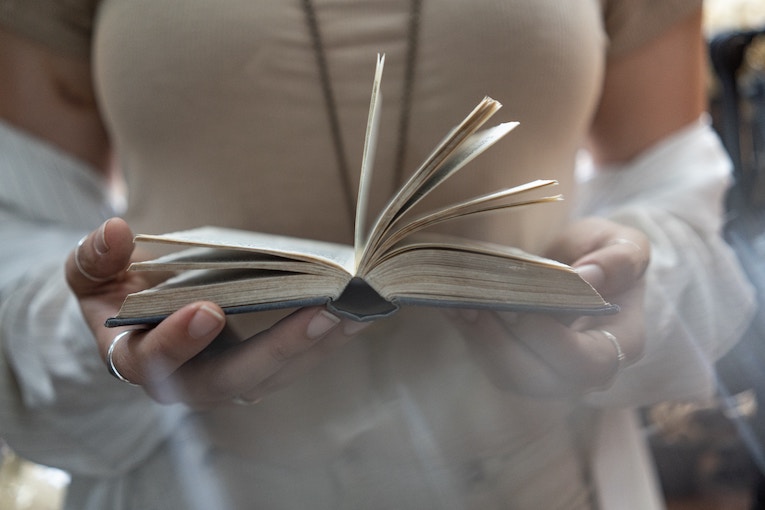
All that studying will pay off when you can handle grammatical cases with ease.
In addition, Russian has a lot of loanwords from other languages, particularly French and German, which add to the richness and diversity of the language. Russian is also spoken by diaspora communities all over the world, particularly in the United States, Israel, and Germany. These communities often maintain cultural and linguistic ties to Russia and use Russian as a means of communication and cultural expression.
- Best place to learn: Latvia
- Recommended program: Russian as a Foreign Language in Daugavpils, Latvia
14. Turkish
Turkish is the official language of Turkey and is spoken by over 80 million people worldwide , including in parts of Cyprus and Bulgaria . Turkish is a language that many people aiming to be polyglots want to master as the language is known for its agglutinative nature . This means that words are created by stringing together different morphemes which can result in long and complex words and can be challenging for English speakers to learn.
In addition, Turkish has many loanwords from other languages, particularly Arabic and Persian. These loanwords add to the richness and diversity of the Turkish vocabulary and can be interesting for language learners to explore.
Furthermore, Turkish is a vital language for trade and commerce, with Turkey being a major player in industries like textiles, agriculture, and tourism. Turkish media like drama series and music are also gaining popularity lately, so learning this beautiful language will allow you to appreciate and indulge in a wider variety of art forms.
- Best place to learn: Turkey
- Recommended program: Turkish Language Course and Immersion in Istanbul, Turkey
Talk to our FREE Online Advisor and get matched with 5 language programs abroad
Traveling is a great motivator for learning a new language.

Which of these languages will you choose to learn first?
Learning even a few basic phrases in any of these languages can greatly enhance your travel experience and help you connect with locals. Exploring the world is a never-ending journey, and enhancing your experience by learning various languages will be priceless.
Not only is learning a language a great way to improve your own capabilities, but it’s also a great way to connect with people around the world and appreciate other places! So why not give it a try and see where your language learning journey takes you?
Explore ALL Language Programs on GoAbroad.com!

Explore Language Immersion Programs on GoAbroad.com
Related Articles
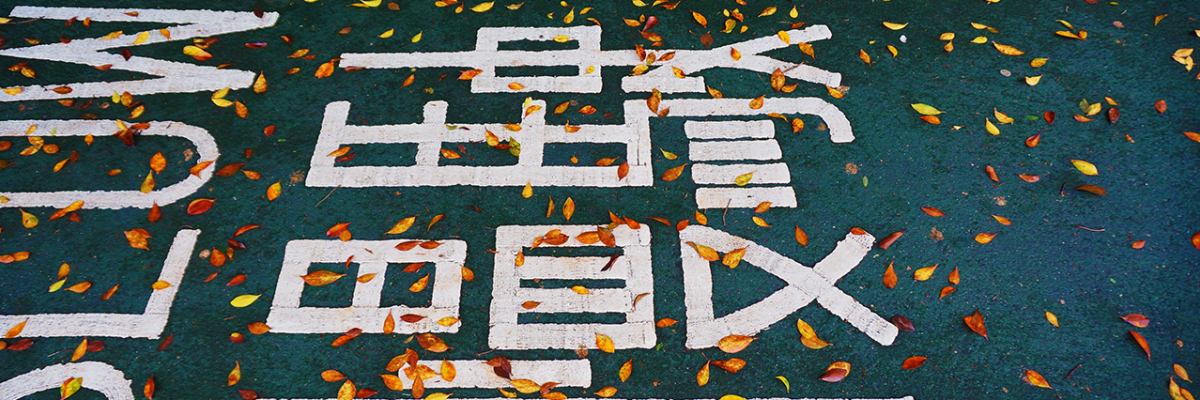
By Chiara Lodi | 6 days ago
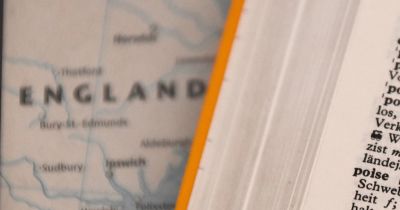
By Julie Ball | April 12, 2024
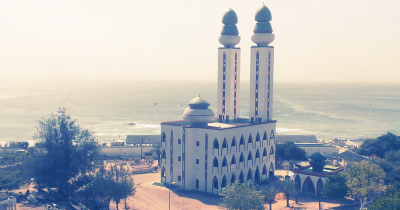
By Mary Ellen Dingley | April 10, 2024
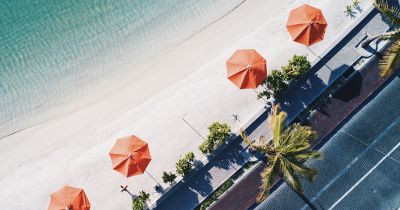
By GoAbroad 2018 Official Report | April 9, 2024
Popular Searches
Recommended programs.
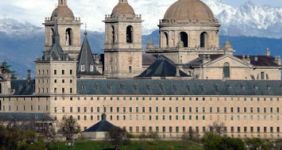
Juventud y Cultura

1905 reviews
MAXIMO NIVEL

Don Quijote
Top Language Program Providers
Popular opportunities to check out
Prepare to speak confidently with the best online tutors
Learn and immerse in thai language and culture, online spanish course for all levels at an accredited school, learn spanish with the top-rated programs in latin america, for travelers, travel resources, for partners.

© Copyright 1998 - 2024 GoAbroad.com ®
- Study Abroad
- Volunteer Abroad
- Intern Abroad
- Teach Abroad
- TEFL Courses
- Degrees Abroad
- High School Abroad
- Language Schools
- Adventure Travel
- Jobs Abroad
- Online Study Abroad
- Online Volunteer Programs
- Online Internships
- Online Language Courses
- Online Teaching Jobs
- Online Jobs
- Online TEFL Courses
- Online Degree Programs
- India Tour Packages Shimla Manali Kullu Goa Kashmir Spiti valley Srinagar Nainital Dalhousie Mussoorie Ooty Munnar Kerala Andaman Sikkim Himachal Pradesh International Tour Packages Thailand Singapore Sri Lanka Mauritius Maldives Dubai Bhutan Seychelles Bali Switzerland New Zealand Hong Kong Istanbul Greece Italy United Kingdom

Top 10 Indian travel vloggers and youtubers to follow in 2024

Debalina Deb Roy
- Tanya Khanijow
- Mohit Manocha
- Varun Vagish
- Navankur Chaudhary
- Mithilesh Yadav
- Shubham Kumar
- Mumbiker Nikhil
- Kritika Goel
- Deepanshu Sangwan
- Prakriti Varshney

1. Tanya Khanijow
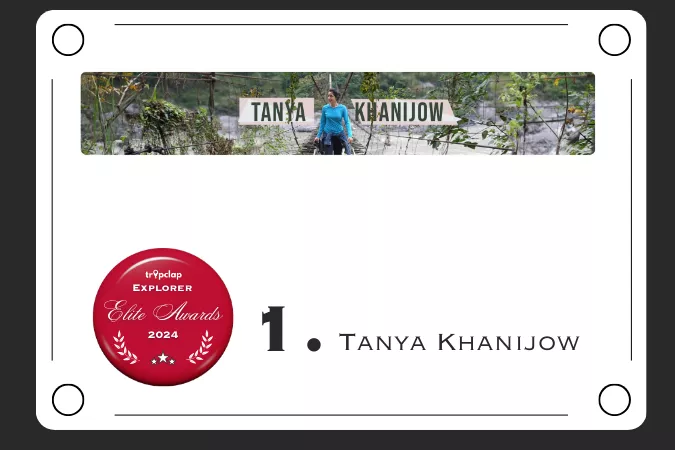
- Instagram- tanyakhanijow
- Instagram follower - 919 K
- Youtube- Tanya Khanijow
- Youtube subscriber - 1.4 M
Places to visit in Bali
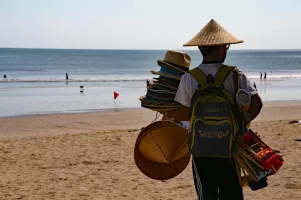
2. Mohit Manocha
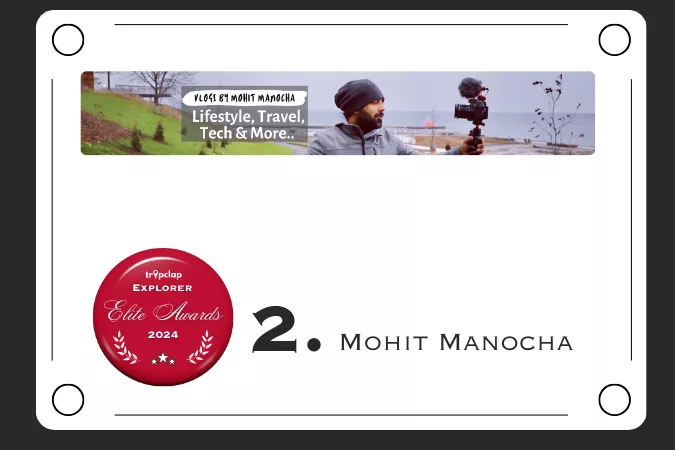
- Instagram- thetravelingdesi
- Instagram follower - 640k followers
- youtube- Traveling Desi
- youtube subscriber - 3.12 million
Places to visit in United Kingdom
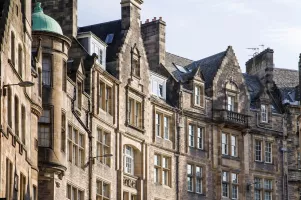
3. Varun Vagish
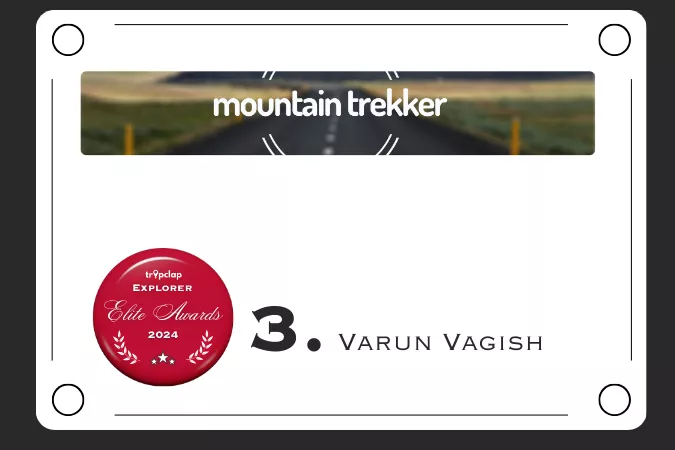
- Instagram- varunvagish
- Instagram follower - 200k
- Youtube- mountaintrekker
- Youtube Subscriber - 1.58 million
Places to visit in Himachal Pradesh
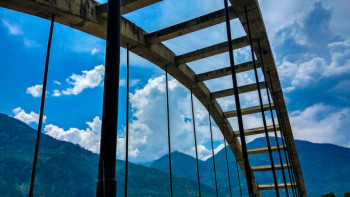
4. Navankur Chaudhary
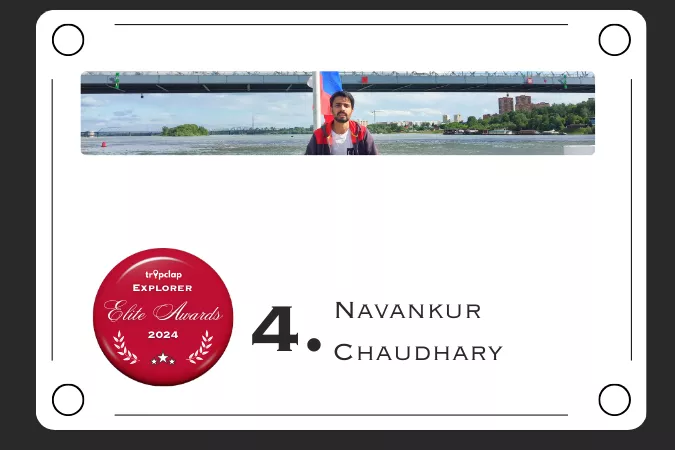
- Instagram - navankurchaudhary
- Instagram follower - 157K followers
- youtube - yatri doctor
- Youtube subscriber - 1.31M
Places to visit in Singapore
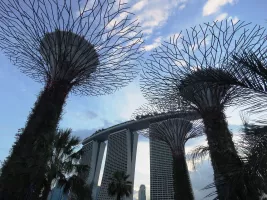
5. Mithilesh Yadav
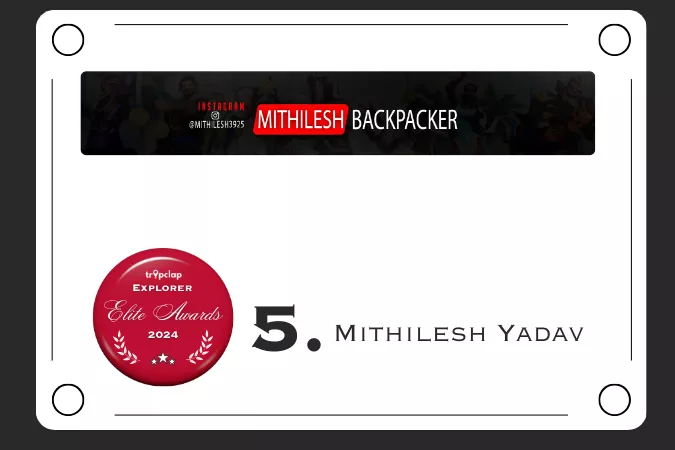
- Instagram - mithilesh3925
- Instagram follower - 91.6k
- youtube - Mithilesh Backpacker
- Youtube subscriber - 1.03M

6. Shubham Kumar
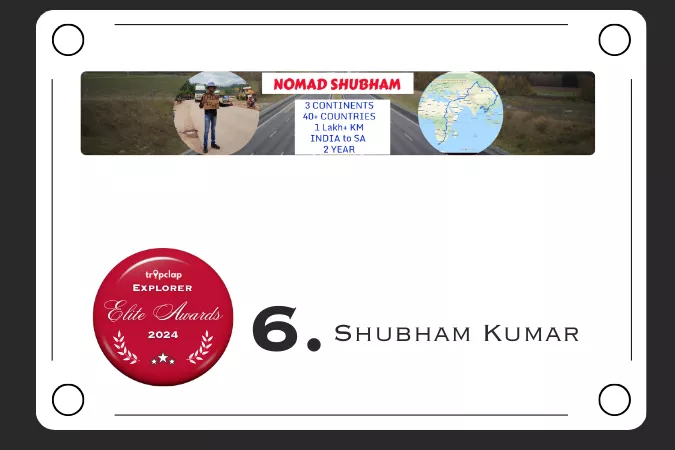
- Instgaram - nomadshubham
- Instagram follower - 429K
- Youtube - Nomad Shubham
- Subscriber - 2.93 M
Places to visit in Thailand
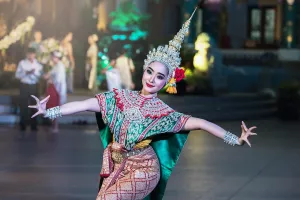
7. Mumbiker Nikhil
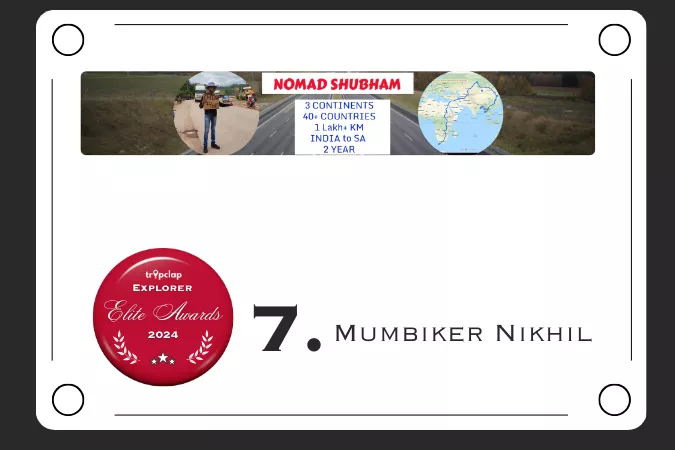
- Instgaram-nikkkhil
- Instagram follower - 1.4 M
- Youtube- Mumbiker Nikhil
- Subscriber - 4.05 M
Places to visit in Kashmir
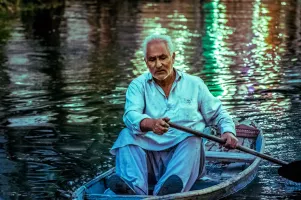
8. Kritika Goel
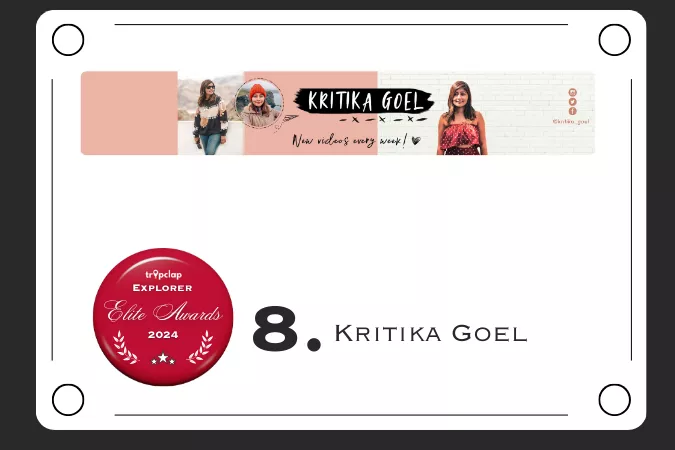
Places to visit in Dubai
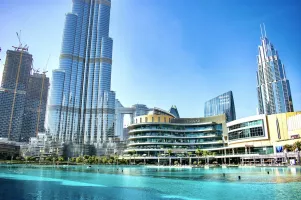
9. Deepanshu Sangwan
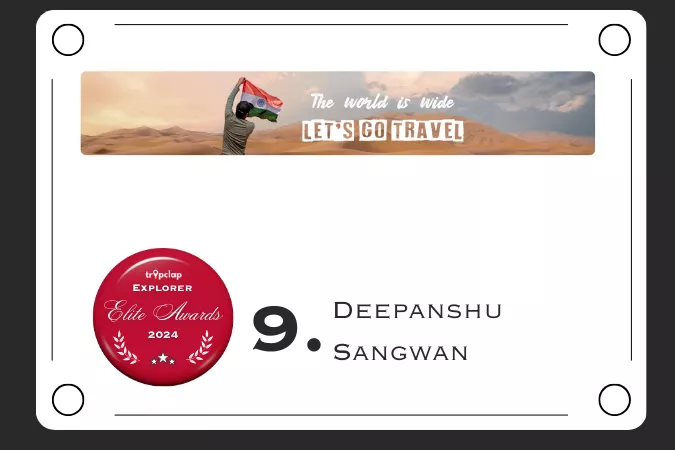
Places to visit in Vietnam
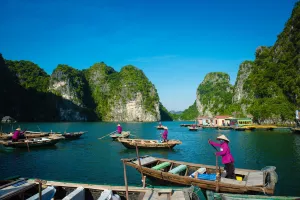
10. Prakriti Varshney
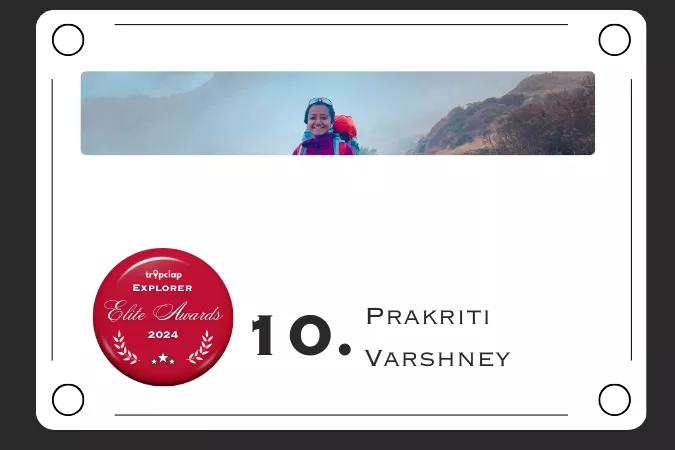
- Instagram- itisinthename
- Instagram followers - 152K
- Youtube- PrakritiVarshney
- Youtube subscriber - 23.5K
Places to visit in Uttarakhand
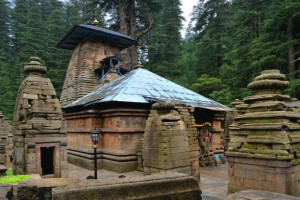
Help & Support
Call us now, +91-8069145442, best places to visit in india by month.

Read More Stories
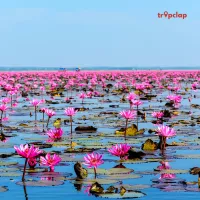
Frequenty Asked Questions
1. 2. mohit manocha, 2. do indian travel vloggers only focus on domestic travel or international destinations as well, 3. how do indian travel vloggers fund their travels, 4. which indian travel vlogger focuses on budget travel, 5. are there indian travel vloggers who focus on solo travel, 6. how can i stay updated on the travels of these vloggers, 7. do these vloggers provide travel tips and advice, 8. how can i connect with these travel vloggers.
- Plan Your Vacation

Engineer Your Finances
The 15 Most Popular Languages In The Whole World
Posted: April 21, 2024 | Last updated: April 21, 2024
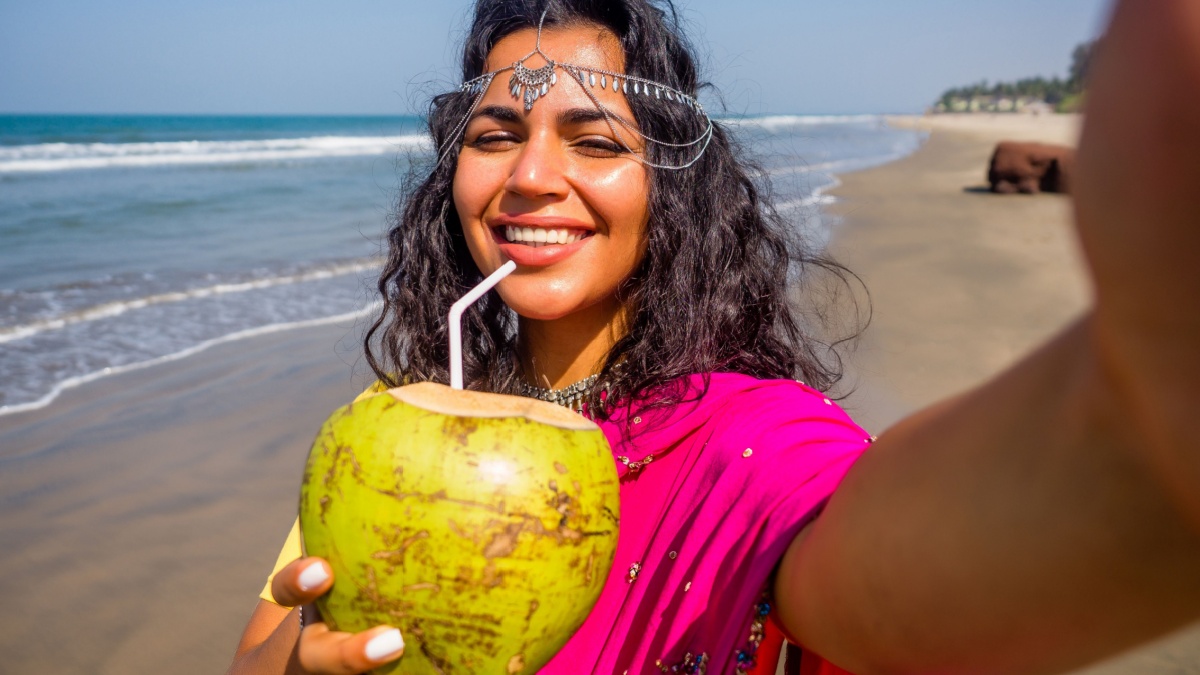
There are thousands of languages, and many are only spoken by small populations. However, some languages are spoken by enormous swaths of the Earth. There are many languages with hundreds of millions of speakers or even more.
According to Berlitz, these are the languages that are most spoken in the world today.

As the most spoken language in the world, more than 1.4 billion people speak it. It’s considered a standard language for business as well as technology and tourism. About 373 million speak it as their first language.
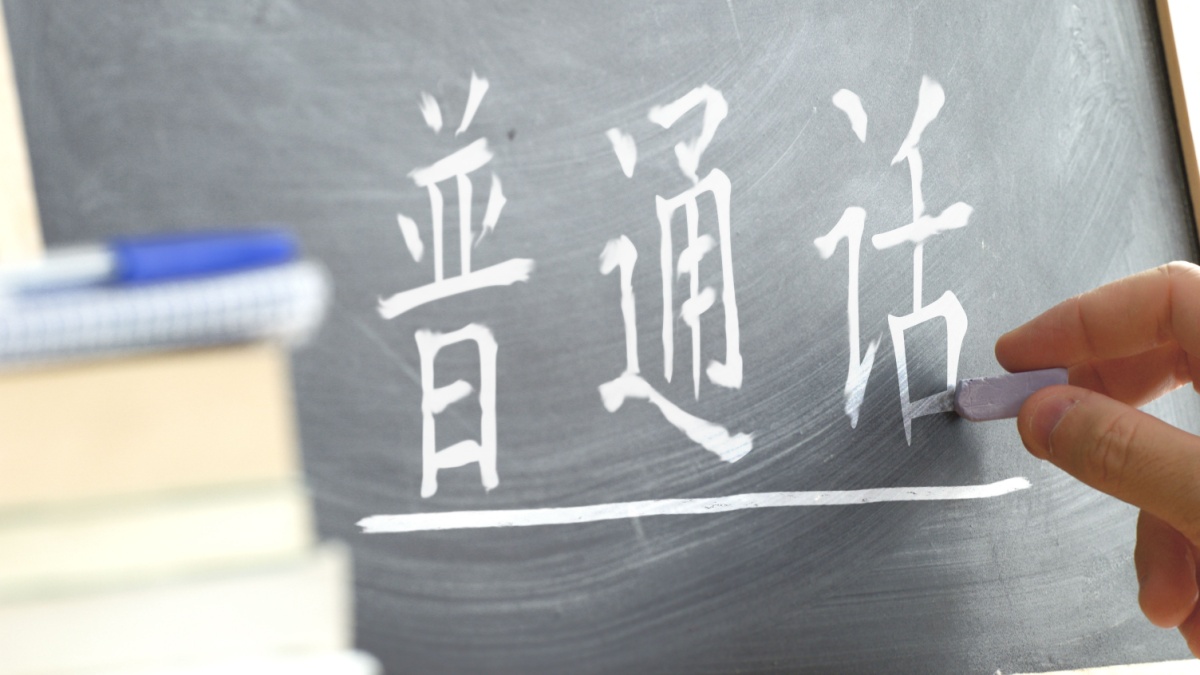
More than 1.1 billion people speak Mandarin. About 929 billion people learned it as their first language. The language is a collection of dialects rather than a set language.
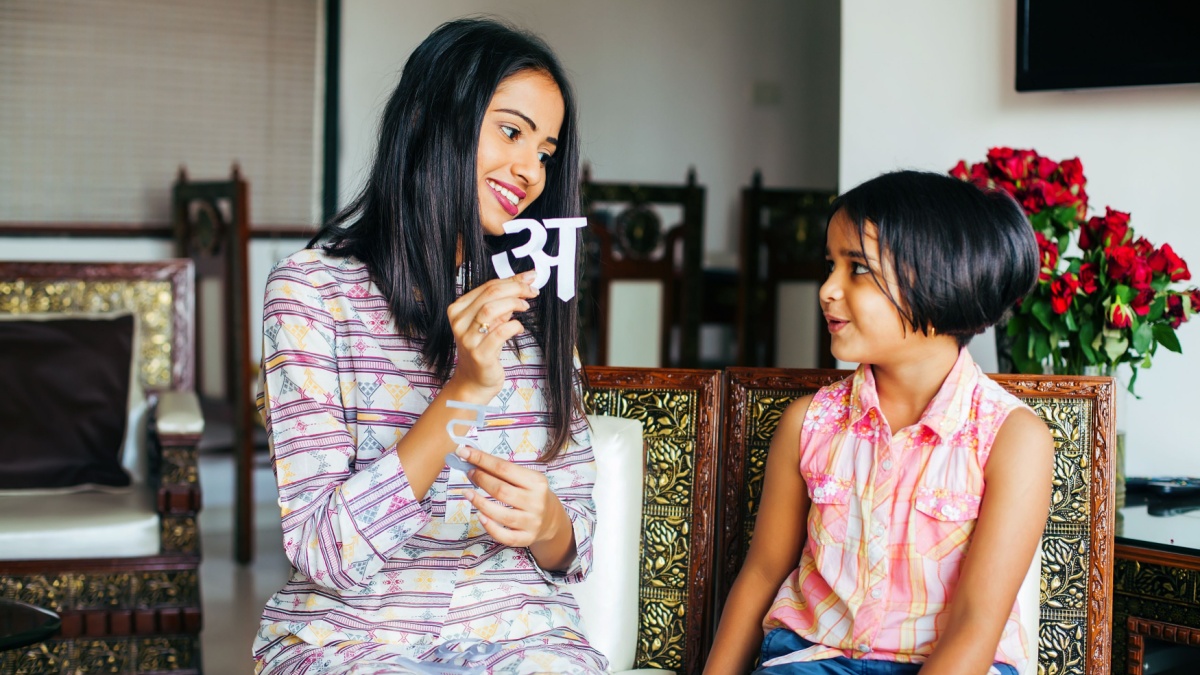
With more than 602 million speakers, it’s one of the world’s most common languages. There are 22 official languages of India, and Hindi is one of them. About 344 million speak it as their first language.

Spanish is the most commonly spoken Romance language, and online it’s the third most common language. It has 474 million first-language speakers and about 548 million speakers overall.

29 countries speak French, and it’s spoken by 280 million people around the world. Only about 80 million of them learned French as their first language.

Modern Standard Arabic
This language doesn’t have any native speakers, but it has 274 million other speakers. It’s a language that is largely academic and used in things like movies and newspapers so that people of various dialects can all understand what’s presented.
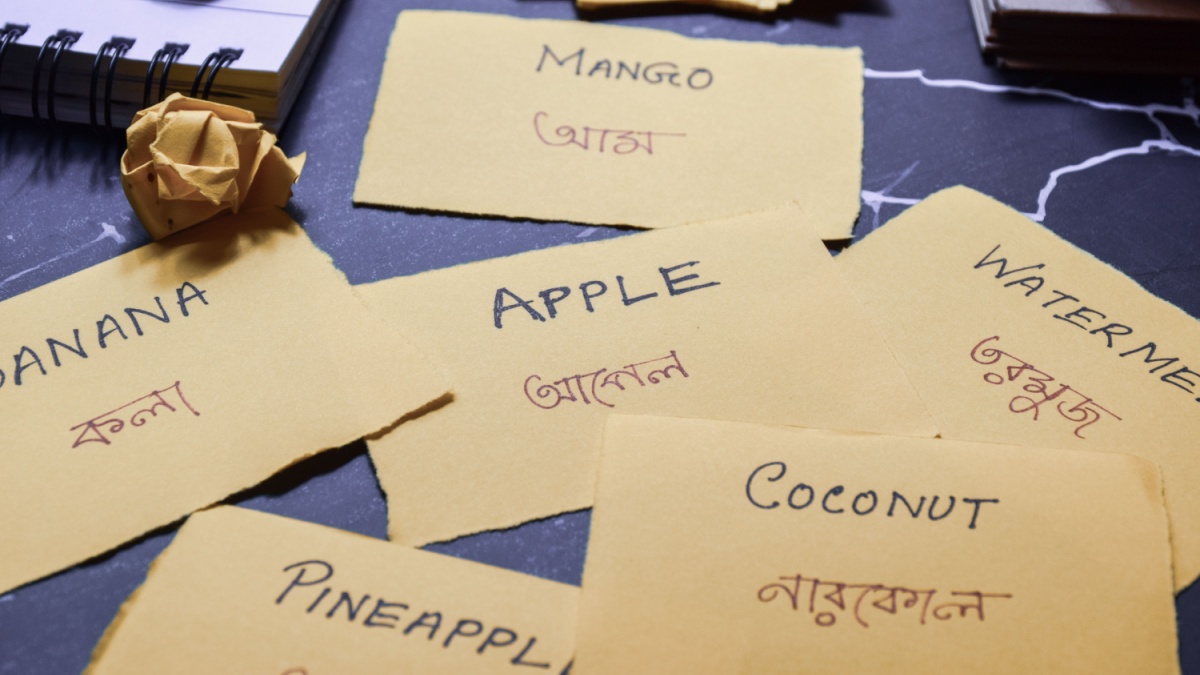
This language is Bangladesh’s official language. It’s also spoken by some people in Burma and India. About 272 million people speak this language, and about 233 million speak it as a first language.
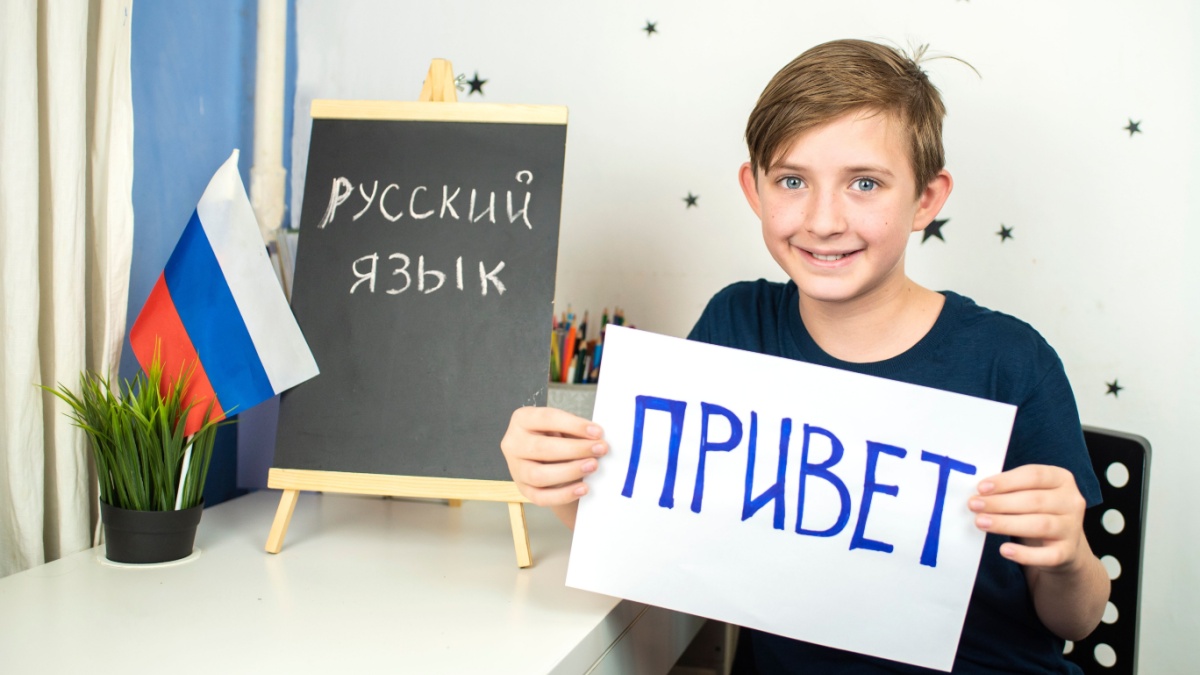
Because so many countries used to be a part of the U.S.S.R., people in many countries speak Russian. It’s commonly spoken in 19 countries. About 258 million people speak it with 154 million being first-language speakers.
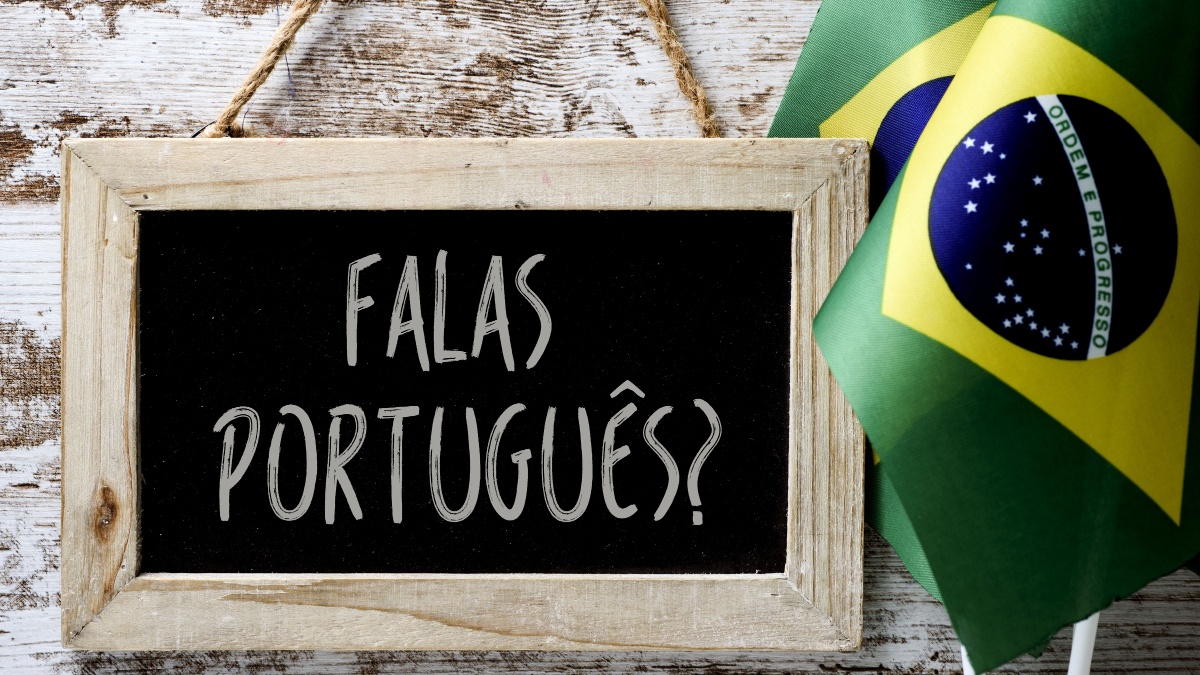
Nine countries speak Portuguese, and they’re spread out across Asia, South America, Europe, and Africa. About 257 million people speak Portuguese, and about 232 million speak it as their first language.
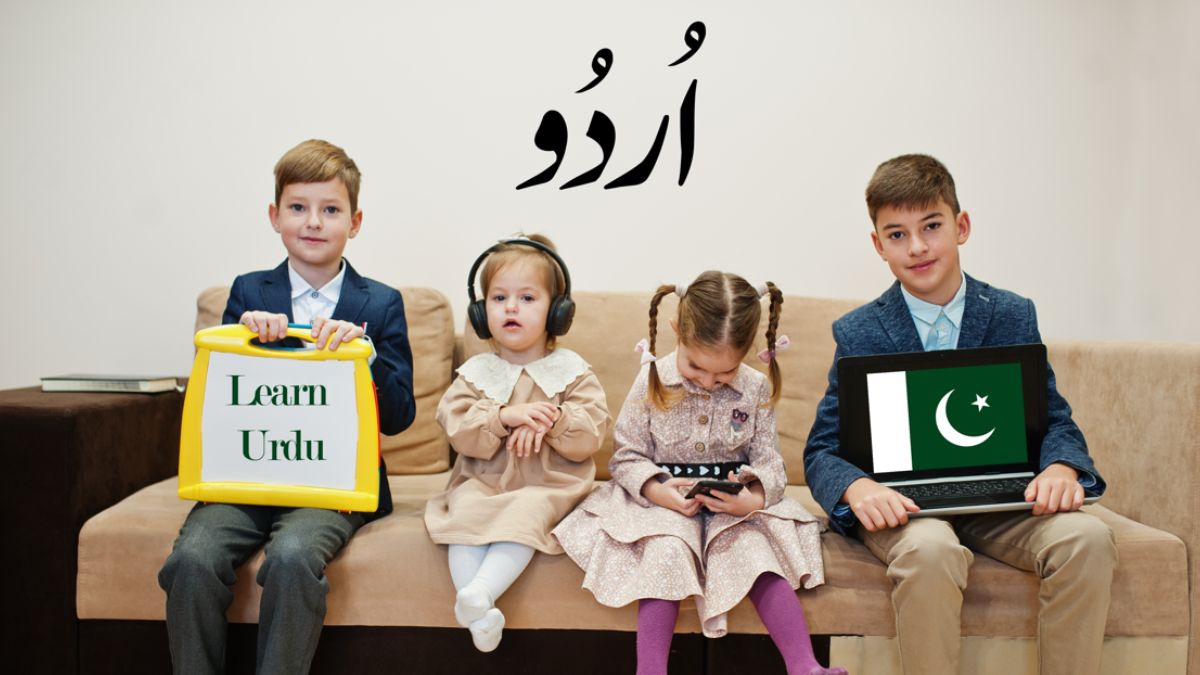
This language is spoken by 231 million people and is one of Pakistan’s two official languages. It’s also used in parts of India. People who speak Hindi can often understand this language, and vice versa.
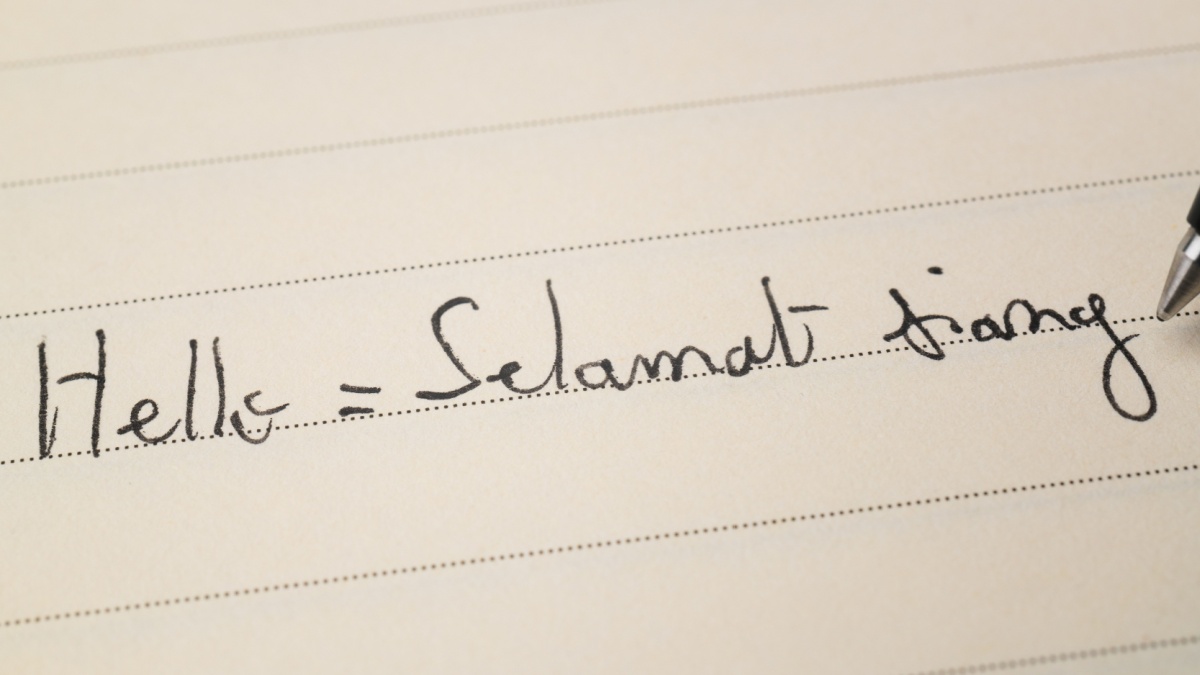
The country of Indonesia has more than 200 spoken languages. Indonesian is spoken by about 199 million people, but only about 43 million of them learn it as their first language. It’s often learned to be able to communicate with others amid the many languages in the country.
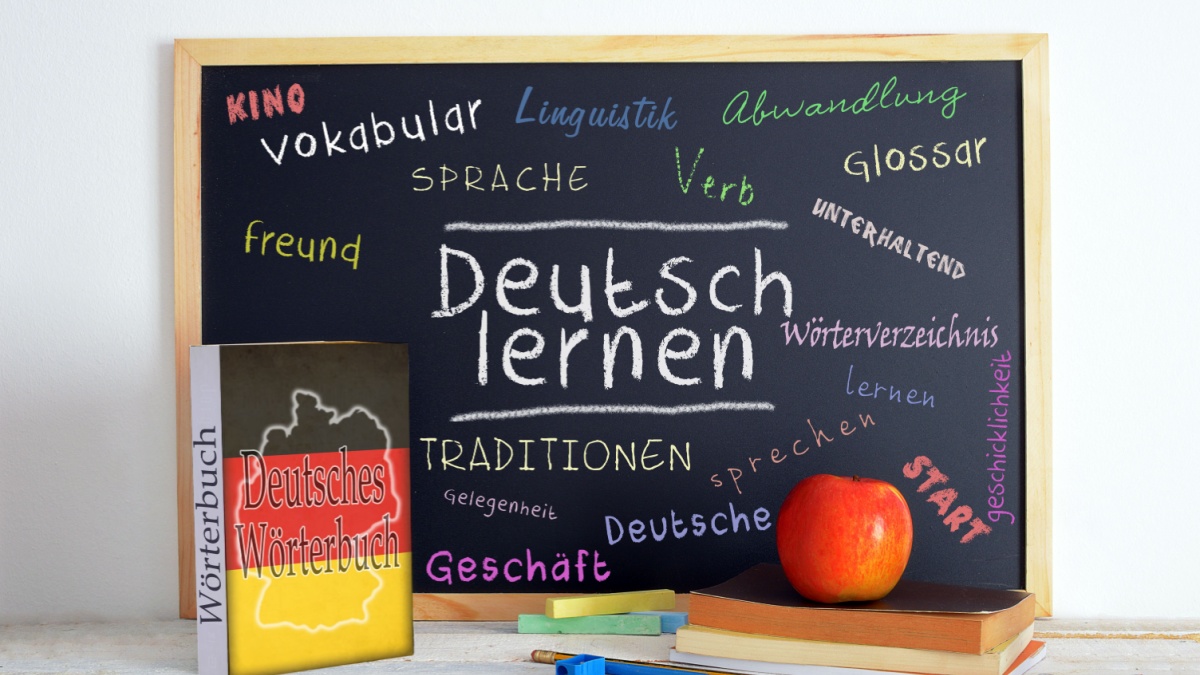
German is spoken as a first language by more than 75 million people. Learning German is popular around the world, and 134 million people in total speak this guttural language.
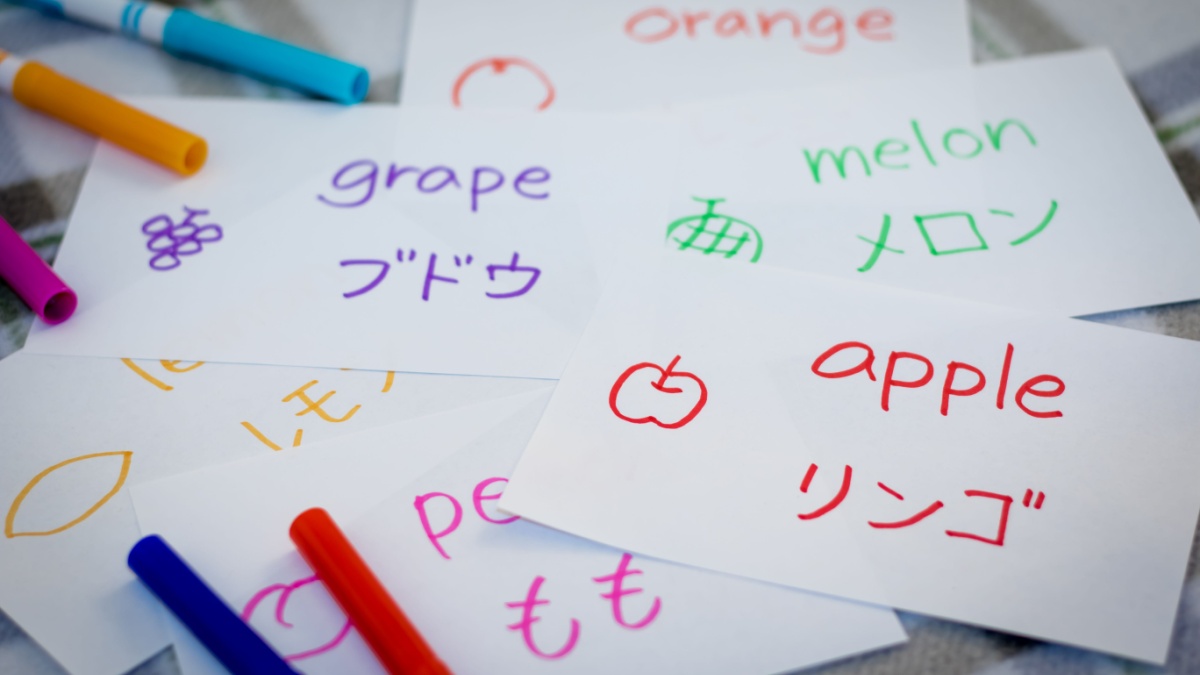
Only one country, Japan, speaks Japanese. Within the country, 99% of people speak this as their first language. More than 125 million people speak this language, so many people study it to get to know Japanese culture.

Nigerian Pidgin
More than 120 million people speak this language, but only 4.7 million speak it as their native language. This language is growing rapidly as the population of Nigeria skyrockets.
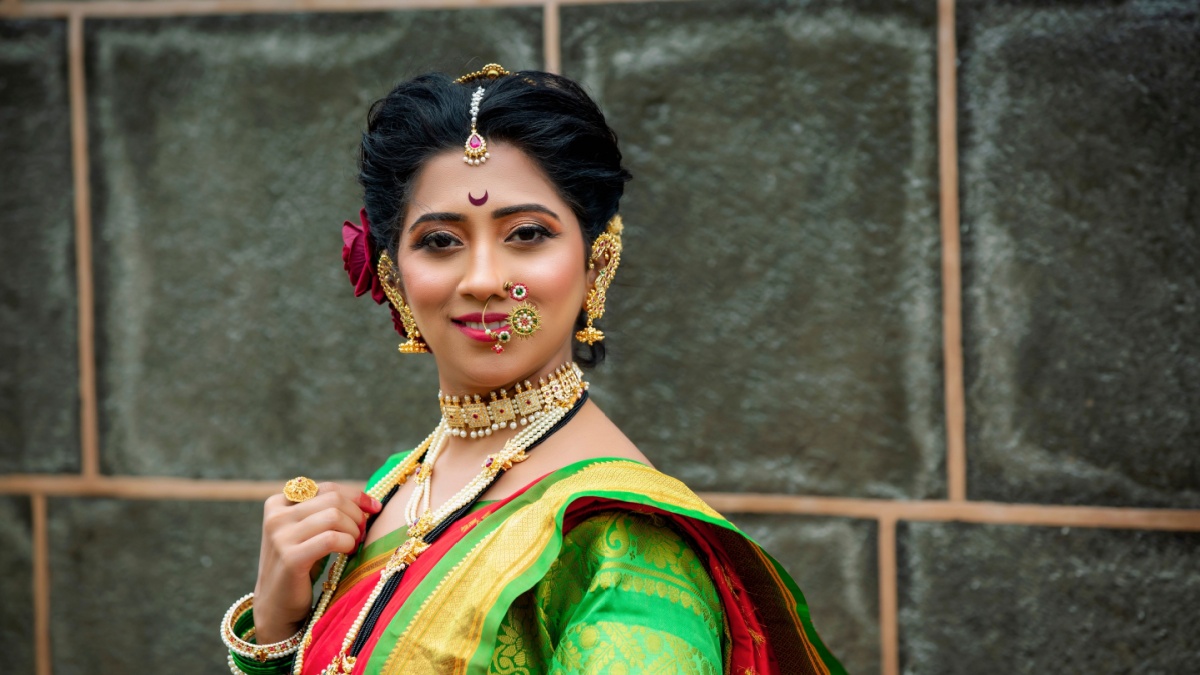
In India, the third biggest language is Marathi. It’s spoken by 99 million people and is one of the world’s oldest languages. It’s stayed as it is for the past 1,300 years.
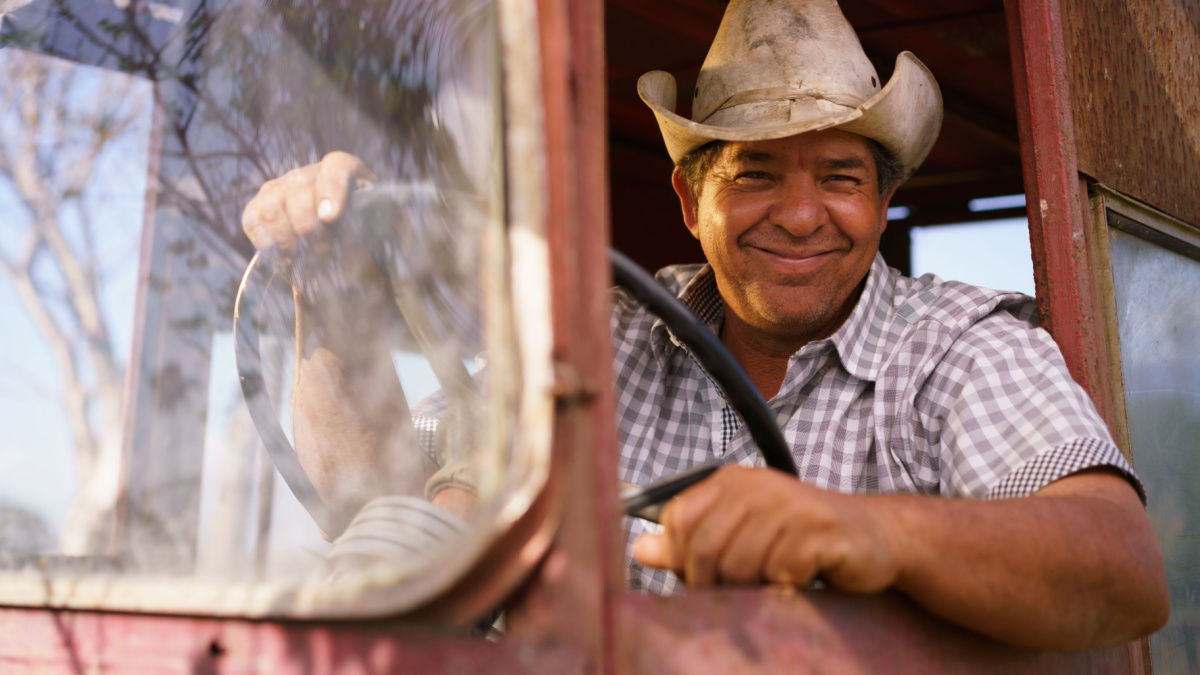
The 15 States Bursting at the Seams With People
Some states have a high population density and many population centers. Others are mostly rural and may have little population. The difference between the top and bottom states in terms of population is enormous.
According to World Population Review , these are the top 15 states for population.

These 15 States Are the Safest States in the USA
Some states are safer than others, and this is a big influence on where people move. Places with a low level of public safety have a lot of crime, and this can prevent the public from wanting to move there and even visit.
There are various types of crime, with violent crime and property crime being highly important to the public safety rating of each state.

The 11 Most Dishonest Cities in America
Picture this: you find a stack of cash. Do you pocket the unexpected windfall, or do you take the noble route and hand it in to the police?
In this scenario, a significant 47% of Americans admit they would keep the found money, assuming no one saw their stroke of luck. Interestingly, gender doesn’t play a big role, with both women (47.4%) and men (46.6%) expressing similar inclinations to be tempted by the cash.

The 15 Countries That Have More Filthy Rich People Than Others
There are rich people around the world, but there are some areas that have more wealthy residents than others. When looking at how many millionaires there are in each country, it isn’t even remotely even.
There are major wealth centers in certain countries that represent far more wealth than exists in other areas. It’s amazing how many millionaires there are; this is where they’re located.

15 Countries That You Will Probably Regret Traveling To
There are some countries where the majority of visitors love their experience. However, there are other countries that people come back from and never recommend to anyone. These countries often have circumstances that make the trip miserable so that visitors can’t wait to leave and go home.
More for You
19 Things People Treat As Safe That Actually Are Pretty Dangerous
NFL draft grades: Every team's pick in 2024 first round broken down
29 common human foods you may not realize are poisonous to your dog
Major Steakhouse Chain Closes 41 Locations
Forgotten 1990s Blockbusters Everyone Should Rewatch
Scientists discover gigantic 'structure' under the surface of the Moon
Unsellable Houses' Lyndsay Lamb Says Buyers Are Moving Away From This Color Trend
Popular Bakery Item Returns to Costco and People are Lining Up for Them
Ukraine Decoy Missiles Spark Crimea Attack Fears
Republic First Bank Seized By Regulators—First Bank Collapse Of 2024
The most expensive state to live in isn't California or New York, based on data. Here are the top 10.
Experts Say These Are The 5 Worst Foods For Your Cholesterol
Jensen Ackles Joins Justin Hartley in ‘Tracker' at CBS
40 celebrities who often get confused for one another
Judge upholds disqualification of challenger to judge in Trump’s Georgia election interference case
Why You Should Be Putting Aluminum Foil Behind Your Router
Here is the true value of having a fully paid-off home in America — especially when you're heading into retirement
I Thought My Pain Was Due to Age. I Never Saw my Diagnosis Coming
Culver's Vs Five Guys: Which Burger Chain Is Better?
China Warns Military 'Always Ready' After US Admiral Sounds Invasion Alarm
India Won't Travel To Pakistan For Champions Trophy 2025? Report Makes Bold Claim
The indian cricket team may not travel to pakistan for the icc champions trophy next year, and the venue for the event will likely get shifted or a hybrid model used..

Advertisement
Supported by
Modi Calls Muslims ‘Infiltrators’ Who Would Take India’s Wealth
The direct language used against the country’s largest minority was a contrast to the image Prime Minister Narendra Modi presents on the world stage.
- Share full article

By Alex Travelli and Suhasini Raj
Reporting from New Delhi
Prime Minister Narendra Modi on Sunday called Muslims “infiltrators” who would take India’s wealth if his opponents gained power — unusually direct and divisive language from a leader who normally lets others do the dirtiest work of polarizing Hindus against Muslims.
Mr. Modi, addressing voters in the state of Rajasthan, referred to a remark once made by Manmohan Singh, his predecessor from the opposition Indian National Congress Party. Mr. Singh, Mr. Modi claimed, had “said that Muslims have the first right to the wealth of the nation. This means they will distribute this wealth to those who have more children, to infiltrators.”
Mr. Modi aimed his emotional appeal at women, addressing “my mothers and sisters” to say that his Congress opponents would take their gold and give it to Muslims.
Modi Calls Muslims ‘Infiltrators’ in Speech During India Elections
Prime minister narendra modi of india was criticized by the opposition for remarks he made during a speech to voters in rajasthan state..
I’m sorry, this is a very disgraceful speech made by the prime minister. But, you know, the fact is that people realize that when he says the Congress Party is going to take all your wealth and give it to the Muslims, that this is just a nakedly communal appeal which normally any civilized election commission would disallow and warn the candidate for speaking like this.

Implications like these — that Muslims have too many babies, that they are coming for Hindus’ wives and daughters, that their nationality as Indian is itself in doubt — are often made by representatives of Mr. Modi’s Bharatiya Janata Party, or B.J.P.
Mr. Modi’s use of such language himself, as he campaigns for a third term in office, raised alarm that it could inflame right-wing vigilantes who target Muslims , and brought up questions about what had prompted his shift in communication style. Usually, Mr. Modi avoids even using the word “Muslims,” coyly finding ways to refer indirectly to India’s largest minority group, of 200 million people.
Mallikarjun Kharge, the president of the Congress party, called Mr. Modi’s remarks “hate speech.” Asaduddin Owaisi, who represents the only national party for Muslims, lamented how “common Hindus are made to fear Muslims while their wealth is being used to enrich others.”
Tom Vadakkan, a spokesman for the B.J.P., said that Mr. Modi’s speech was being misinterpreted. “This is not about our compatriots, the Muslims,” he said. Mr. Modi was talking only about “infiltrators,” according to Mr. Vadakkan.
The prime minister’s fiery oration, delivered in 100-degree heat in the town of Banswara in arid Rajasthan, marked a contrast to the image he presents in international contexts.
During a visit to the White House in June, Mr. Modi said there was “no question of discrimination” in India. When he played host to the Group of 20 summit in New Delhi three months later, he chose the theme “the world is one family”(in Sanskrit, the primary liturgical language of orthodox Hinduism).
He put his own face on soft-power outreach programs like World Yoga Day, broadcast to Times Square, using it to present a Hindu-centric India as a benign “teacher to the world.”
Campaigns that divide Hindus and Muslims can be useful in animating the hard-right Hindu base of Mr. Modi’s otherwise broad-based electorate, especially in places like Banswara, where Hindus outnumber Muslims by three to one.
With his remarks, Mr. Modi may have been trying to close a divide that has opened among Hindus in Rajasthan over whether to support the B.J.P., with one prominent group holding protests over comments made by a party official.
But the prime minister’s speech was also clearly intended for a wider audience; he shared a clip on his official social media channels.
The B.J.P. remains the favorite to win another parliamentary majority when six weeks of voting concludes on June 1 and ballots are counted three days later. Mr. Kharge, the Congress party president, called Mr. Modi’s speech — perhaps hopefully — a sign of desperation, adding that opposition candidates must be faring well in the early stages of balloting.
Neerja Chowdhury, a columnist and the author of “How Prime Ministers Decide,” echoed Mr. Kharge, saying that, in her view, “voters are expressing their dissatisfaction much more openly this time.” The B.J.P. is capable of a swift course correction, she added, because “they get feedback very quickly.”
Rahul Gandhi, the public face of the Congress party , said that Mr. Modi’s comments had been intended as a diversion from subjects that trouble ordinary voters, like joblessness and inflation.
That the prime minister alluded to religion at all in his speech drew complaints that he may have violated India’s election rules.
Candidates are supposed to be barred from asking for votes in the name of religion or caste. But B.J.P. leaders regularly invoke Hindu deities during campaign rallies. The country’s Election Commission, which enforces the rules, has taken little action against the party, even as it has moved against members of other parties in similar cases.
Uddhav Thackeray, a former ally of Mr. Modi’s who is now running against the B.J.P., declared that he would now ignore an Election Commission order to remove the word “Hindu” from his own party’s campaign song.
The basis for Mr. Modi’s attack was a 22-second excerpt from a statement that Mr. Singh, a Sikh economist who was the prime minister before Mr. Modi, made in 2006. Mr. Singh had been listing many of the traditionally disadvantaged groups in India, including lower-caste Hindus and tribal populations, and “in particular the Muslim community,” and said that all should share equitably in the nation’s wealth.
Since Mr. Modi took office in 2014, Muslims haven’t had a proportional share of India’s steady economic and social development . Just one of the 430 candidates the B.J.P. is fielding in the current election is Muslim.
Mr. Singh’s speech from 2006 seems old now, but it was made just four years after riots in the state of Gujarat under the watch of Mr. Modi. Hindus and Muslims hacked and burned one another and at least 1,000 died, most of them Muslims.
An earlier version of this article misstated the number of Muslim candidates that the B.J.P. is fielding in India’s current election. It is one, not zero.
How we handle corrections
Alex Travelli is a correspondent for The Times based in New Delhi, covering business and economic matters in India and the rest of South Asia. He previously worked as an editor and correspondent for The Economist. More about Alex Travelli
Suhasini Raj is a reporter based in New Delhi who has covered India for The Times since 2014. More about Suhasini Raj
'Can’t wait to share my collection’: Kylie Jenner’s brand, Kylie Cosmetics gets a grand launch in India
Kylie jenner started her entrepreneurial journey in 2015, propelled by her love for makeup and passion for business..

We've detected unusual activity from your computer network
To continue, please click the box below to let us know you're not a robot.
Why did this happen?
Please make sure your browser supports JavaScript and cookies and that you are not blocking them from loading. For more information you can review our Terms of Service and Cookie Policy .
For inquiries related to this message please contact our support team and provide the reference ID below.

IMAGES
VIDEO
COMMENTS
Understanding Indian Culture: A Guide for First Time Travellers. By Manish - July 1, 2023 - Culture, India. Welcome, dear travellers, to an immersive journey into the heart of Indian culture. As a nation that prides itself on its diverse cultural heritage, India is a melting pot of traditions, languages, religions, cuisines, and much more.
Pair it with a folded hand gesture and a gentle bow of your head and neck, and locals will be quite pleased with your manners. Namaskar (nah-mas-kar) and pranam (prah-naam) are also popular greetings which mean the same and can be interchangeably used with namaste. While 'please' works in most parts of the country, and is more naturally ...
The same rule applies when passing things to people - including money. If you get invited to someone's home, bring a small gift (flowers or sweets are always a safe bet) and remove your shoes before entering. It's polite to eat and drink what you are offered, even if you don't really fancy it. 9. Dress modestly.
The influence of Indian languages on global travel literature. Indian travelogues, with their rich linguistic tapestry, have had a significant influence on global travel literature. The use of regional languages, Sanskrit-derived words, and poetic elements in Indian travelogues has inspired authors from around the world to adopt similar ...
India is the world's second most populous country and is also very culturally, religiously, and lingually diverse. With over 22 languages that are recognized by the government and hundreds of other languages that are spoken within the country, it can be difficult to know what language the local people will speak when you visit India and which language (if any) you should learn before you travel.
Know about all the major spoken languages in India, and situation-wise conversation guides in local Indian languages, for foreign tourists visiting various regions of the country. ... India is a dream destination for every travel lover. However, India's commonly spoken languages often pose a challenge for foreign tourists. With 28 states ...
Languages spoken in the Republic of India belong to several language families, the major ones being the Indo-Aryan languages spoken by 78.05% of Indians and the Dravidian languages spoken by 19.64% of Indians; both families together are sometimes known as Indic languages. Languages spoken by the remaining 2.31% of the population belong to the Austroasiatic, Sino-Tibetan, Tai-Kadai, and a ...
Experiences: India offers every kind of travel experience imaginable, from active adventures, ... Language: Hindi and English are the two main languages you'll encounter in the cities, ...
A census conducted in 2011 showed that India has about 19,569 languages and dialects, of which almost 1,369 are considered dialects and only 121 are recognized as languages (the acceptance criterion being that the language has 10,000 or more speakers). The languages spoken in India belong mainly to two big linguistic families: the Indo-European ...
India has 19,569 languages and dialects in total. A total of 121 languages are spoken by 10,000 people or more. There are 1,369 dialects to these 121 Indian languages. The number of official languages in India are 22. What it means is that they are scheduled and have official support and acknowledgement.
Show More. Hindi language, member of the Indo-Aryan group within the Indo-Iranian branch of the Indo-European language family. It is the preferred official language of India, although much national business is also done in English and the other languages recognized in the Indian constitution. In India, Hindi is spoken as a first language by ...
Add a "bahut: baa-hot" to the beginning and you have a thank you very much! 10. Please: Kripa "Cryp-ya". An important note when speaking Hindi: Please is used at the beginning of a sentence! 11. Sorry: Maaf kijiye "Maa-F key-GEE-yay". 12. Excuse me/Give way: Zara raaste dena "Zara raas-tay day-na".
Basic Hindi words, phrases and sentences. Hello - Namaste or Pranam. Hello Amit - Namaste Amit ji (ji at the end of the name is used to show respect) Me - Mai. I am from USA - Mai USA se hum. Mine - Mera. This is mine - Ye mera hai. Yours - Aap ka. Is this yours - Kya ye aap ka hai.
Hindi is the most widely spoken language in India, with the exception of two states - Kerala and Tamil Nadu, who speak their ... Pinheiros through the SUSEP Process 15414.900439/2015-34. All World Nomads entities listed above, including nib Travel Services Europe Limited, nib Travel Services Limited and nib Travel Services (Australia) Pty Ltd ...
HindiPod101 is the best language travel guide in Hindi even for beginners, and today we'll be teaching you some useful Hindi phrases for travel! Traveling to a foreign land is one of the most remarkable things in life. And yet, the thought of it makes us all a little nervous. The biggest hurdle that gives us cold feet is the language problem.
Travel to India: India Travel Tips: Common Languages of India. Popular Indian Language. Hindi is the mother tongue of about 20% people in India and the most poular of all the languages spoken in India. It was declared to be the official (national) Indian language by the Constitution of India. English is the additional official language of India.
India is home to the world's largest Hindu population, with over 80% of the nation's population identifying as Hindu. Islam is the second largest religion at 14.2% of the population. The final 5.8% of the population is made up of those that practice Christianity, Sikhism, Buddhism, and Jainism. 10.
Places Where Hindi Is Spoken In India & Outside India. Delhi, Rajasthan, Madhya Pradesh, Bihar, Uttarakhand, Uttaranchal, Jharkhand, Chhattisgarh, Haryana, and Himachal Pradesh are just some of the states where Hindi is considered the mother tongue and as such is spoken fluently by the people. Now outside of India, more than 25% of the people ...
Want to have fun whilst learning Hindi? Struggling to find decent Hindi language resources? I recommend getting uTalk.Available as a desktop site and app, uTalk is awesome for learning key words and phrases in Hindi, especially if you want to use it for travel purposes. It's great for beginners getting started in a language and invaluable for intermediates looking to fill in gaps in their ...
Making everyday conversation. One of the vital needs in traveling in a foreign country is to be able to understand and follow everyday conversations. Say, if you are getting on buses or buying something in a shop, or instructing the cab-driver, you need to know the basics to get along. ' Accha' (Yes), 'Nahin' (No), 'Dukaan' (shop ...
13. Russian. Russian is spoken by over 258 million people worldwide and is an official language of Russia, Belarus, Kazakhstan, and Kyrgyzstan. It is also widely spoken in other former Soviet republics like Ukraine, Uzbekistan, and Tajikistan, making it one of the best languages to learn for travel.
Explore India's linguistic heritage in this captivating Web Story. Delve into the ancient roots and vitality of seven of the oldest Indian languages still spoken today, tracing their historical ...
So here are Top 10 Indian travel vloggers and youtubers to follow out there: 1. Tanya Khanijow. Tanya Khanijow, an influential travel blogger since 2012, stands out as a passionate and intrepid solo traveler. She calls herself a professional world traveller and she leads as top travel vlogger, showcasing global adventures joyfully.
Tools powered by A.I. can create digital replicas of people. Ahmer Khan for The New York Times. By Suhasini Raj. Reporting from Pushkar, India. April 18, 2024. For a glimpse of where artificial ...
Spanish. Spanish is the most commonly spoken Romance language, and online it's the third most common language. It has 474 million first-language speakers and about 548 million speakers overall ...
The Indian cricket team may not travel to Pakistan for the ICC Champions Trophy next year, and the venue for the event will likely get shifted or a hybrid model used. Indo-Asian News Service ...
April 22, 2024. Prime Minister Narendra Modi on Sunday called Muslims "infiltrators" who would take India's wealth if his opponents gained power — unusually direct and divisive language ...
India is one of the world's top spacefaring nations. It is the first Asian country to reach Mars orbit, and the fourth on the planet to take a spacecraft to the moon, landing closer to the south ...
Kylie Cosmetics, Kylie Jenner's brand has been launched in India as part of the brand's global expansion. For its launch in India, Kylie partnered with House of Beauty. The company is responsible for bringing coveted international beauty brands to India. Kylie Cosmetics is now available in 25 Sephora stores across the nation.
April 25, 2024 at 8:23 AM EDT. Save. IndiGo plans to buy as many as 100 Airbus SE A350 widebody airliners, instantly transforming the Indian short-haul specialist into one of the biggest customers ...